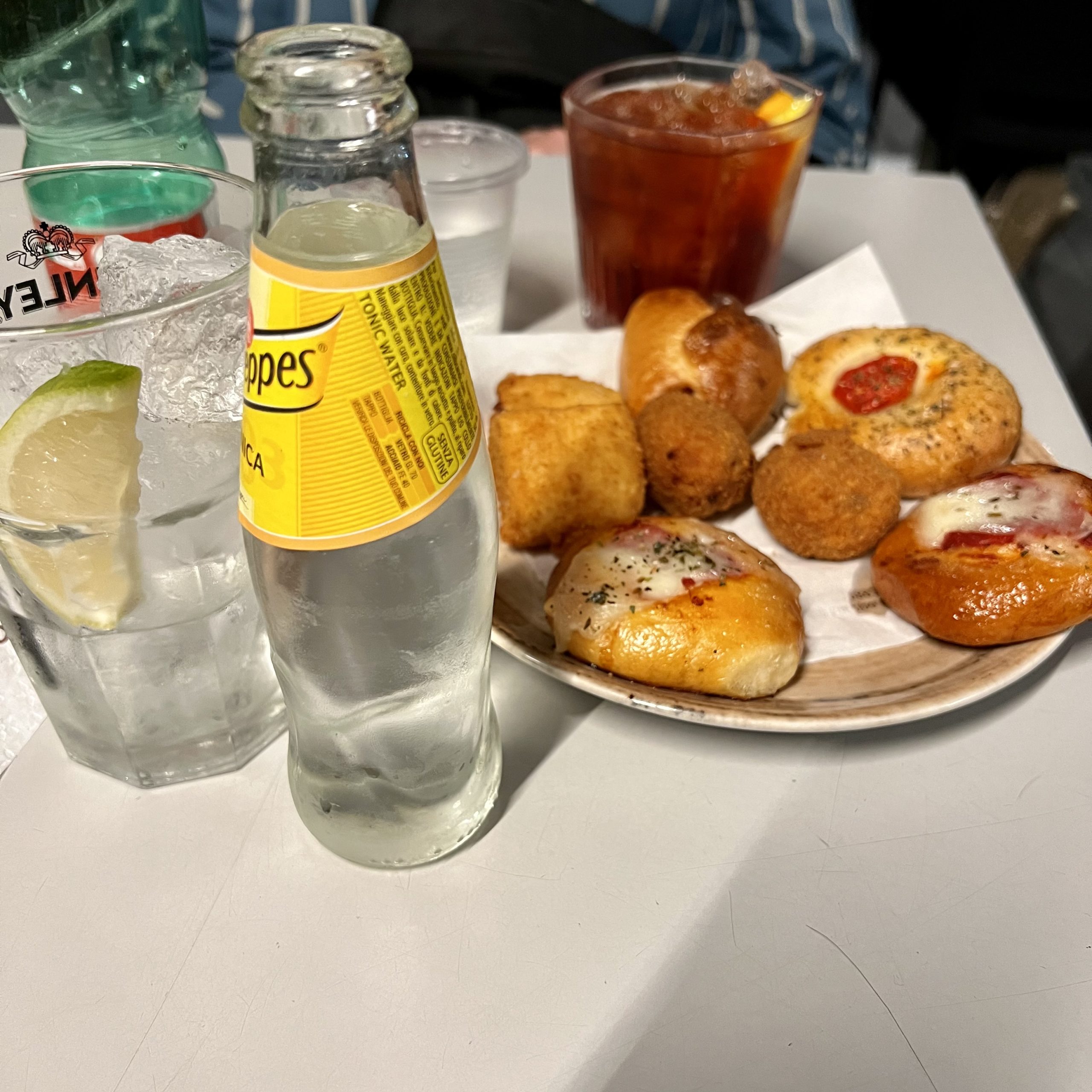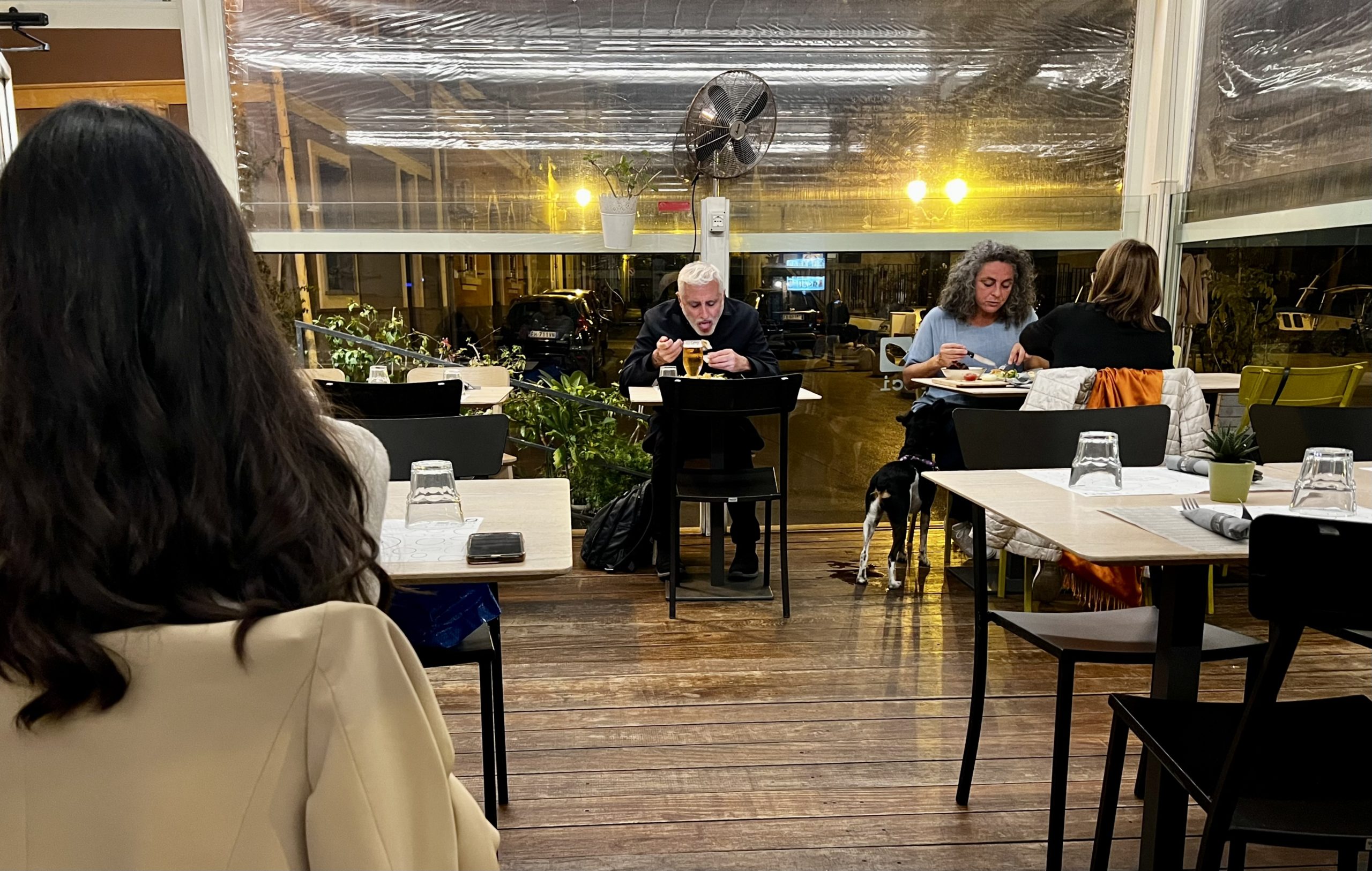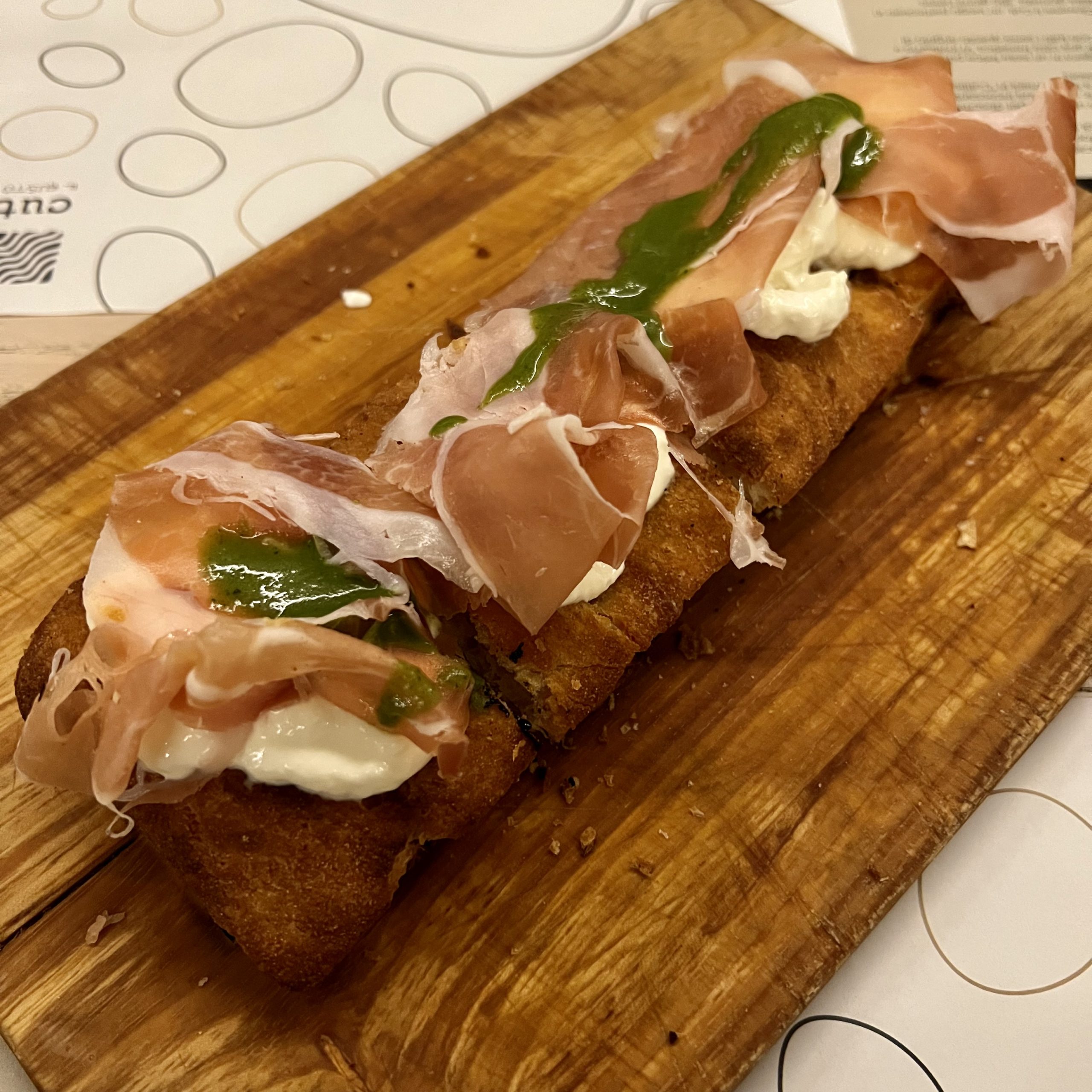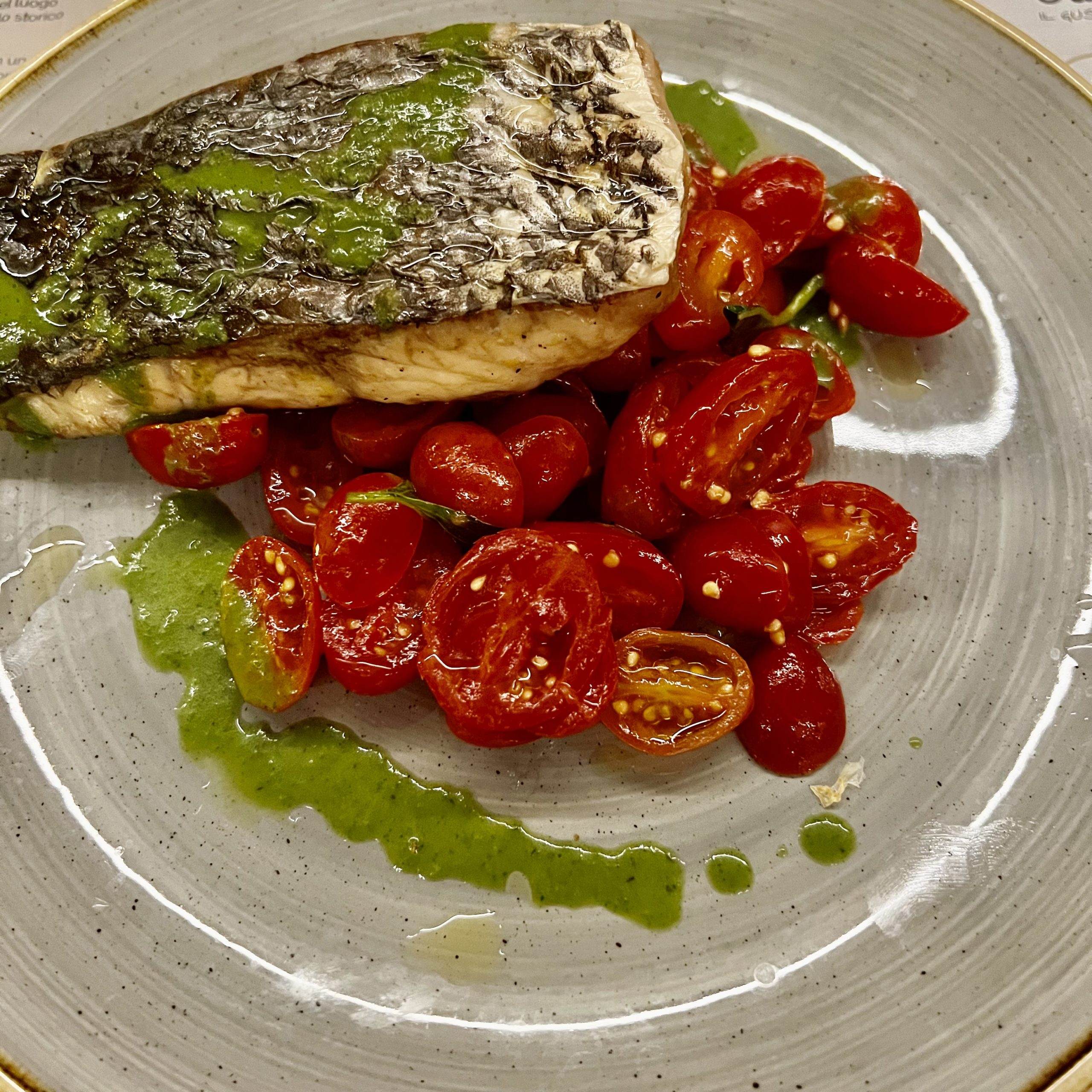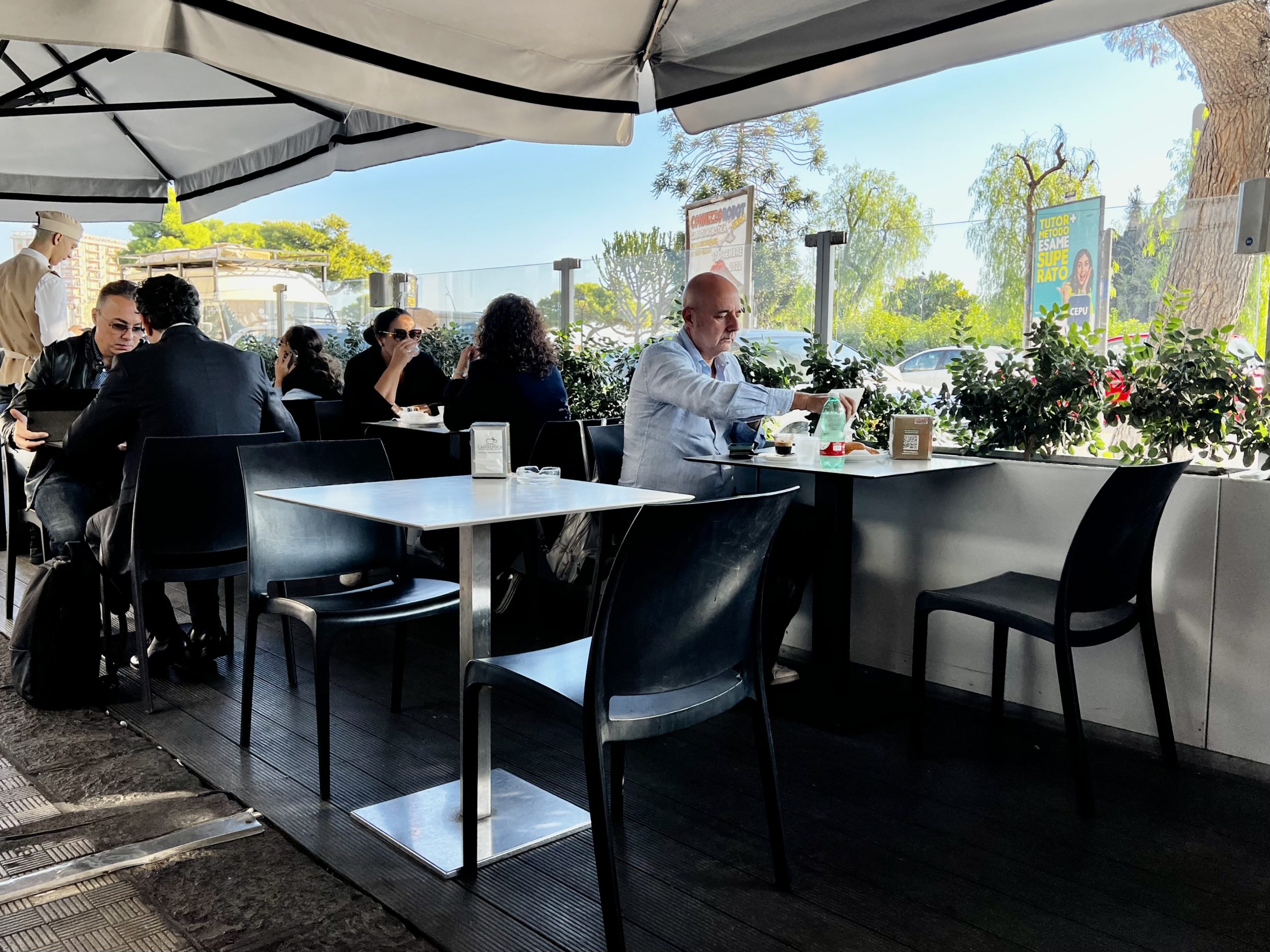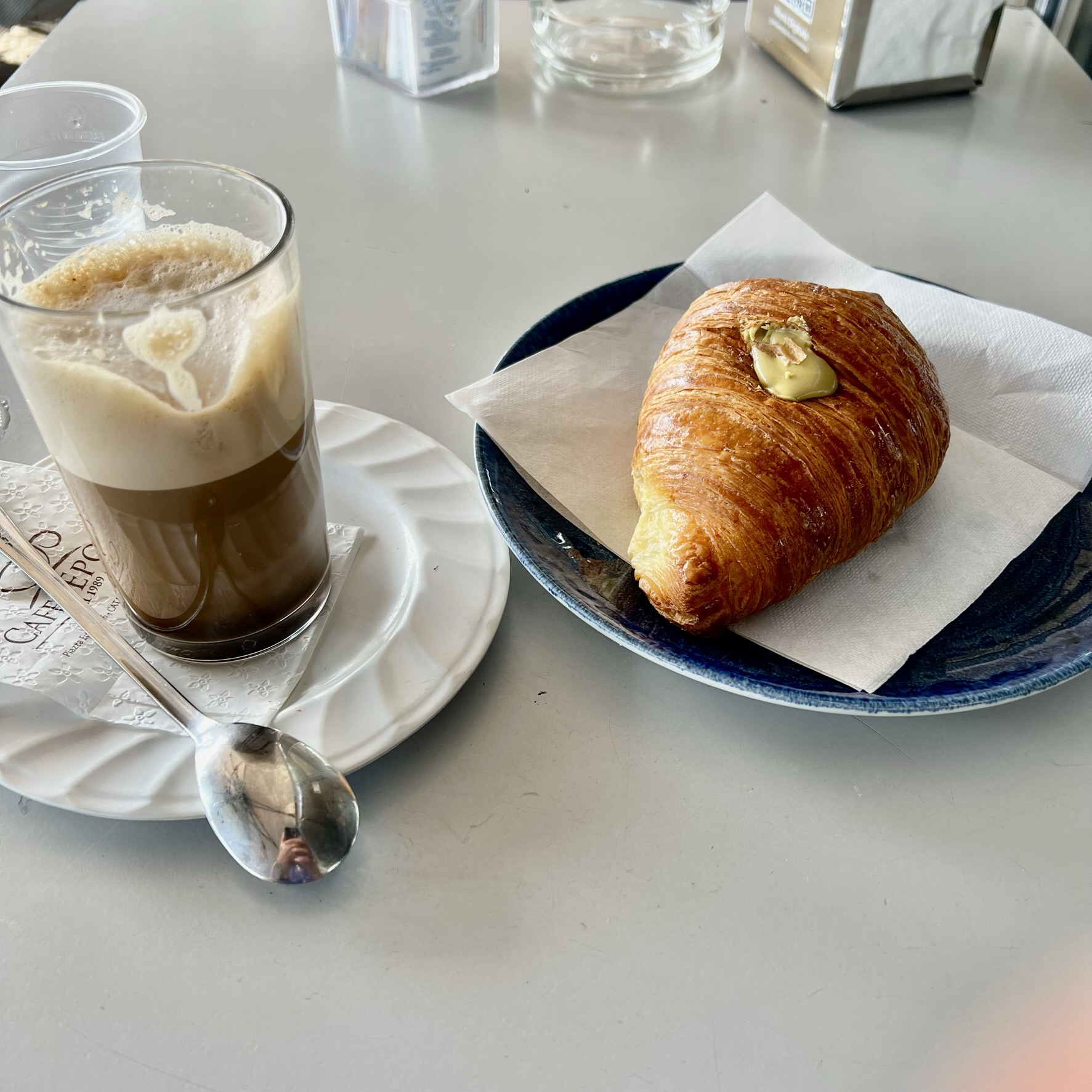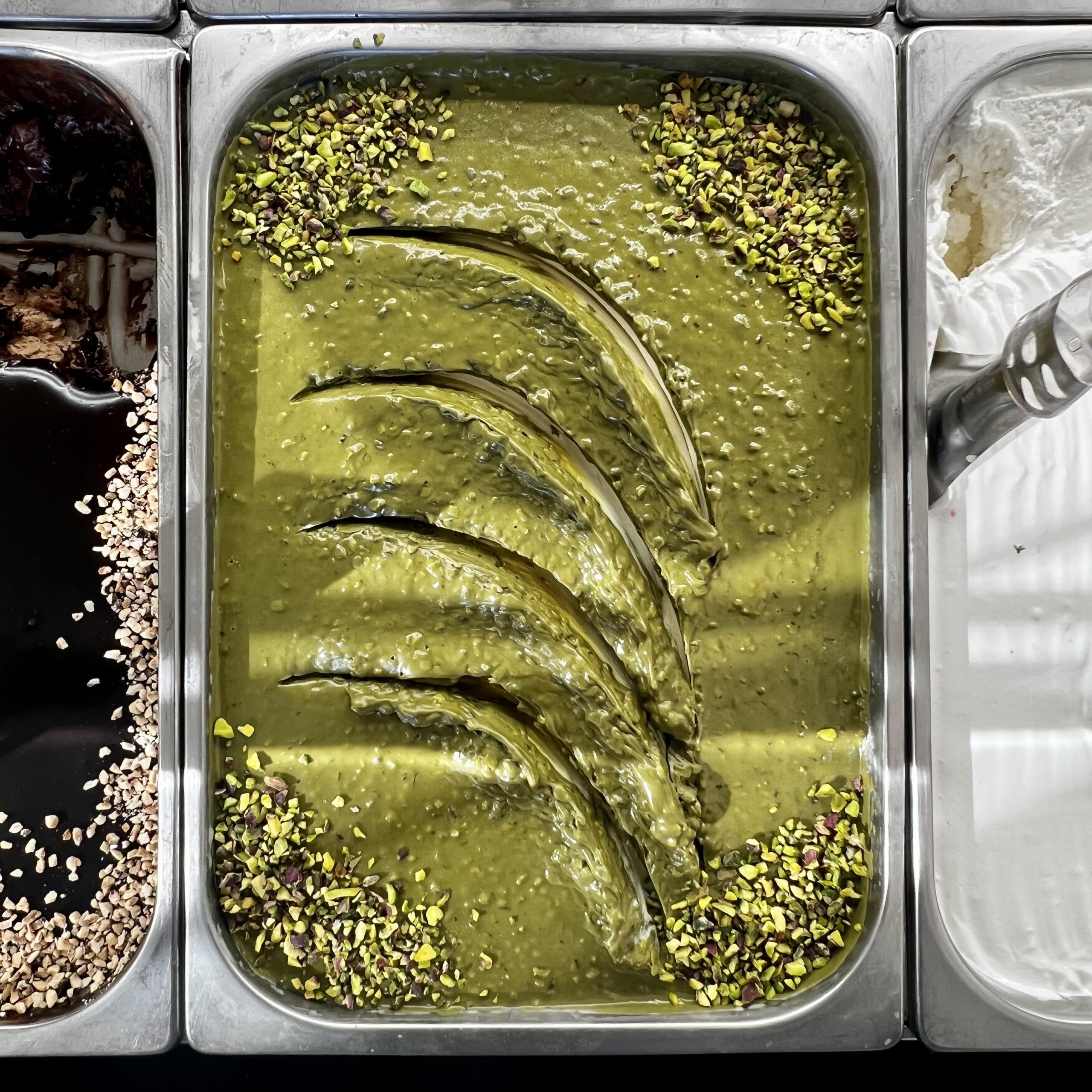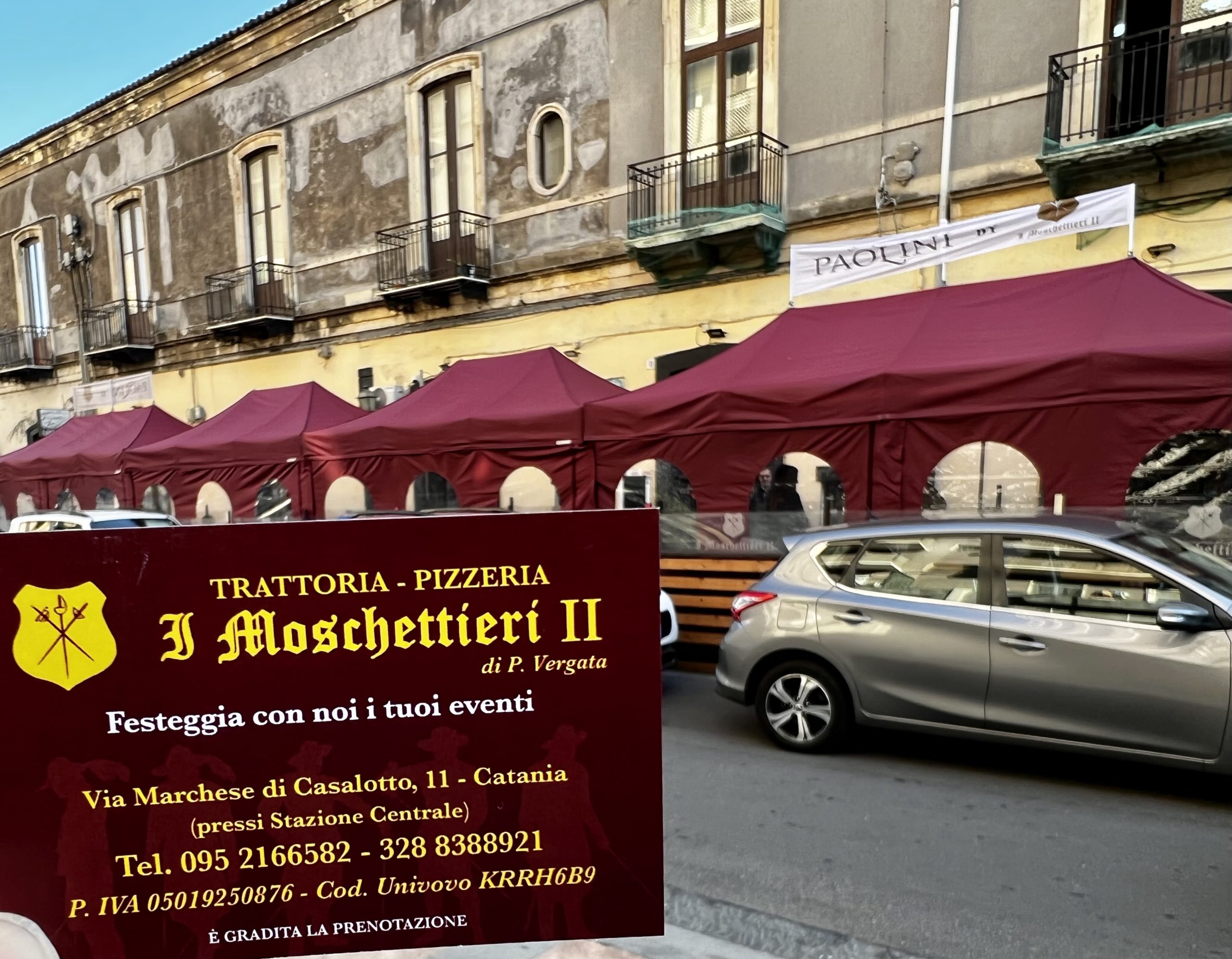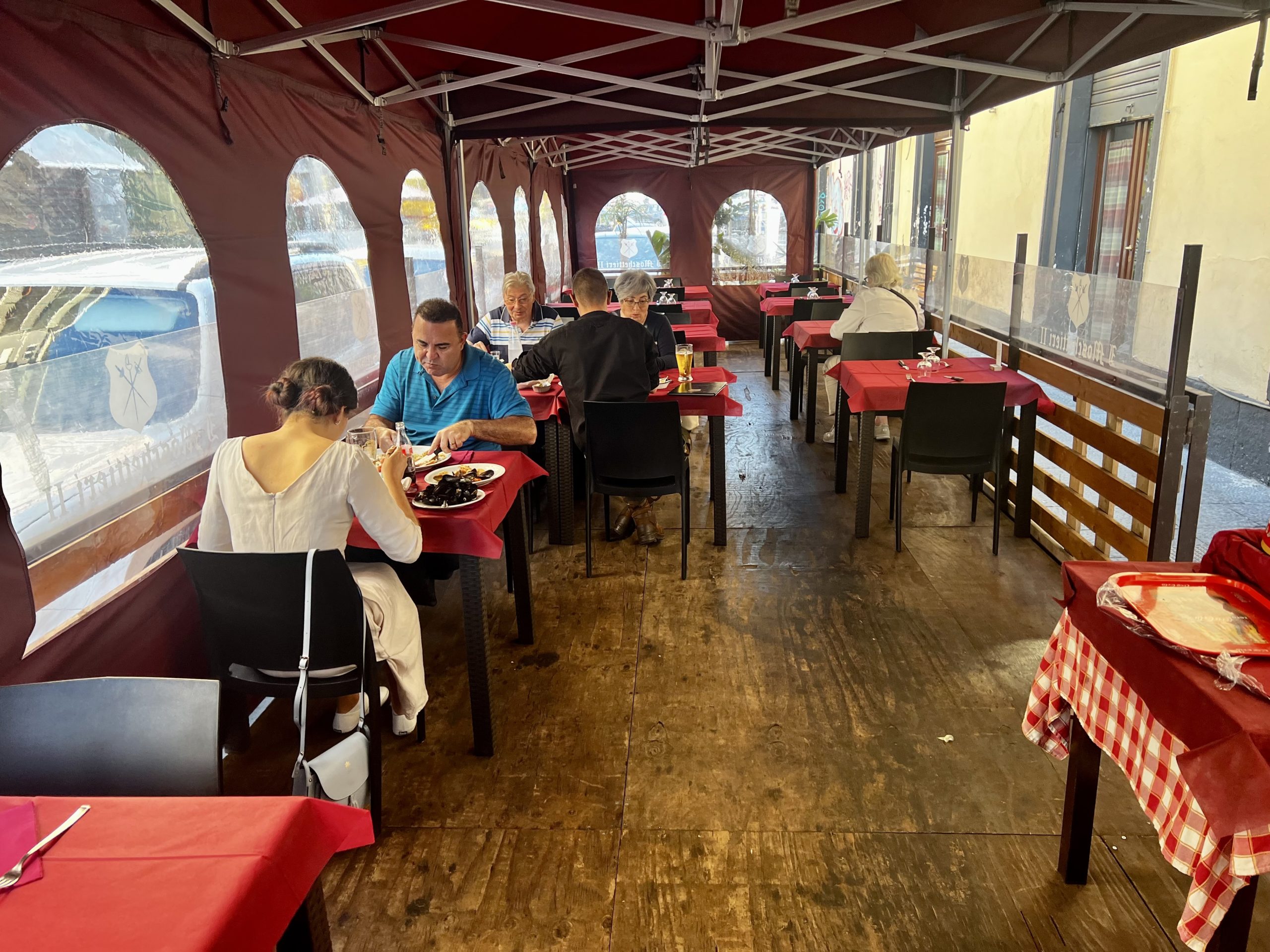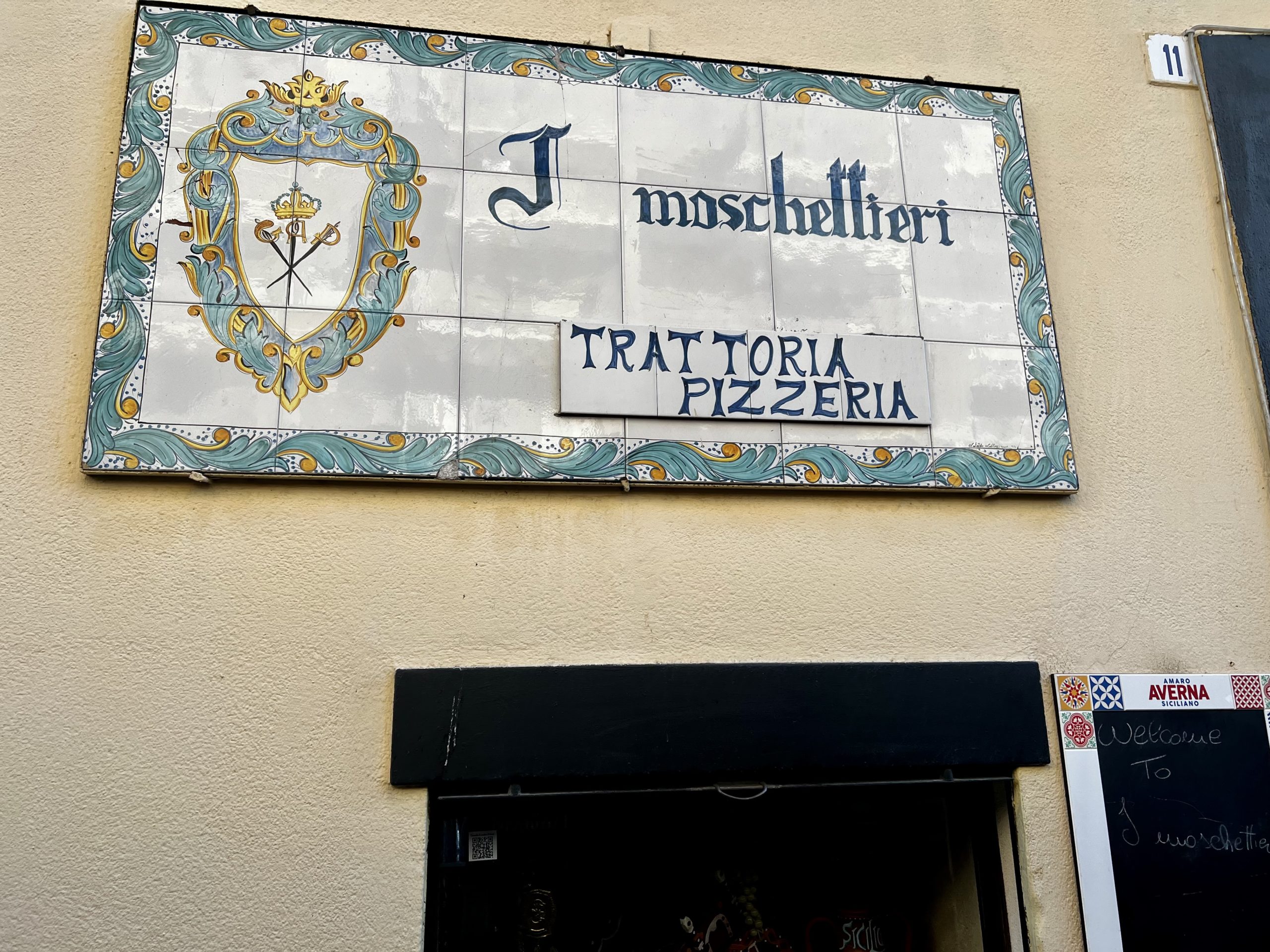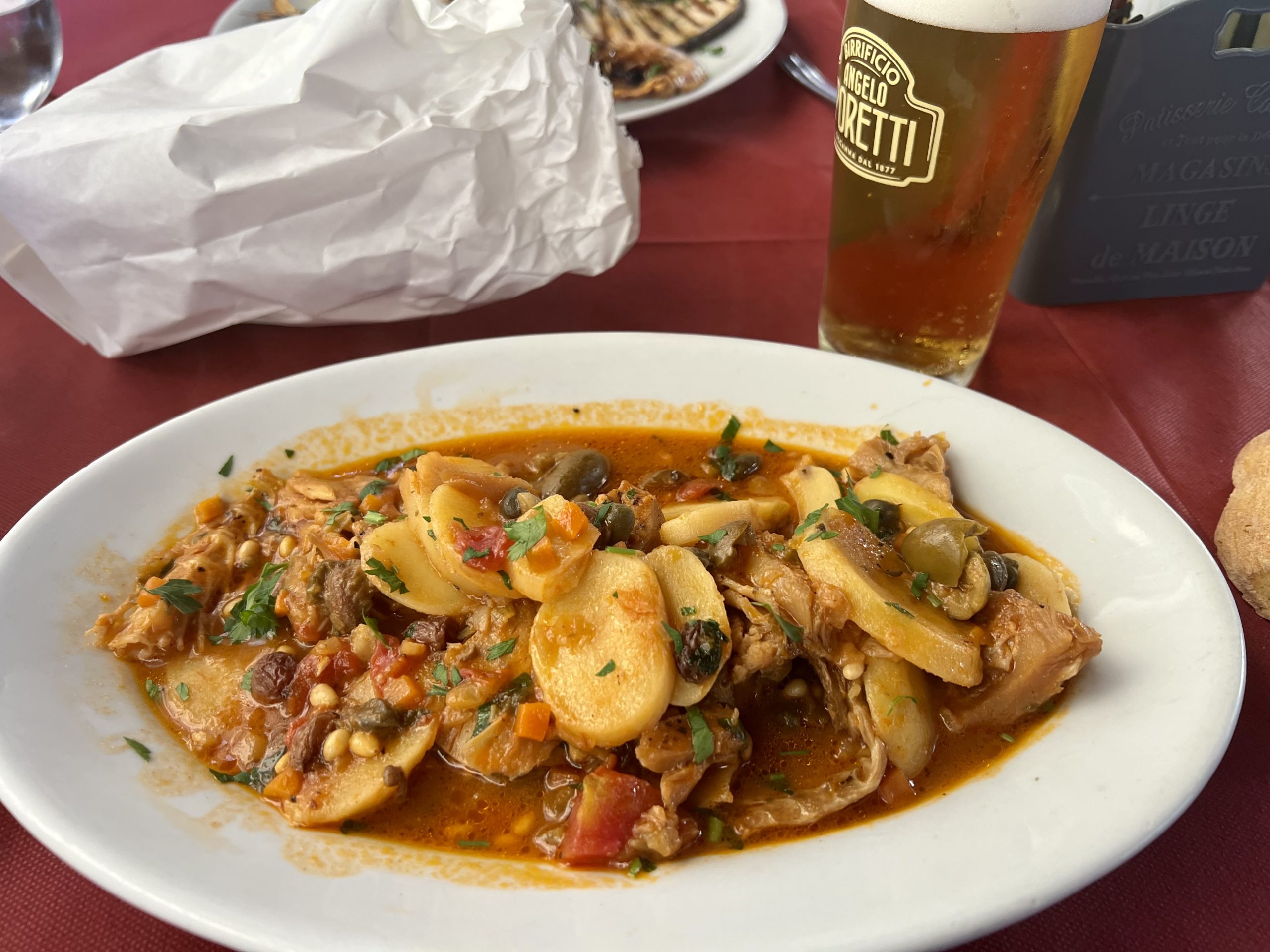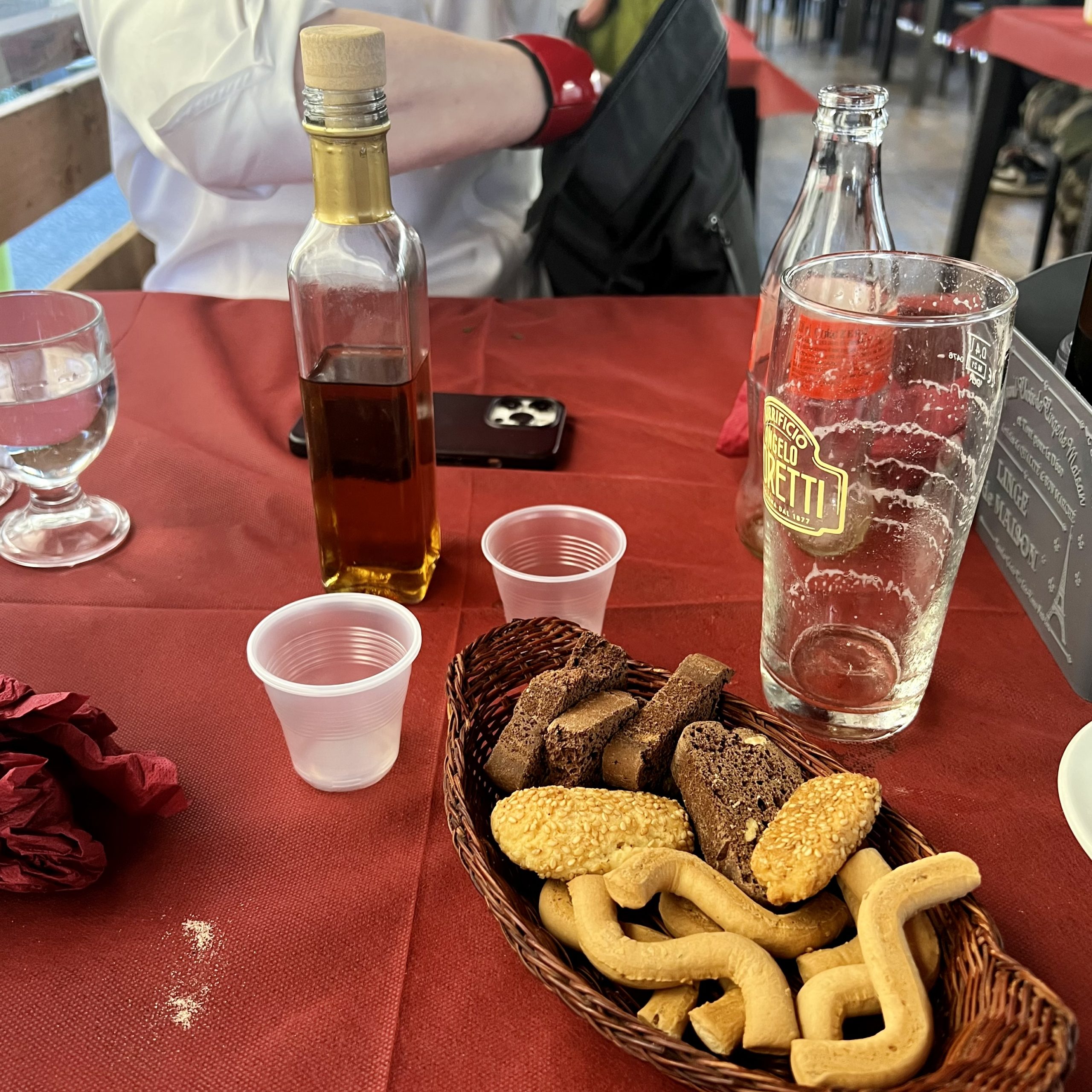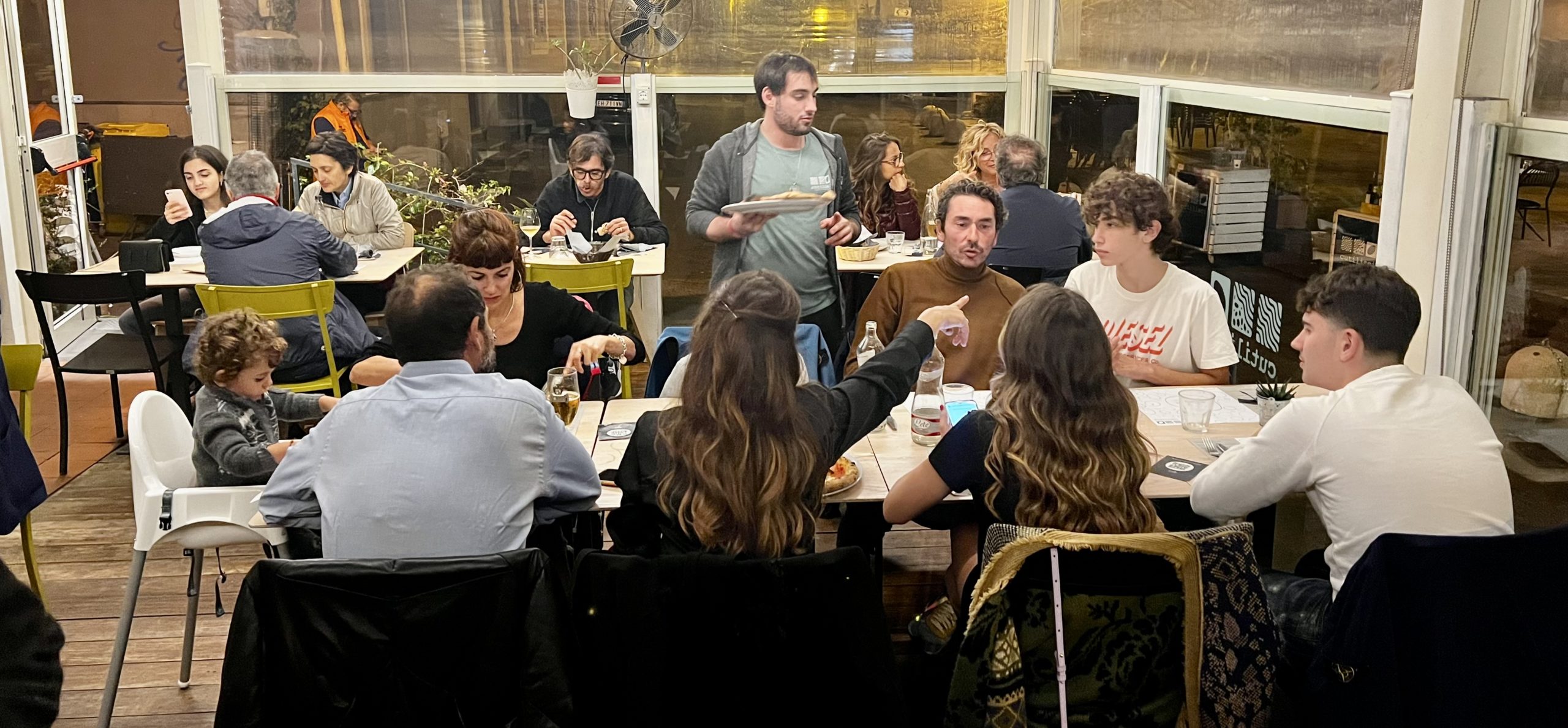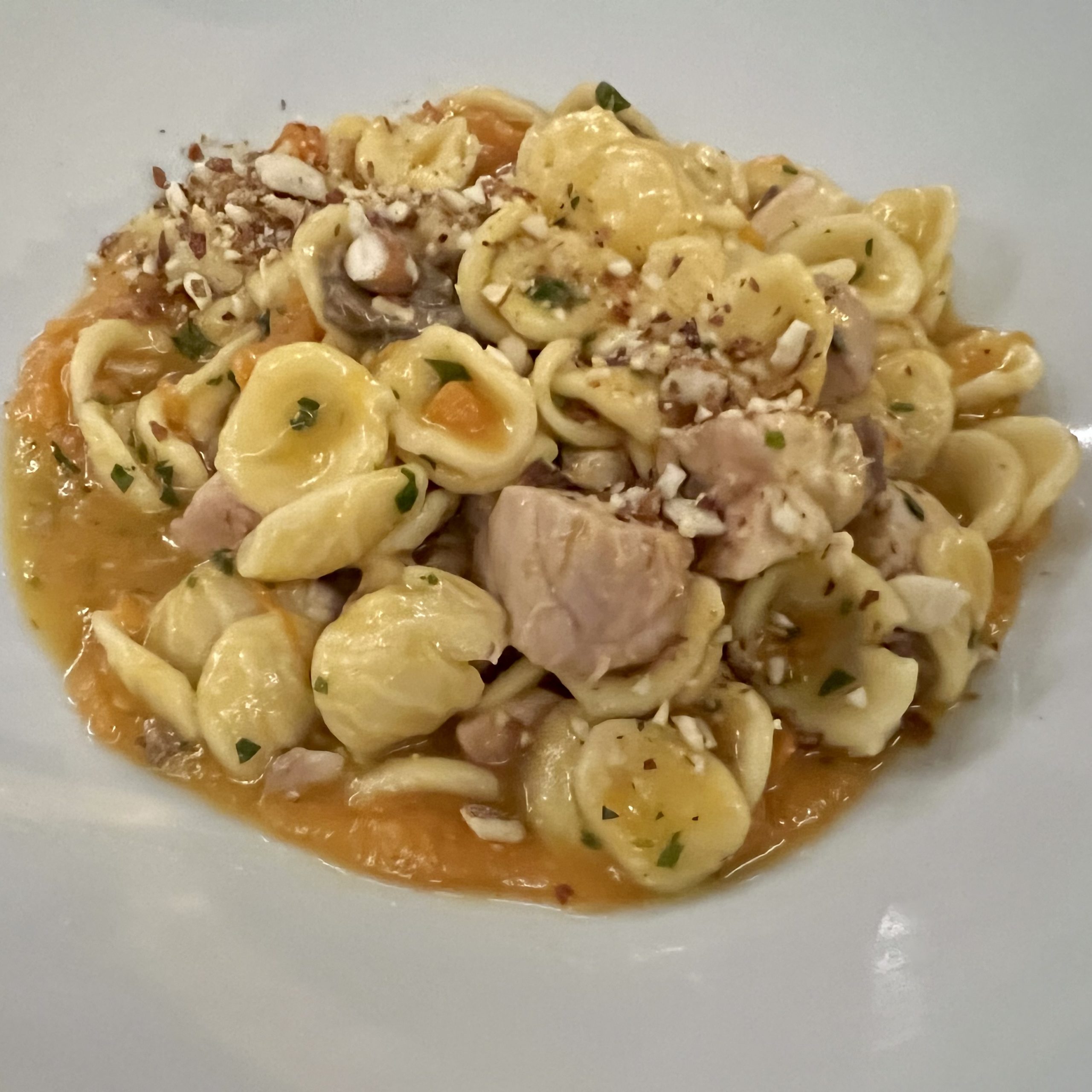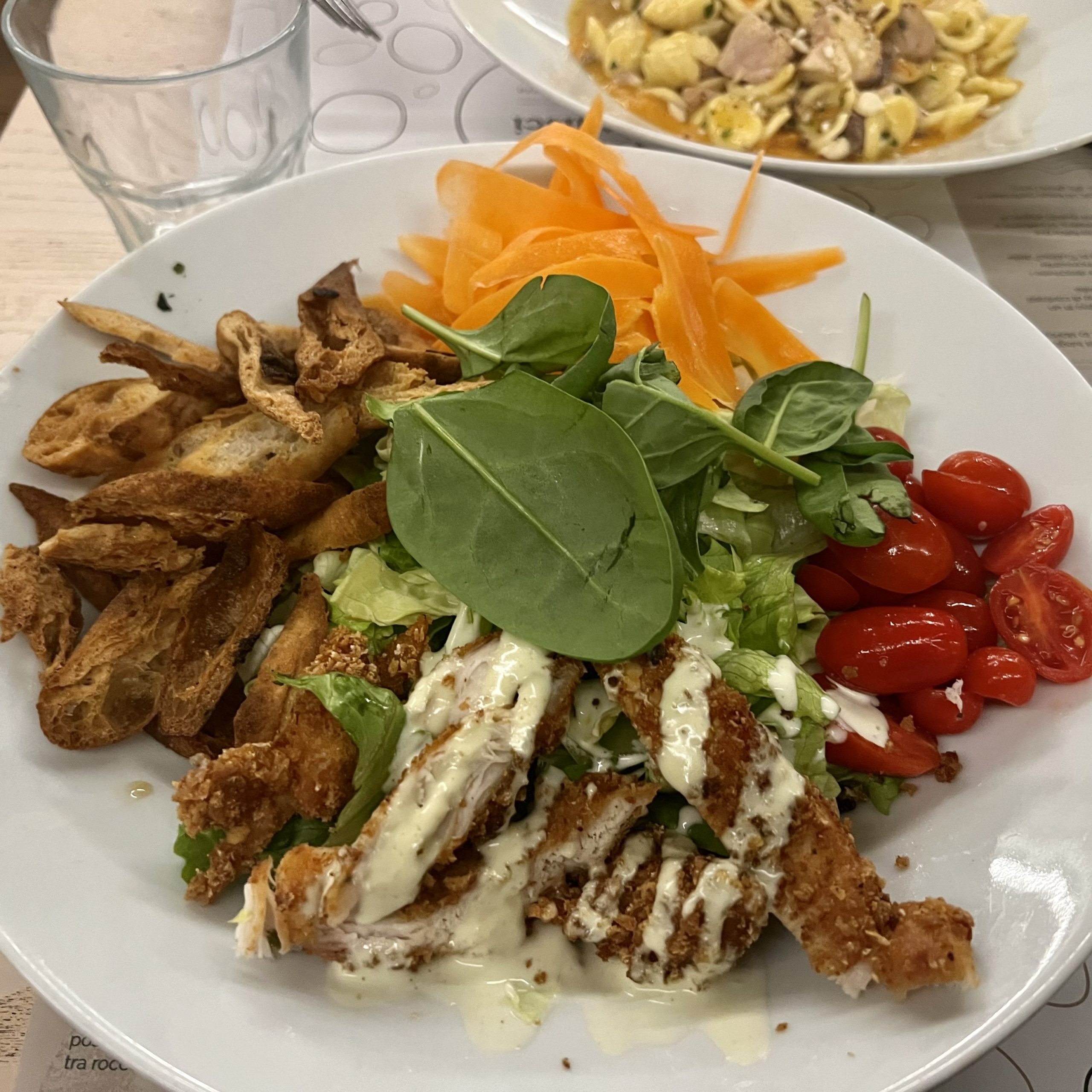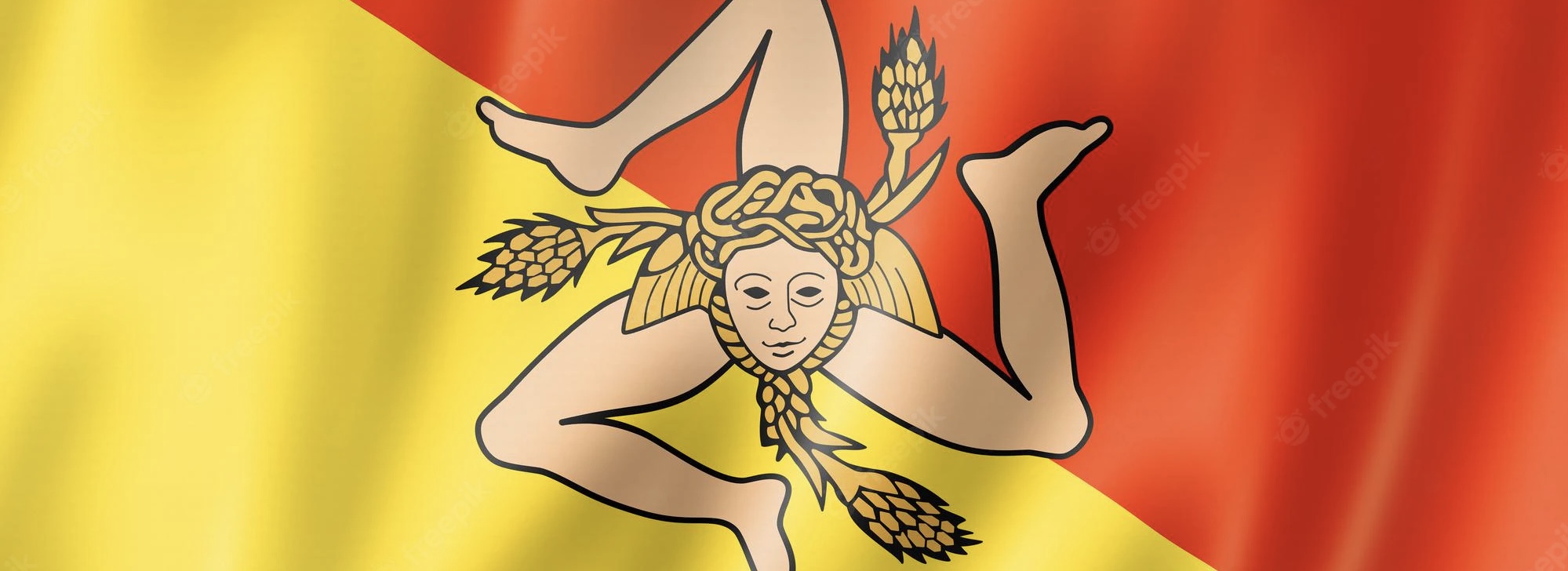08-10 November 2022
Cantania, our first stop in Sicily, with one purpose—to visit the Museo Storico della Sbarco in Sicilia 1943. The museum is devoted to the Allied landings and freeing of Sicily of the Axis forces. Along with our visit to Anzio it helped us immensely to understand the path of Robert’s Uncle Rico during WWII. Well worth a visit. You can refer to the separate post on Rico during WWII published on 11 November 2022.
Catania is a large gritty city. Think of Torino with an ocean view—the Ionian Sea—and a view of a volcano—Mount Etna. Located on the east coast of Sicily, it is second in size to Palermo with a city core population of 310,000. It has the largest airport in Southern Italy, which made Richard Loyd’s (Bonnie’s brother) flight from Milan convenient—we picked him up on our last day in Catania.
First founded in 729 BC, Catania is steeped in Greek mythology tied to Mount Etna’s eruptions. It was independent for a while, but then came under the control of the despot Hieron of Syracuse, followed by an alliance with Athens. Fast forward a few centuries and you will find the Romans conquering Catania during the first Punic War in 263 BC. And then rebel slaves conquered the city in 135 BC. Then it became part of the Islamic emirate, fell to the Normans, was sacked by German soldiers in the 1190s and went under the control of the Aragonese, becoming part of the Spanish empire in the early 16th century. Sicily’s first university was founded here in 1434. It was heavily bombed by Allied forces in WWII because it had the two main Axis airfields. Despite all this, Catania grew and prospered even with the presence of the Mafia.
After a couple of hours at the museum, we managed still to do an afternoon walk to the main city square to see a few churches and observe the natives in action. Like a lot of Sicily, Catania has it share of Spanish baroque churches that were built after the devastating earthquake that struck the island in 1693. Being close to Etna did not help the city either, as it was almost buried in an eruption in 1669. Talk about living on the edge.
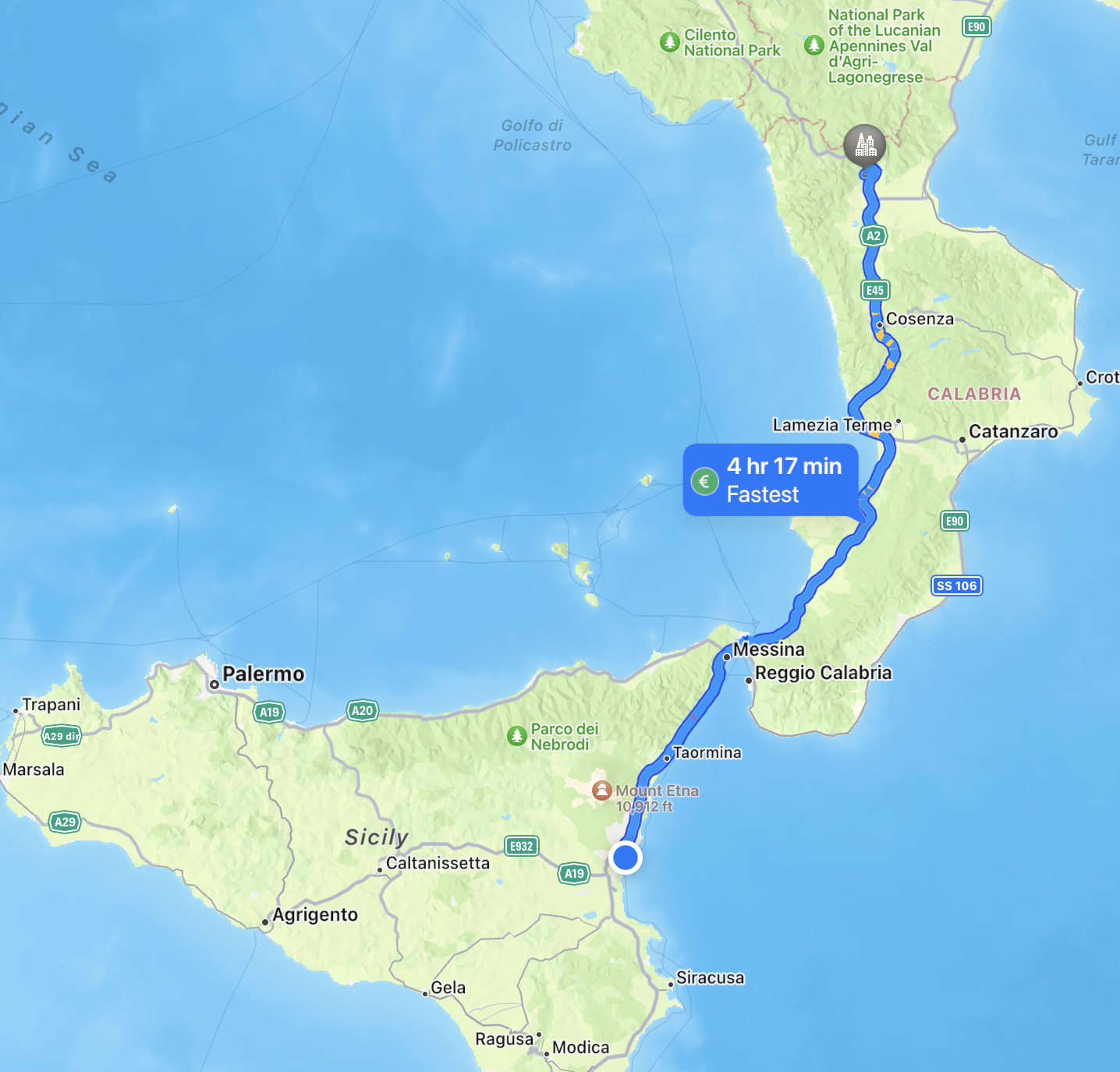
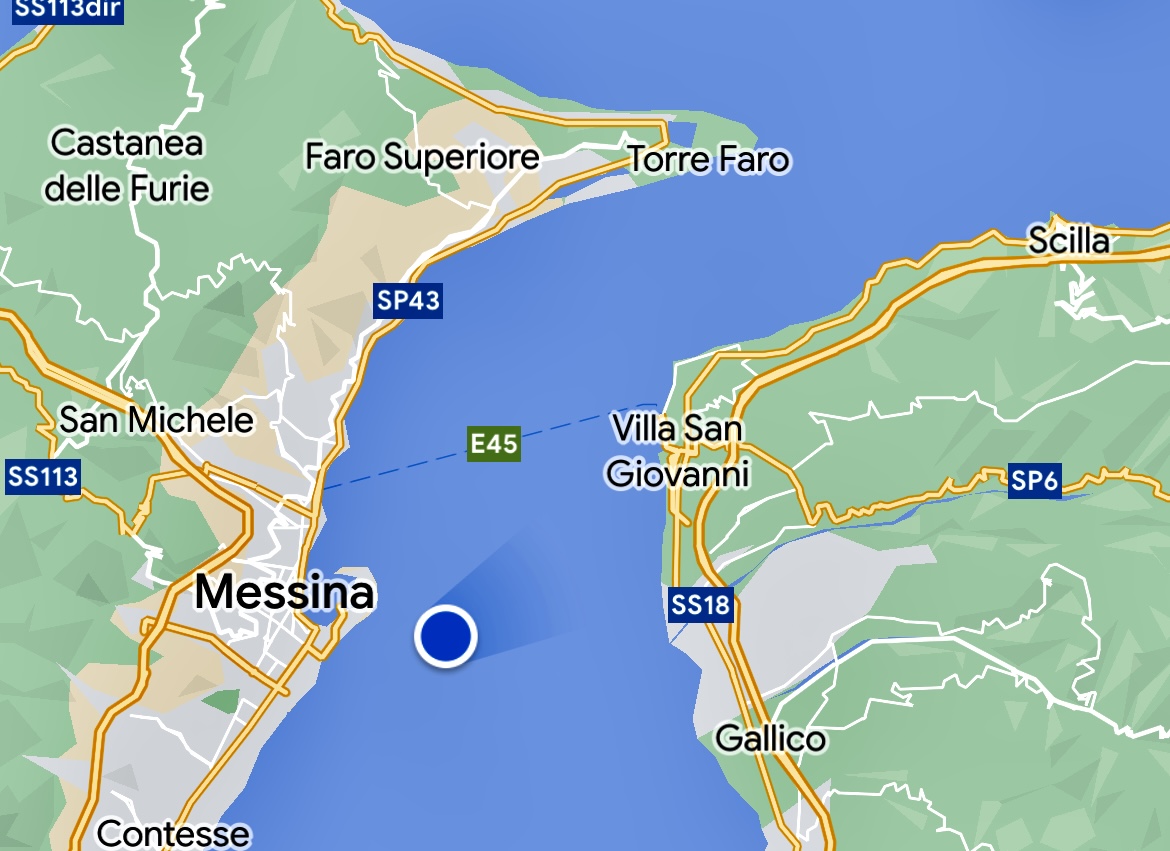
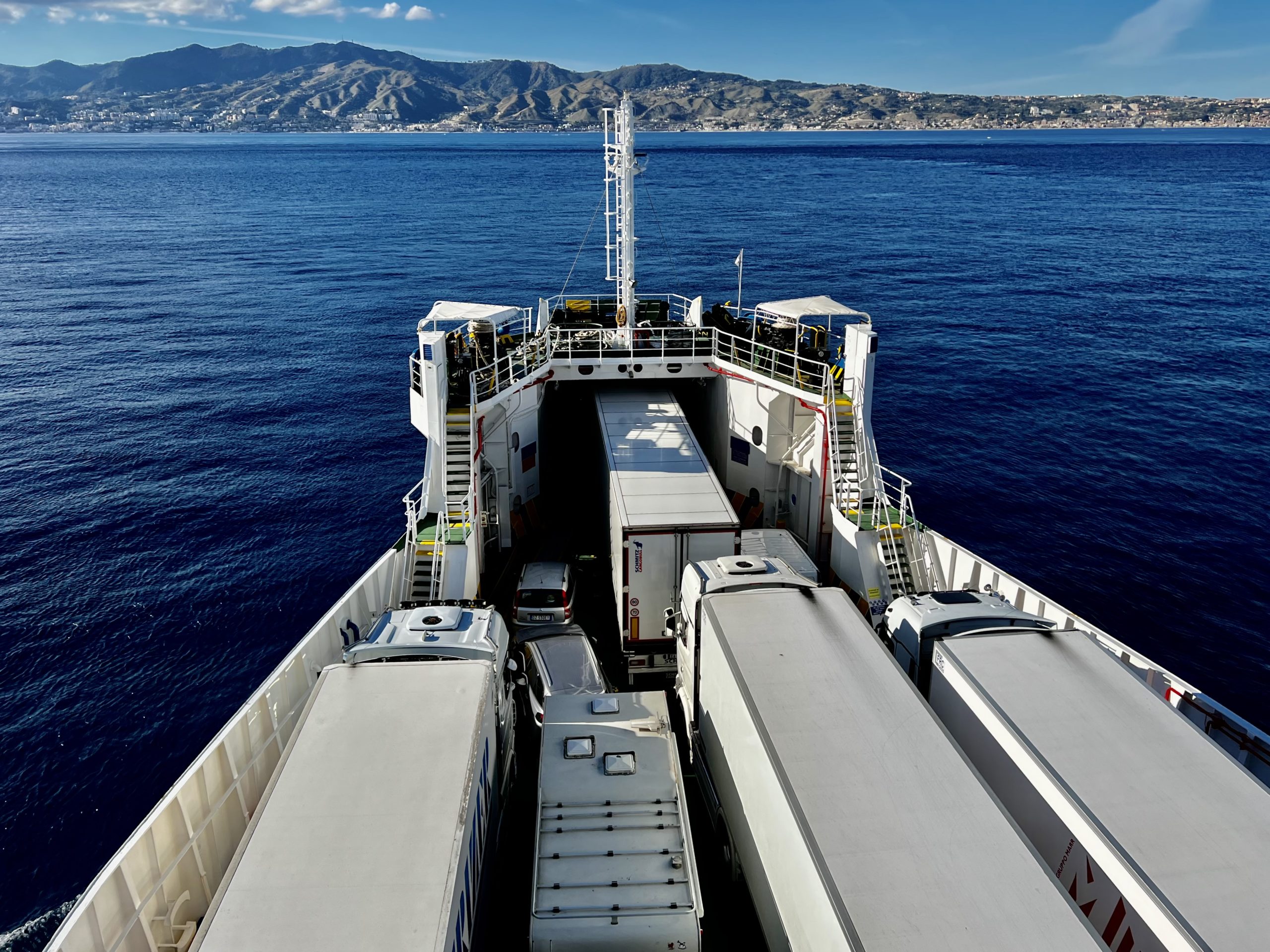
Flag of Sicily
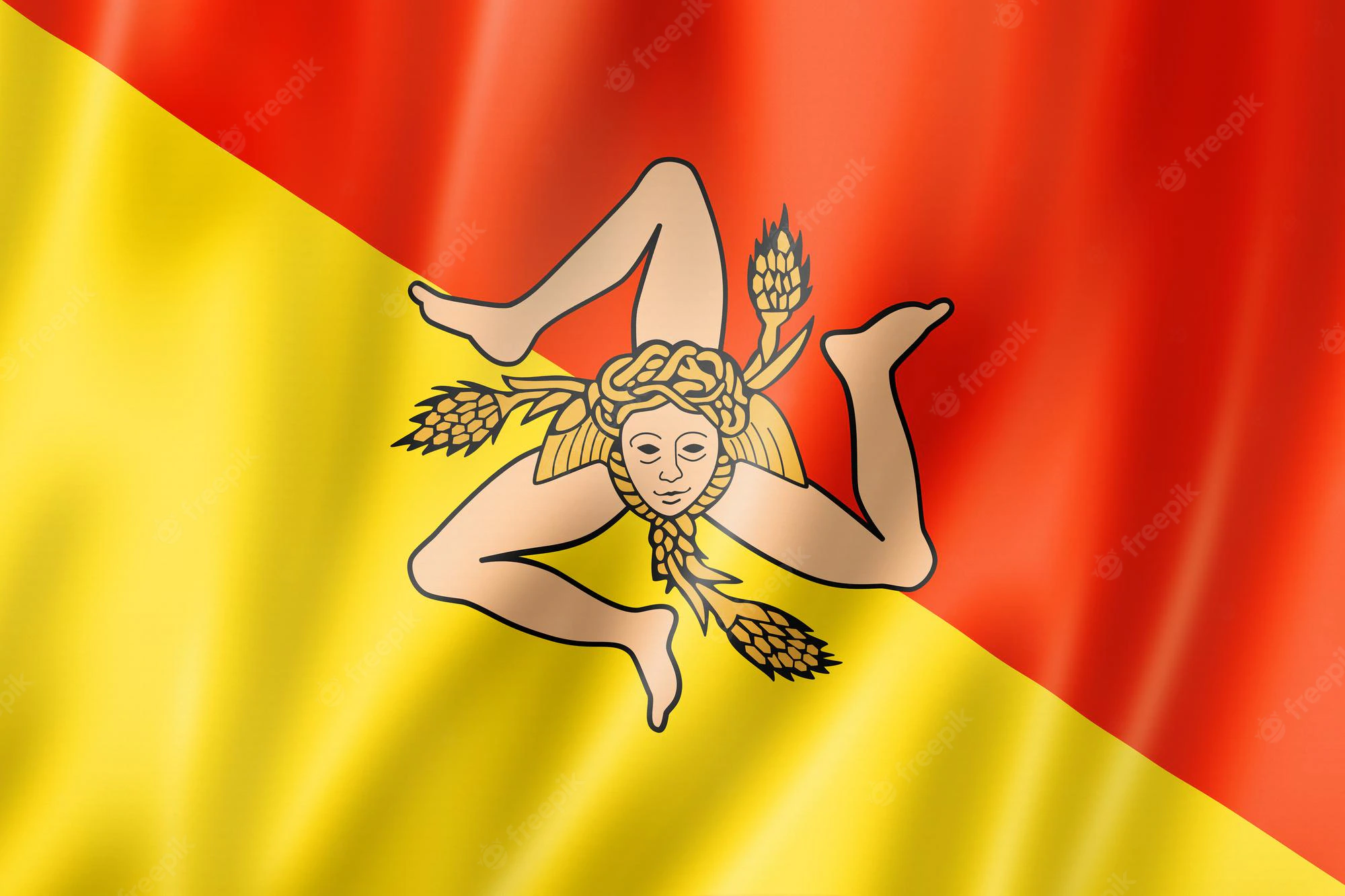
The flag is characterized by the presence of the triskeles in its middle, the (winged) head of Medusa and three wheat ears, representing the extreme fertility of the land of Sicily,[1] The triskelion symbol is said to represent the three capes (headlandsor promontories of the island of Sicily), namely: Pelorus (Peloro, Tip of Faro, Messina: North-East); Pachynus (Passero, Syracuse: South); and Lilybæum (Lilibeo, Cape Boeo, Marsala: West), which form three points of a triangle from the historical three valli of the island.
The flag is bisected diagonally into regions colored red, the colour of Palermo and yellow, the colour of Corleone. These are the two cities that started the revolution of the Sicilian Vesper. The flag was used during the medieval revolution of the Vespers. (From Wikipedia)
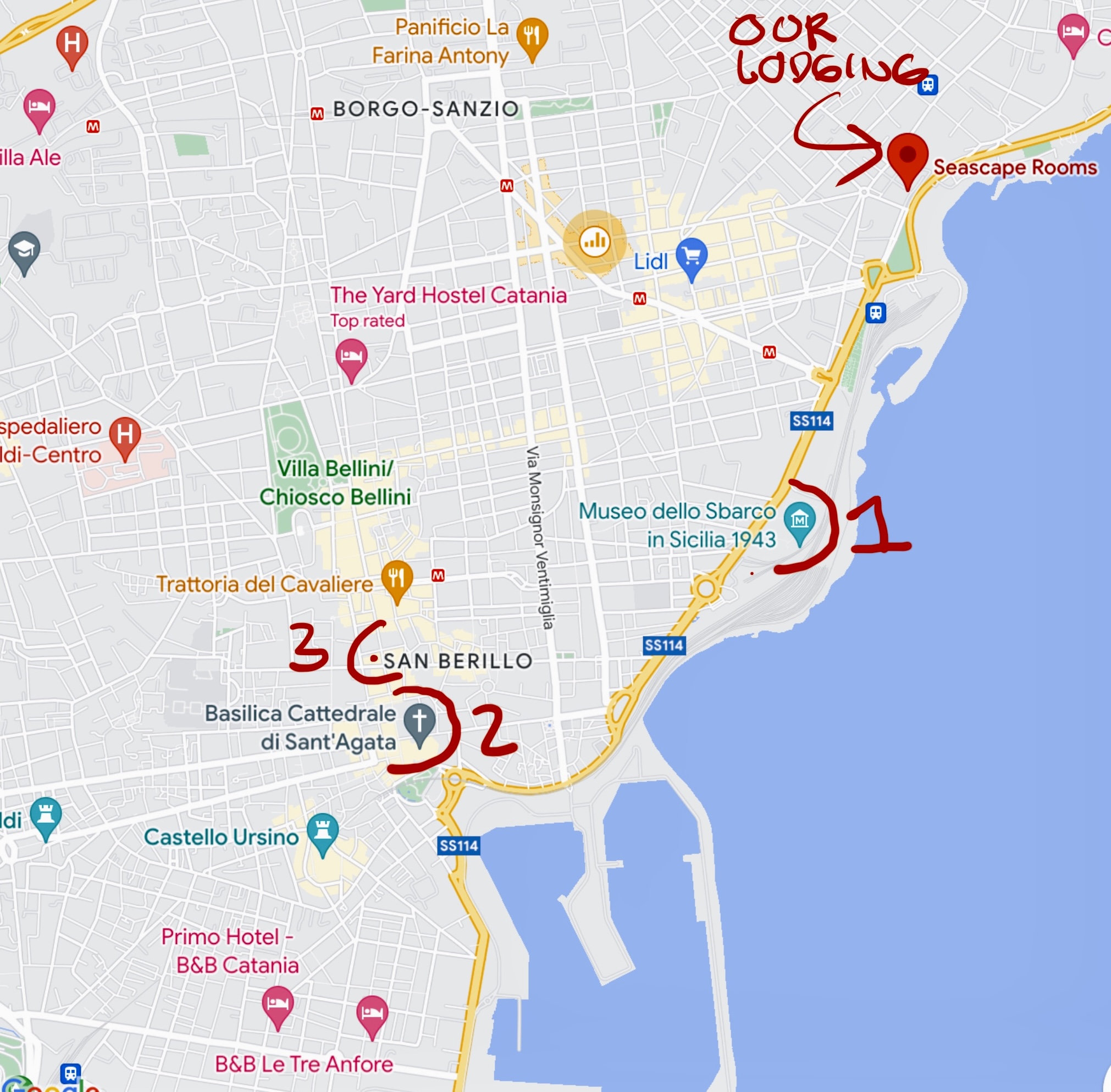
Lodging
We had great hosts. A young couple who opened two rooms for rent just three months ago. They carved space out at the end of their very large apartment and used an architect who did a terrific job. They live next door.
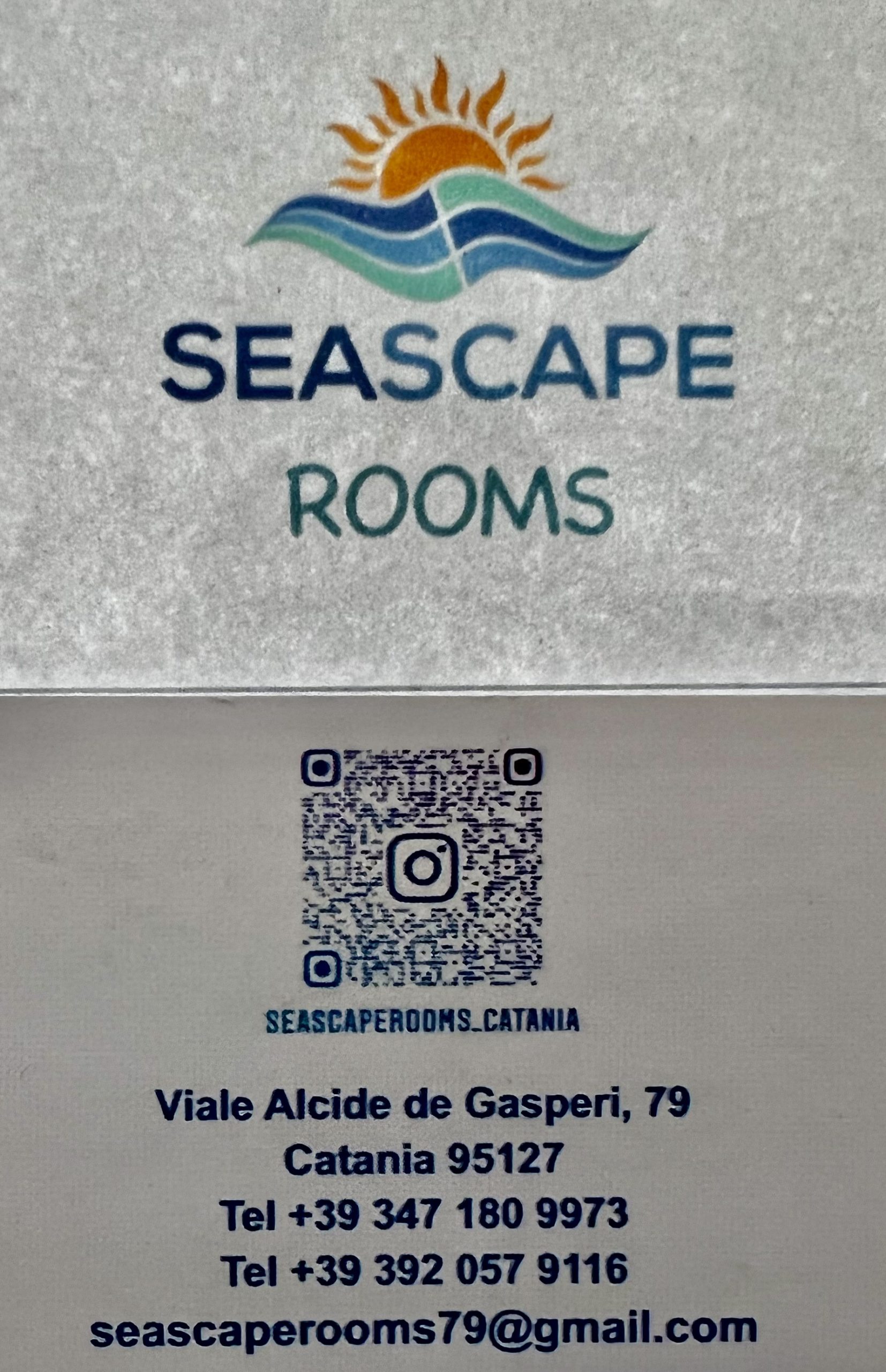
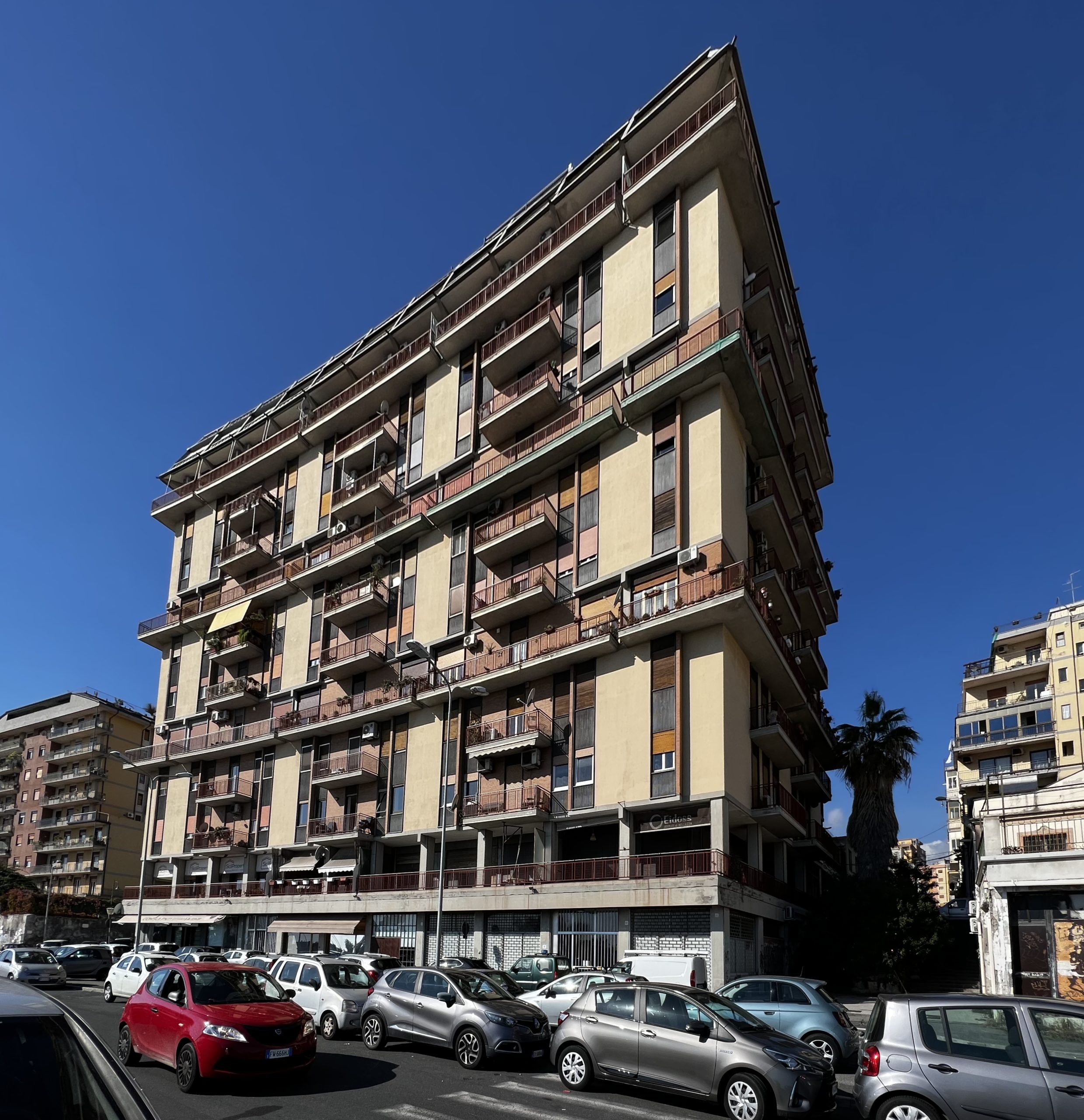

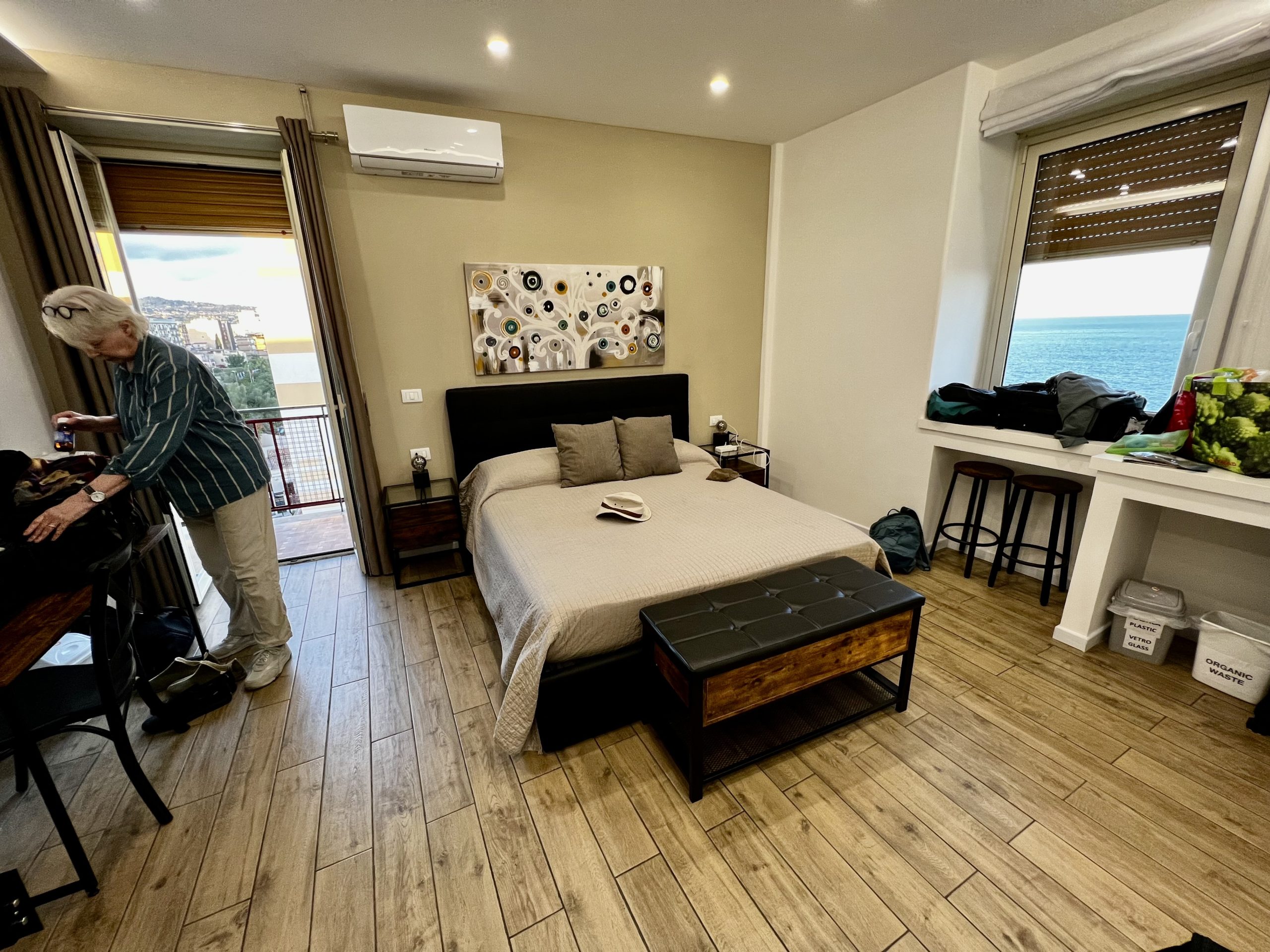
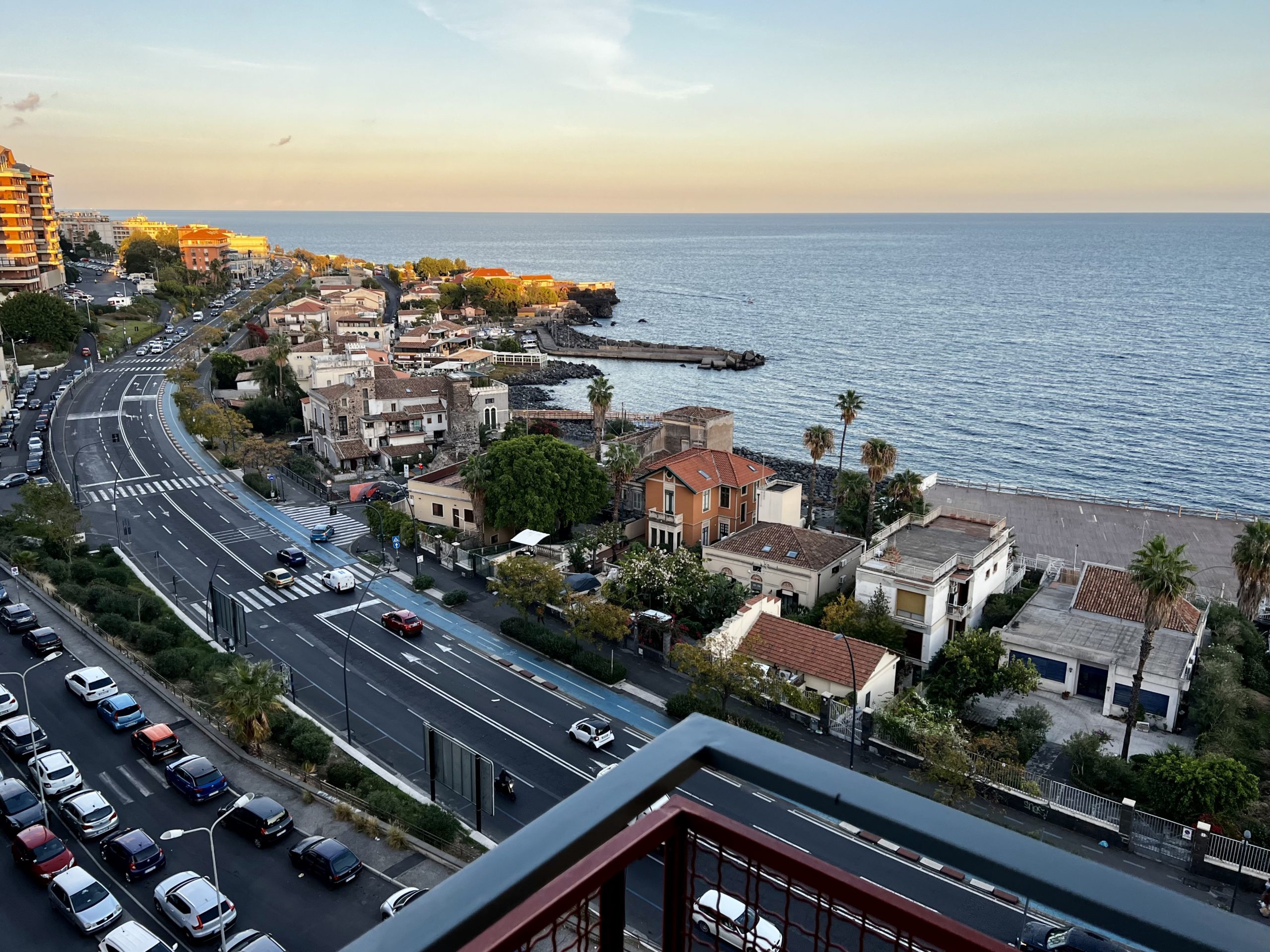
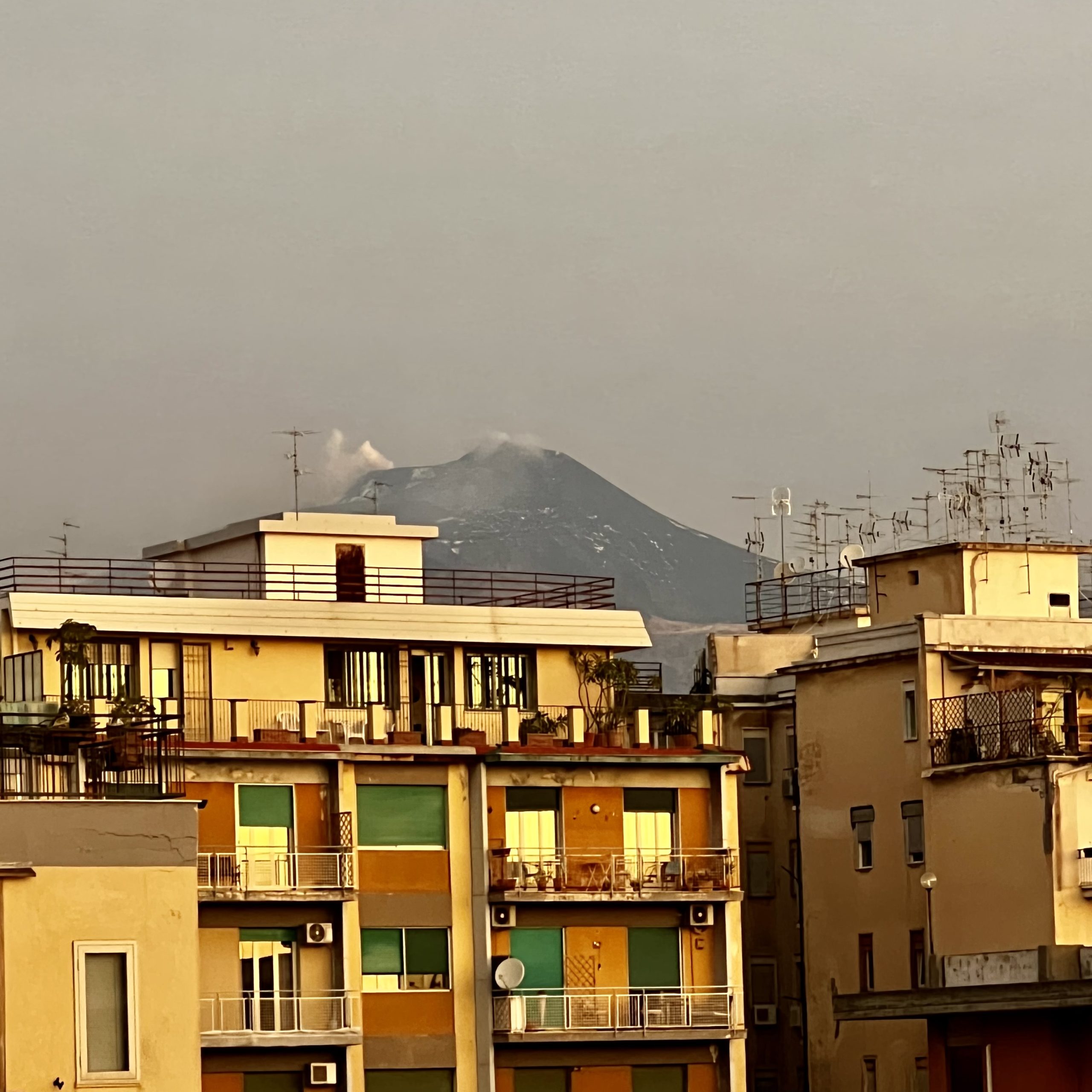
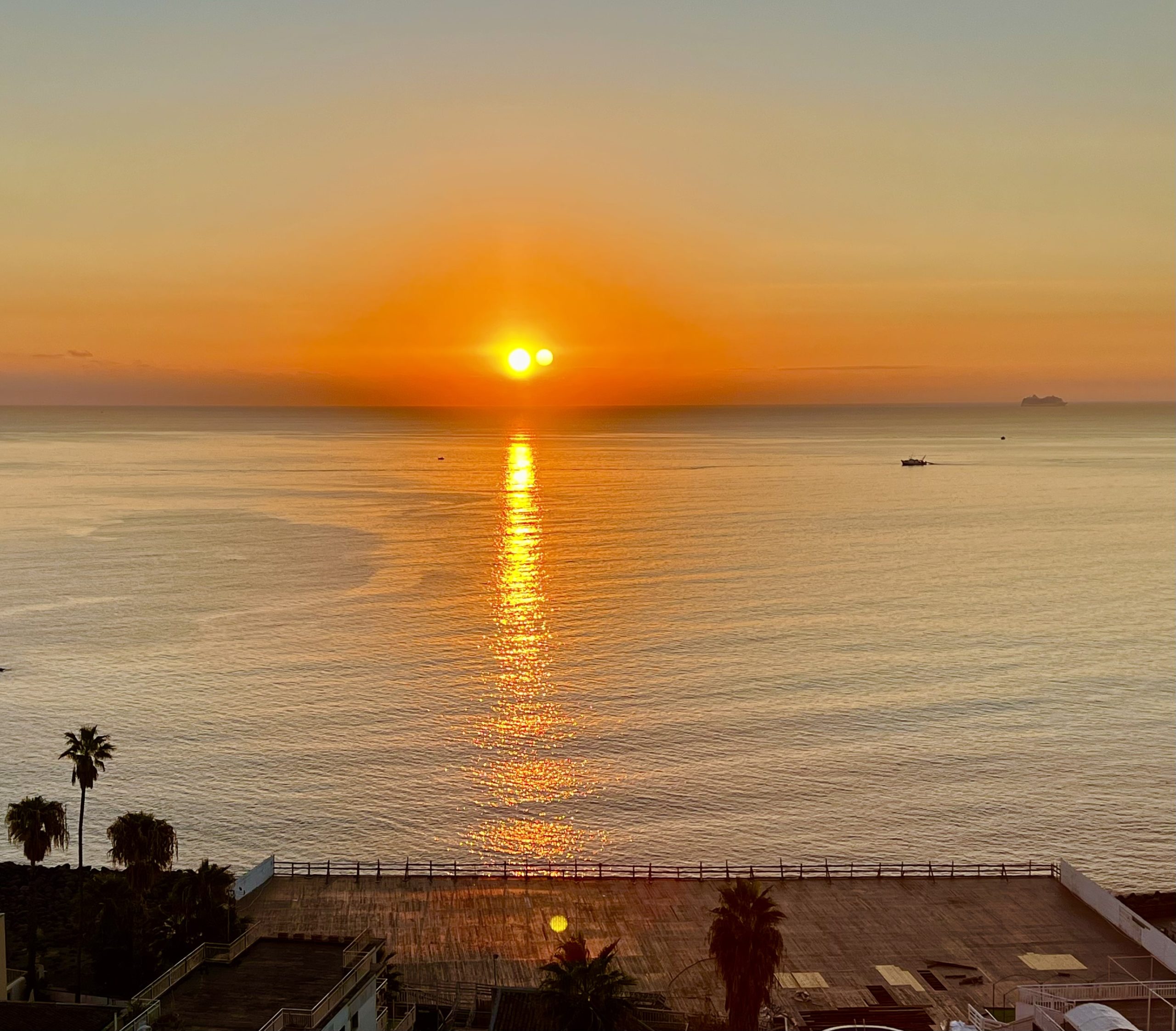

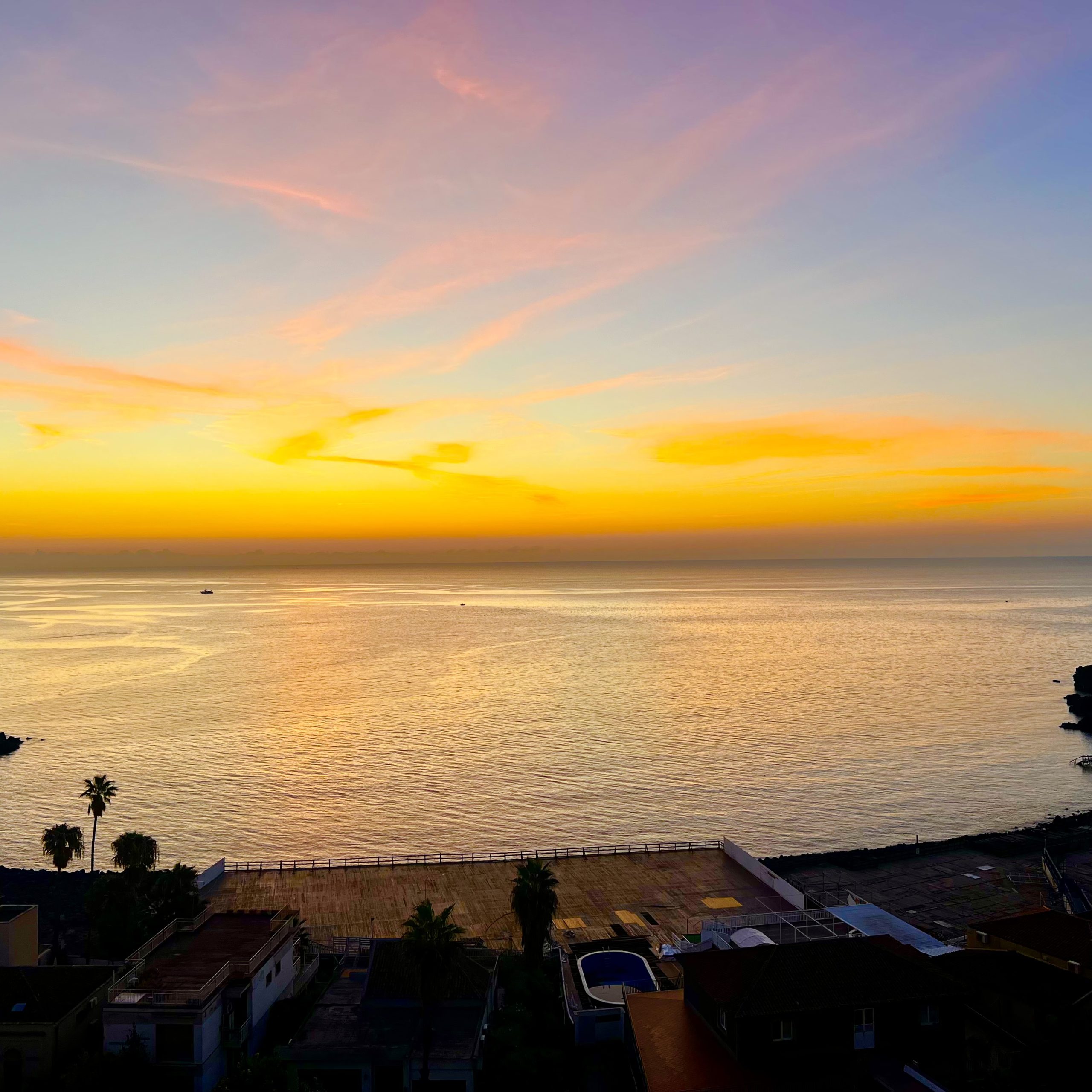
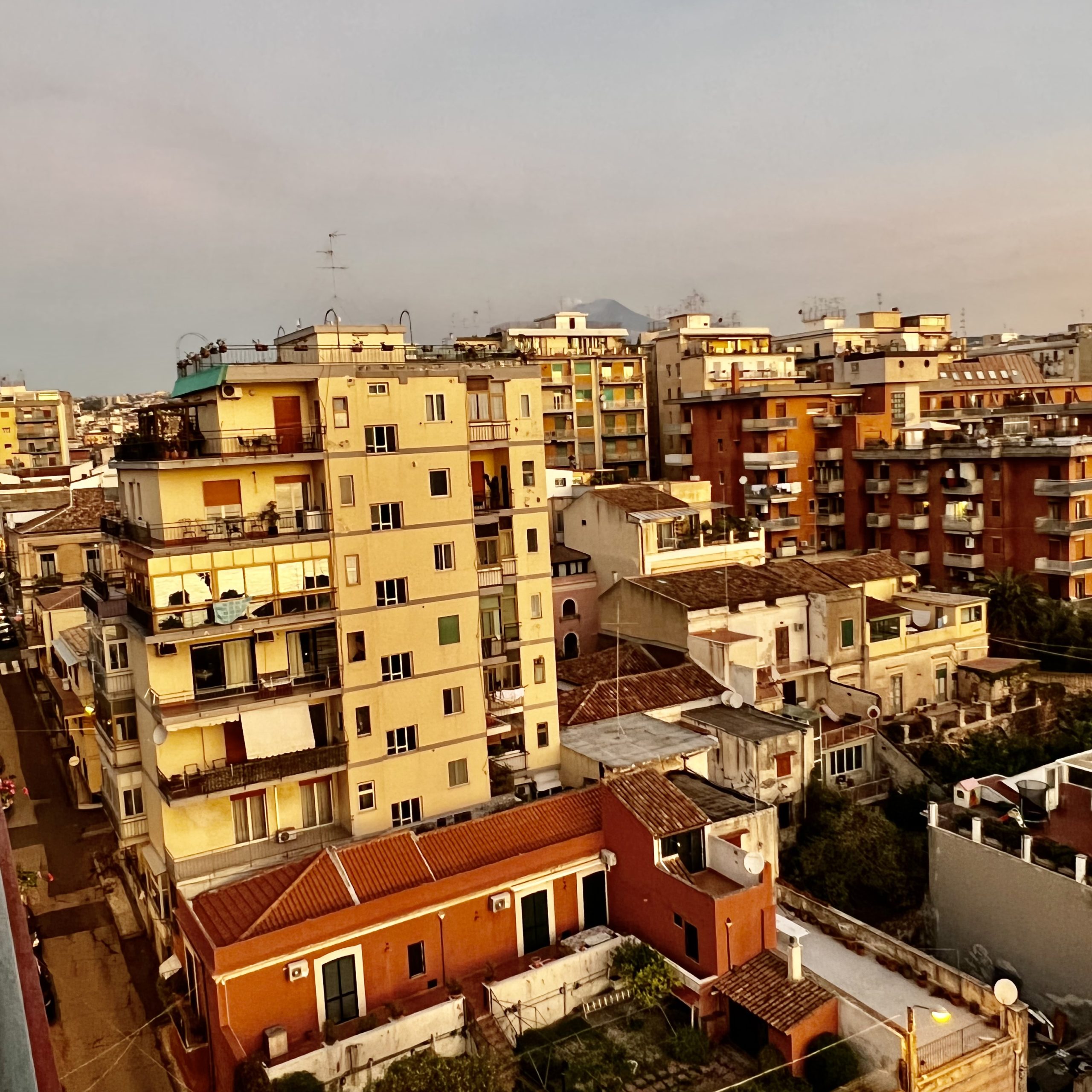
Observations
Smoking
Robert calculates that he has smoked about a pack of cigarettes on this trip by being too close to smokers. We do see Italians smoking regular cigarettes, but there’s a new phenomenon of smoking here. He first saw his cousin Gabriella using this device sold by Philip Morris and others. It heats the short roll of tobacco without igniting it, making a smokeless cigarette. Whether these are safer than cigarettes or not is up to further study.
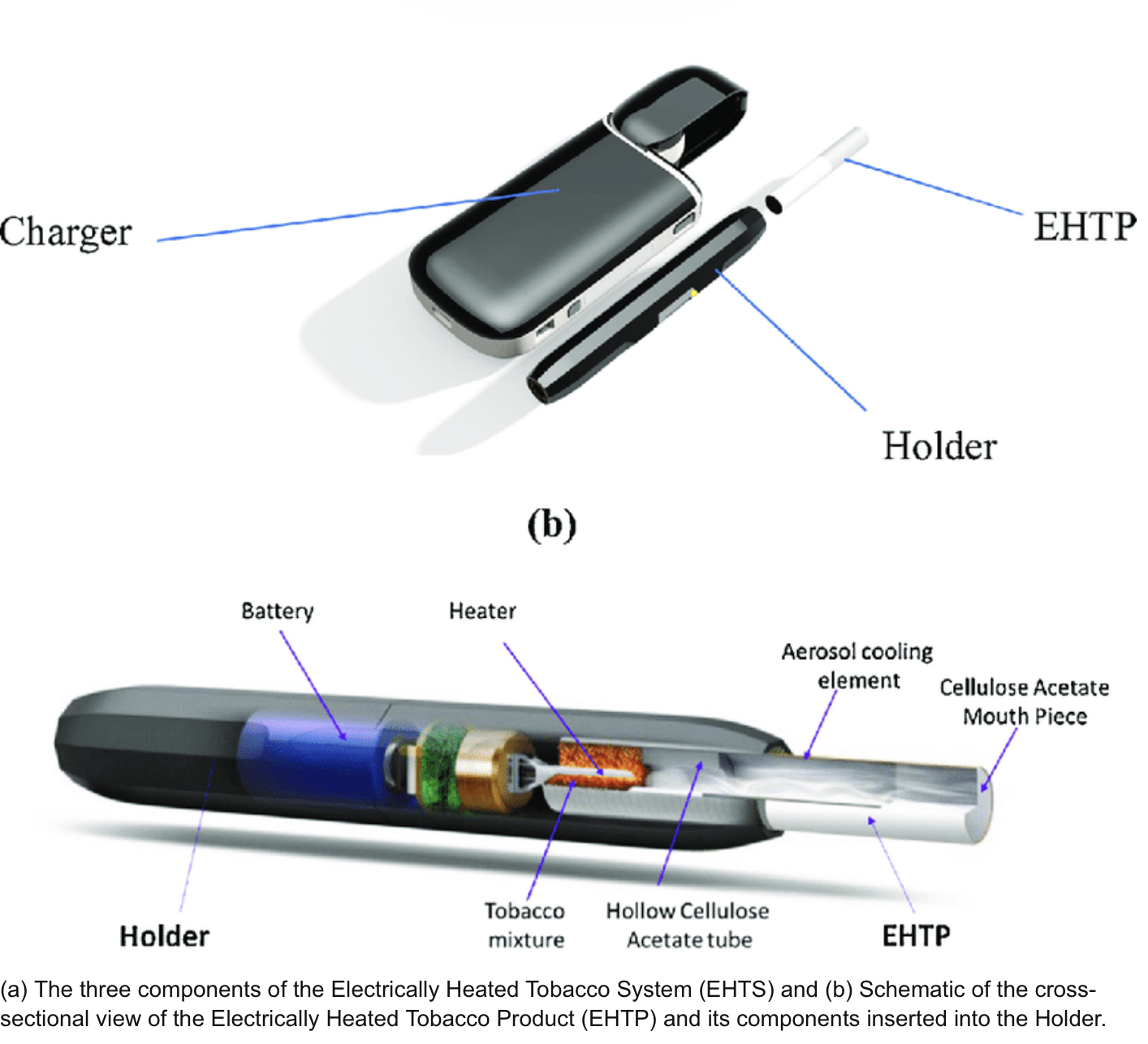
Strolling
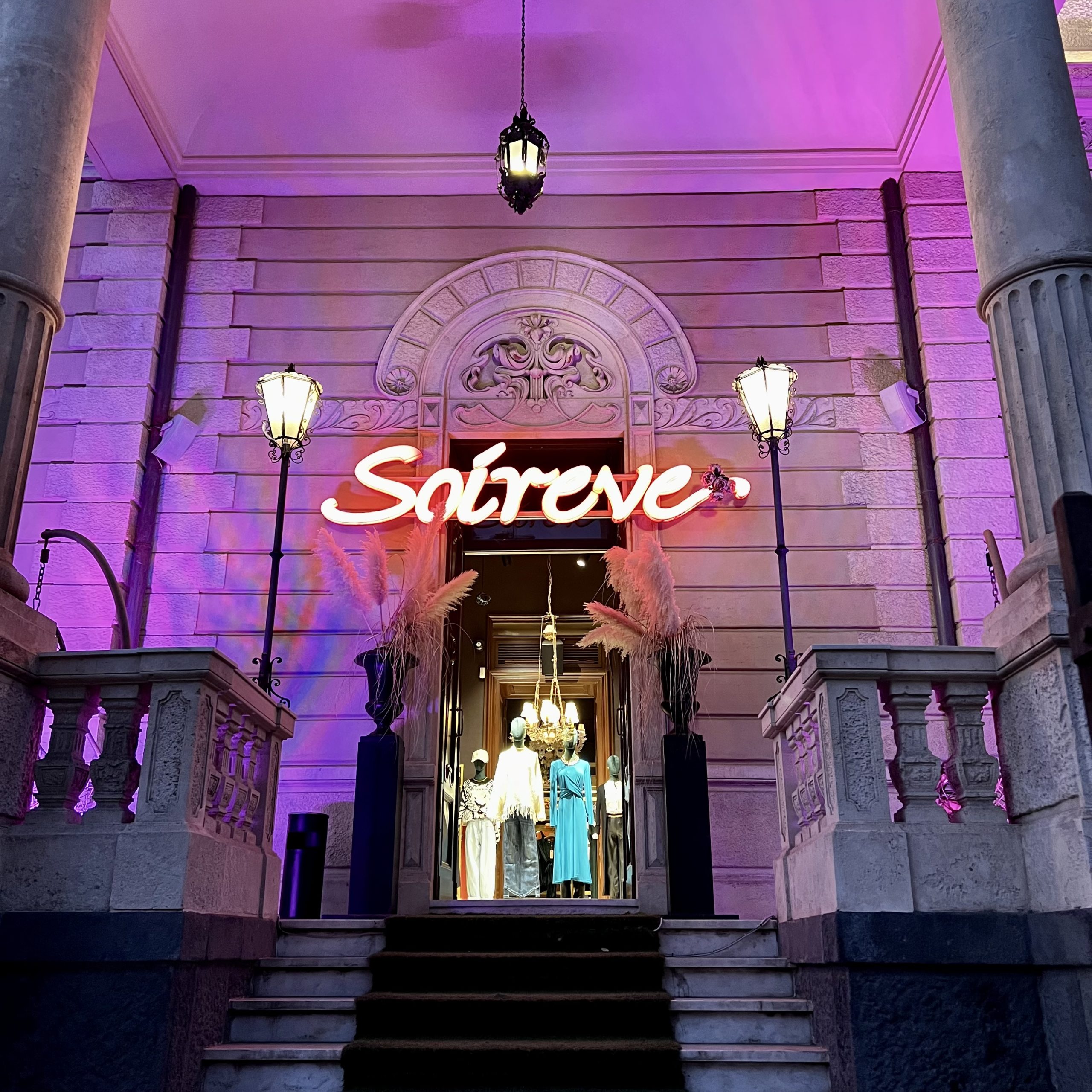
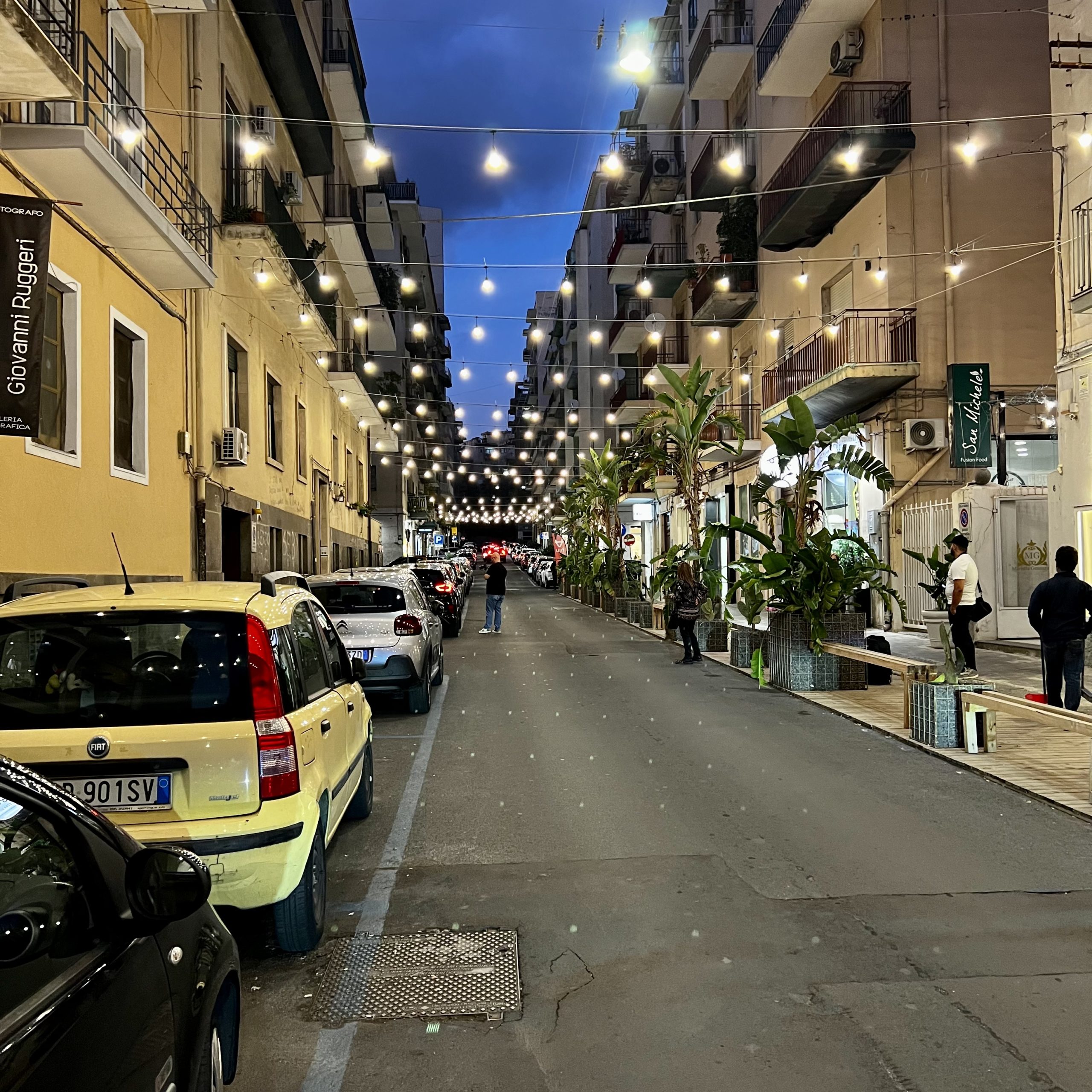
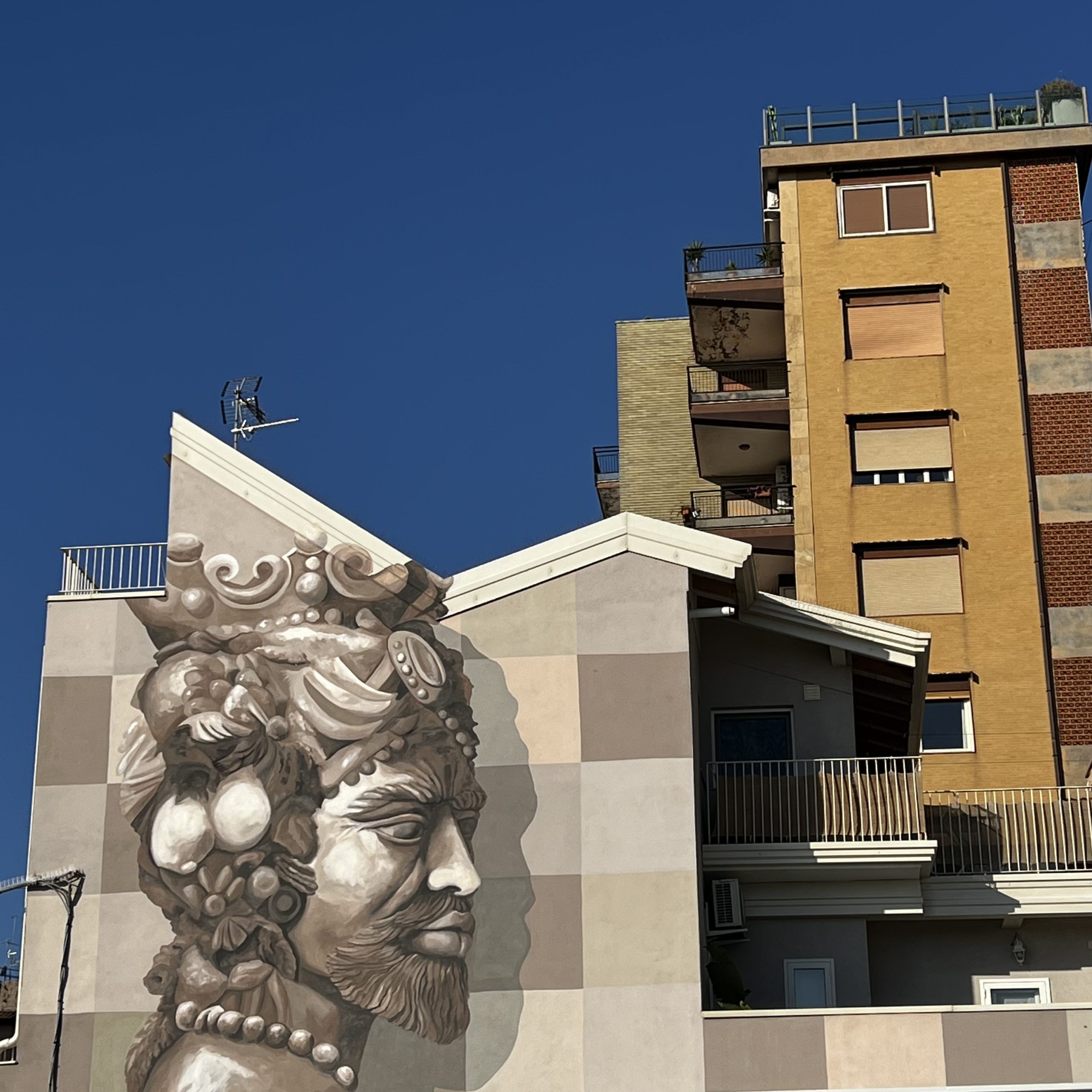
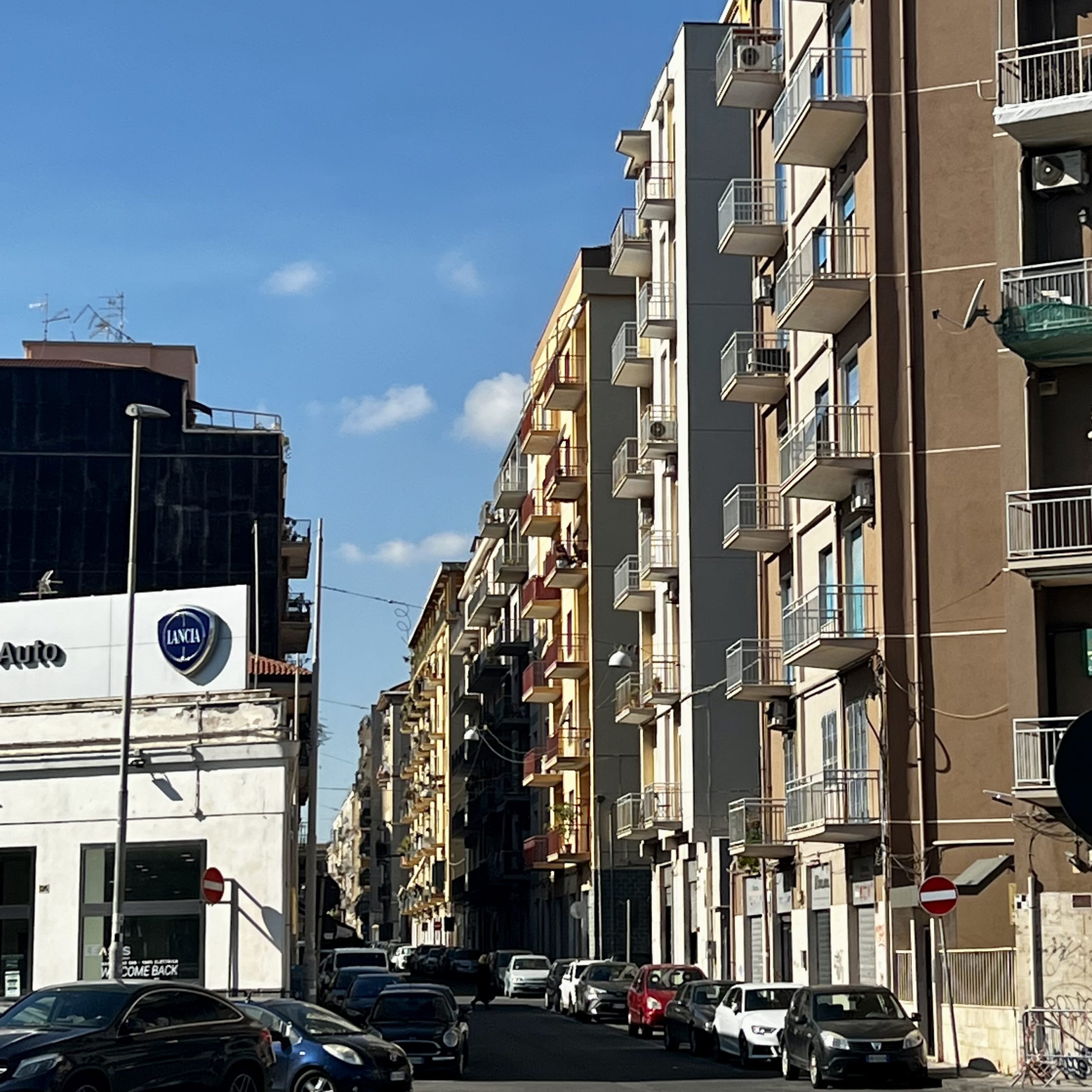
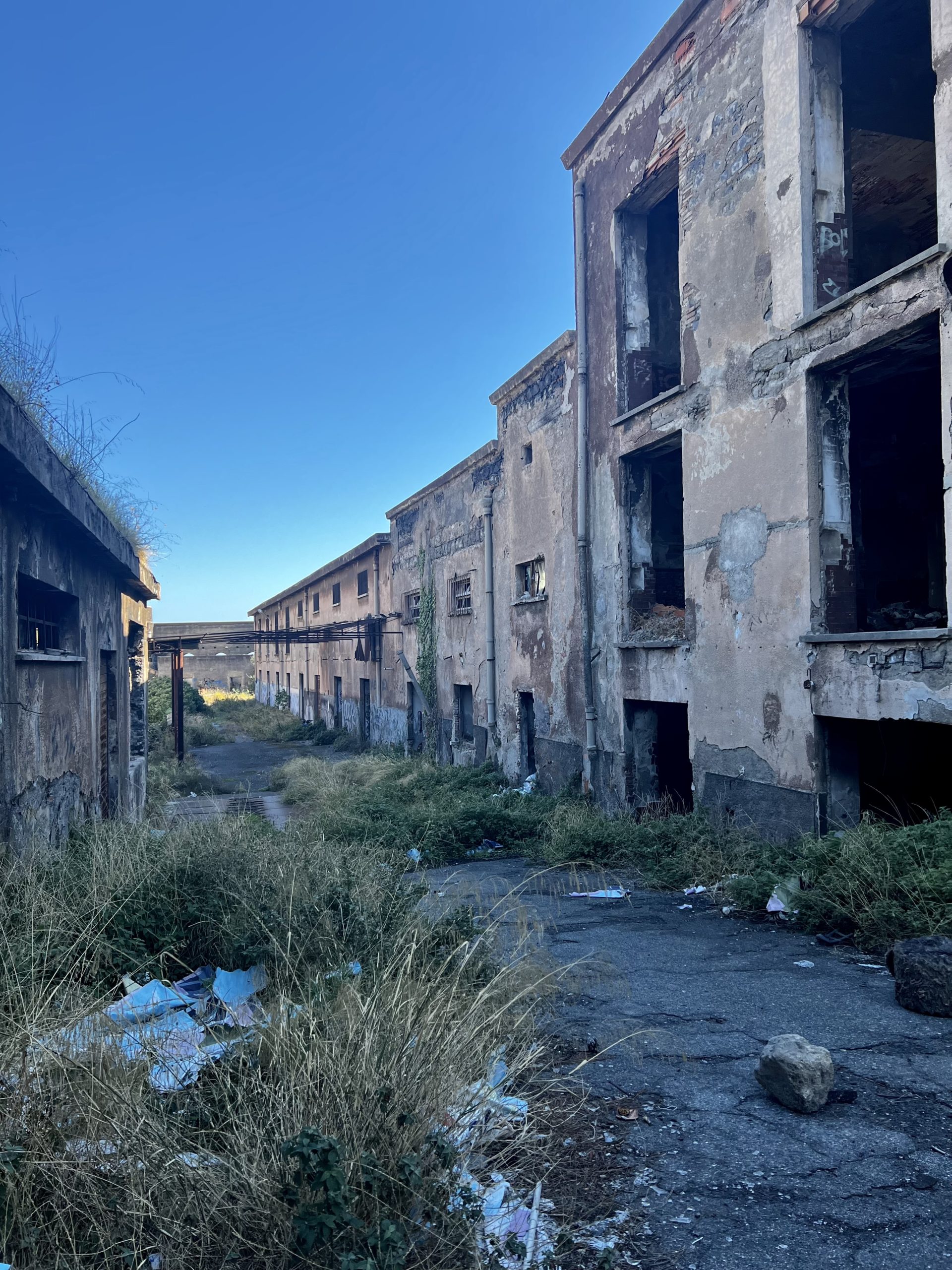
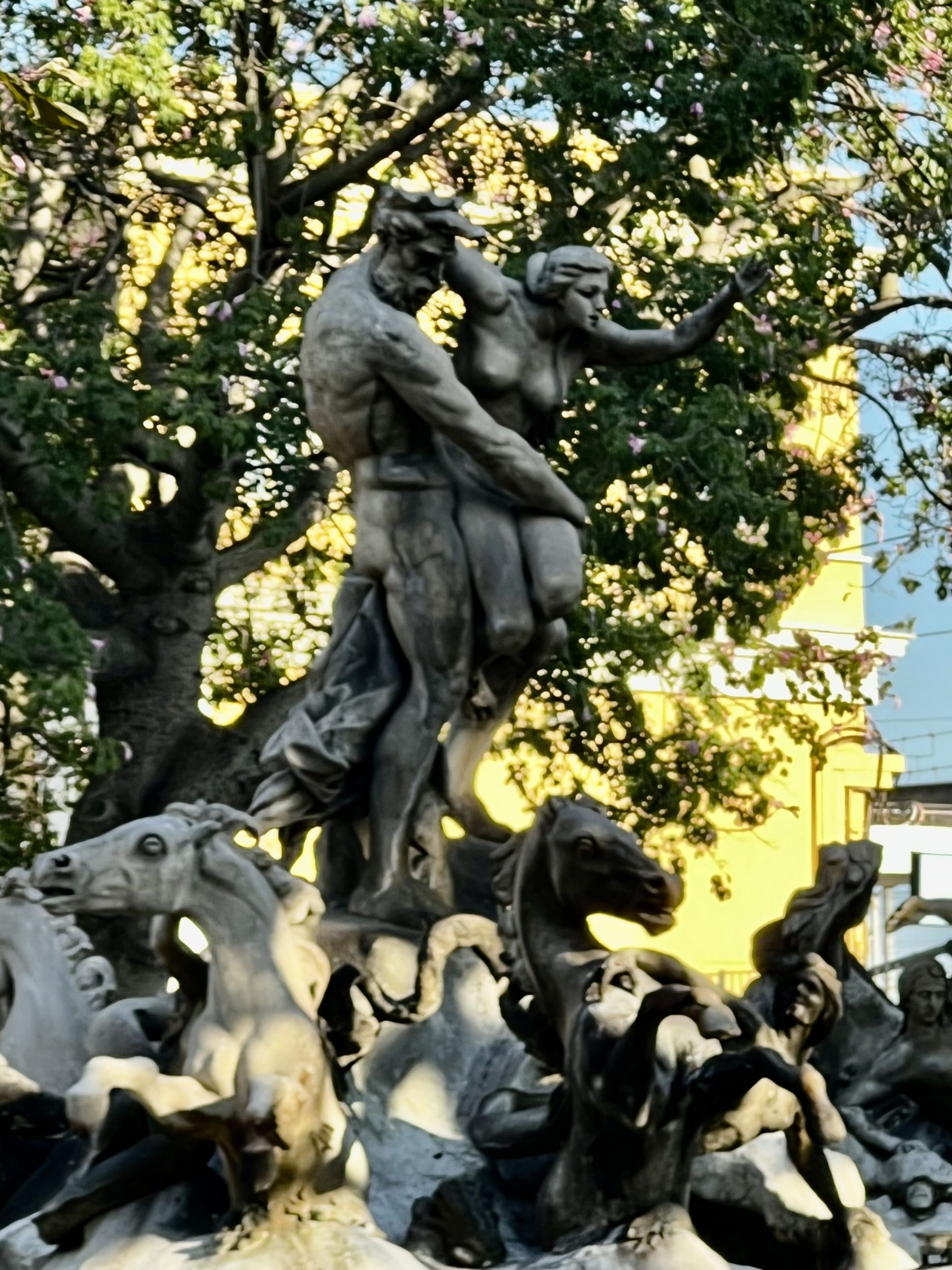
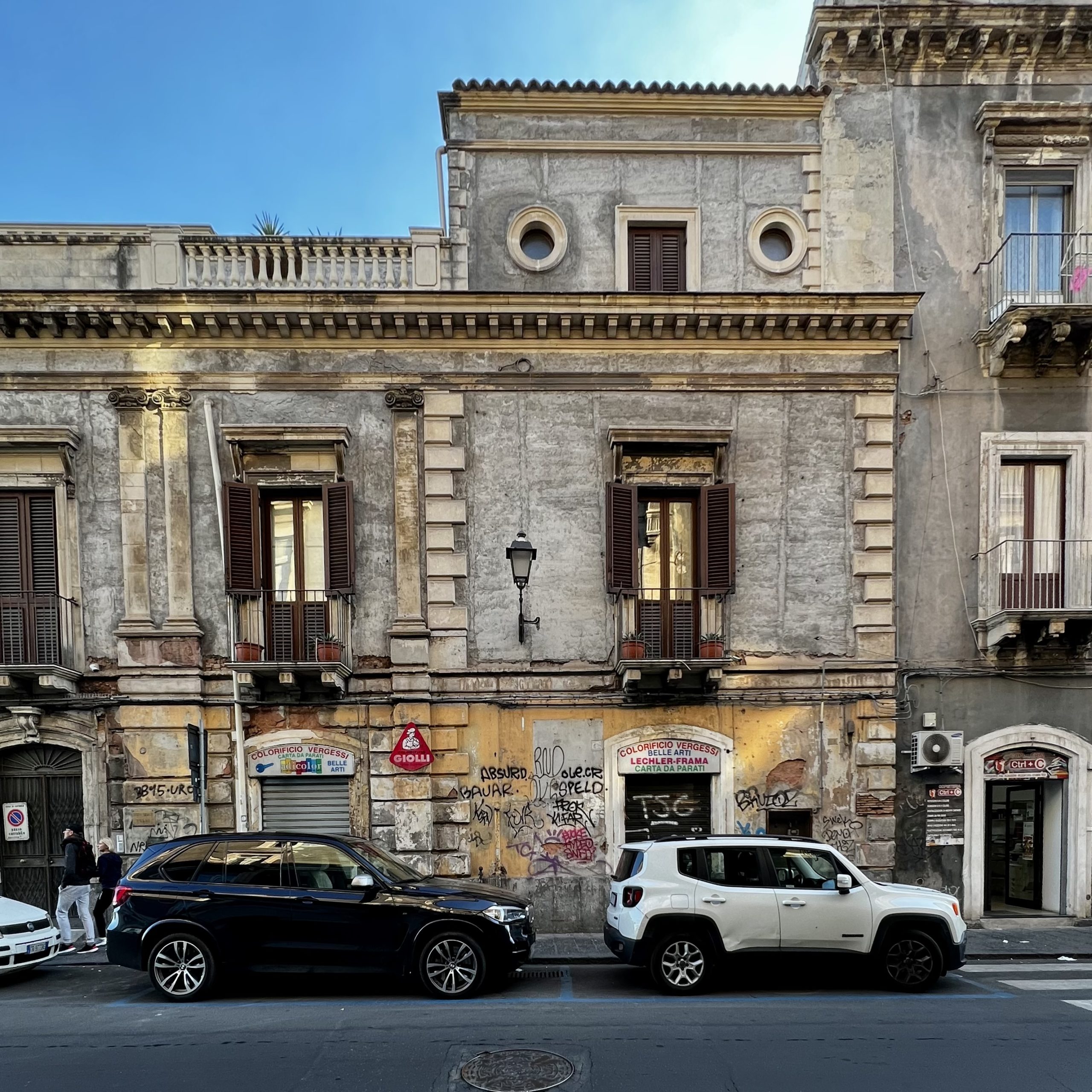
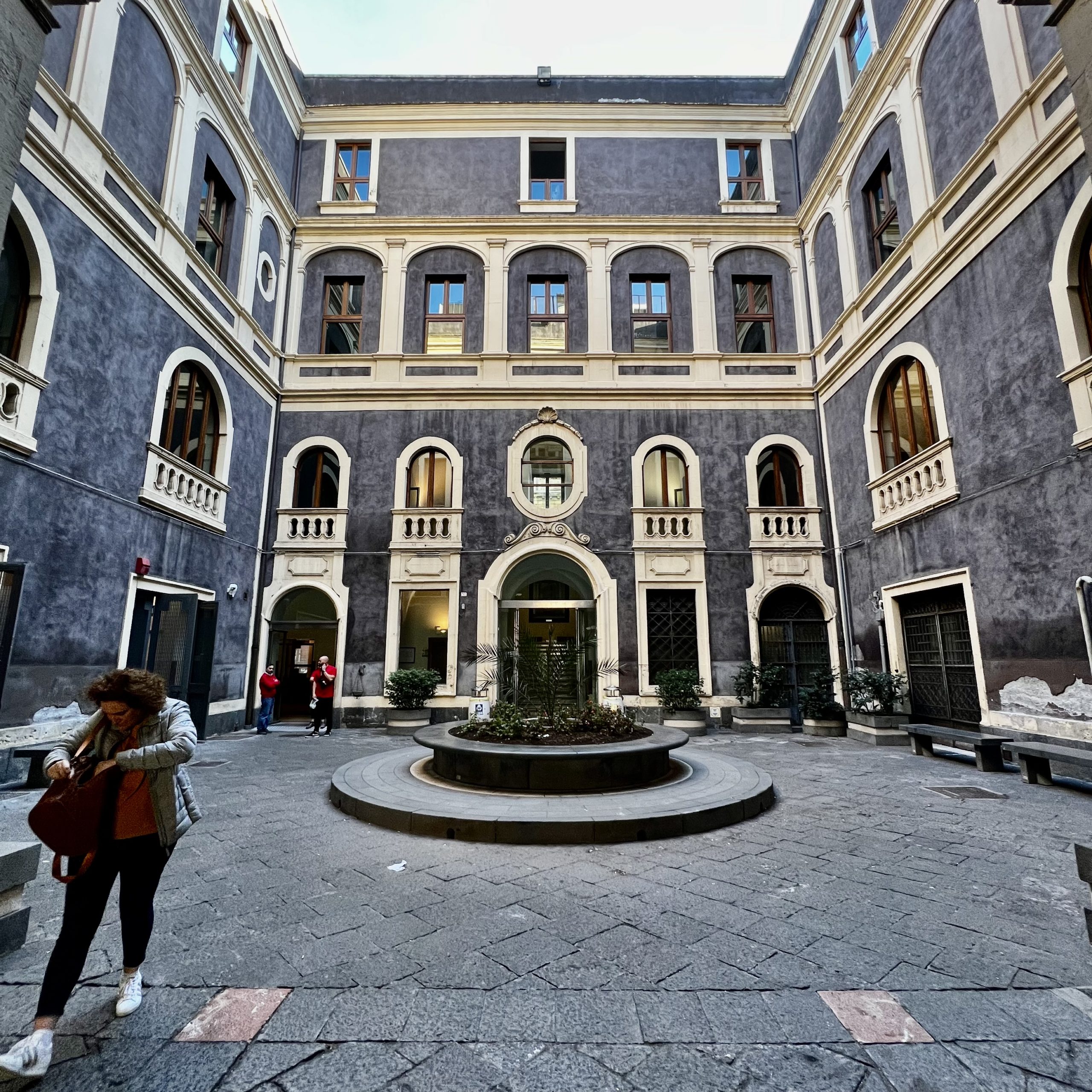
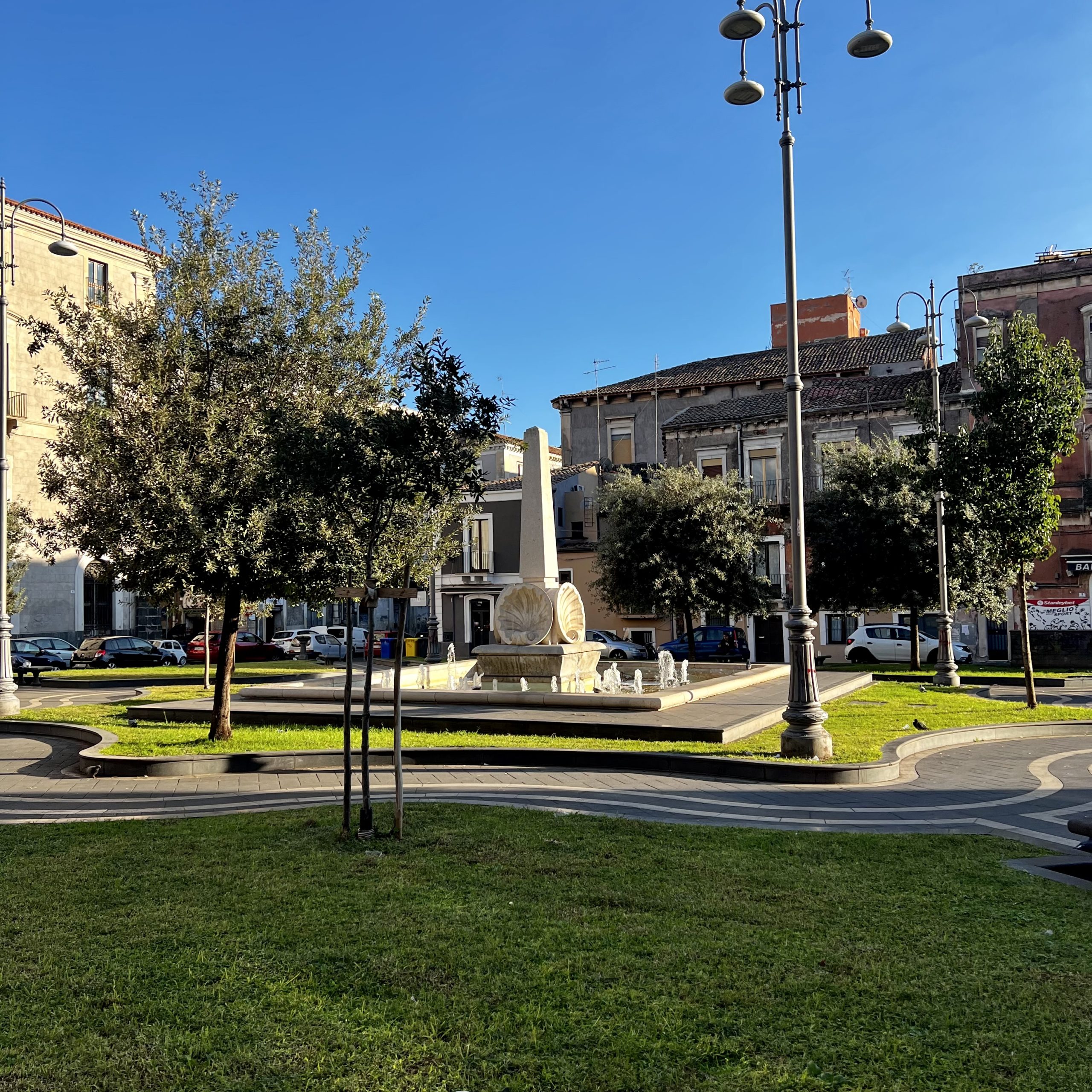
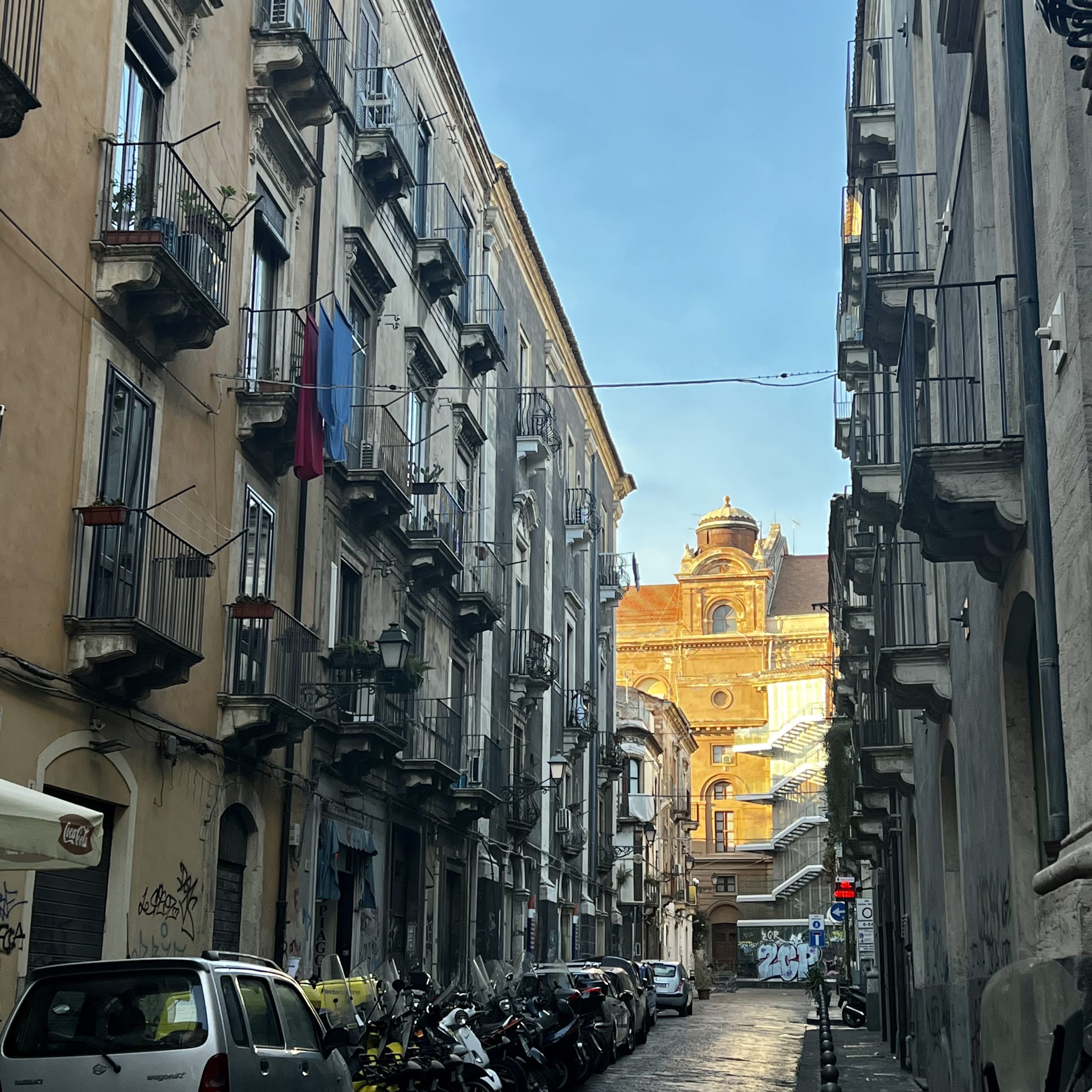
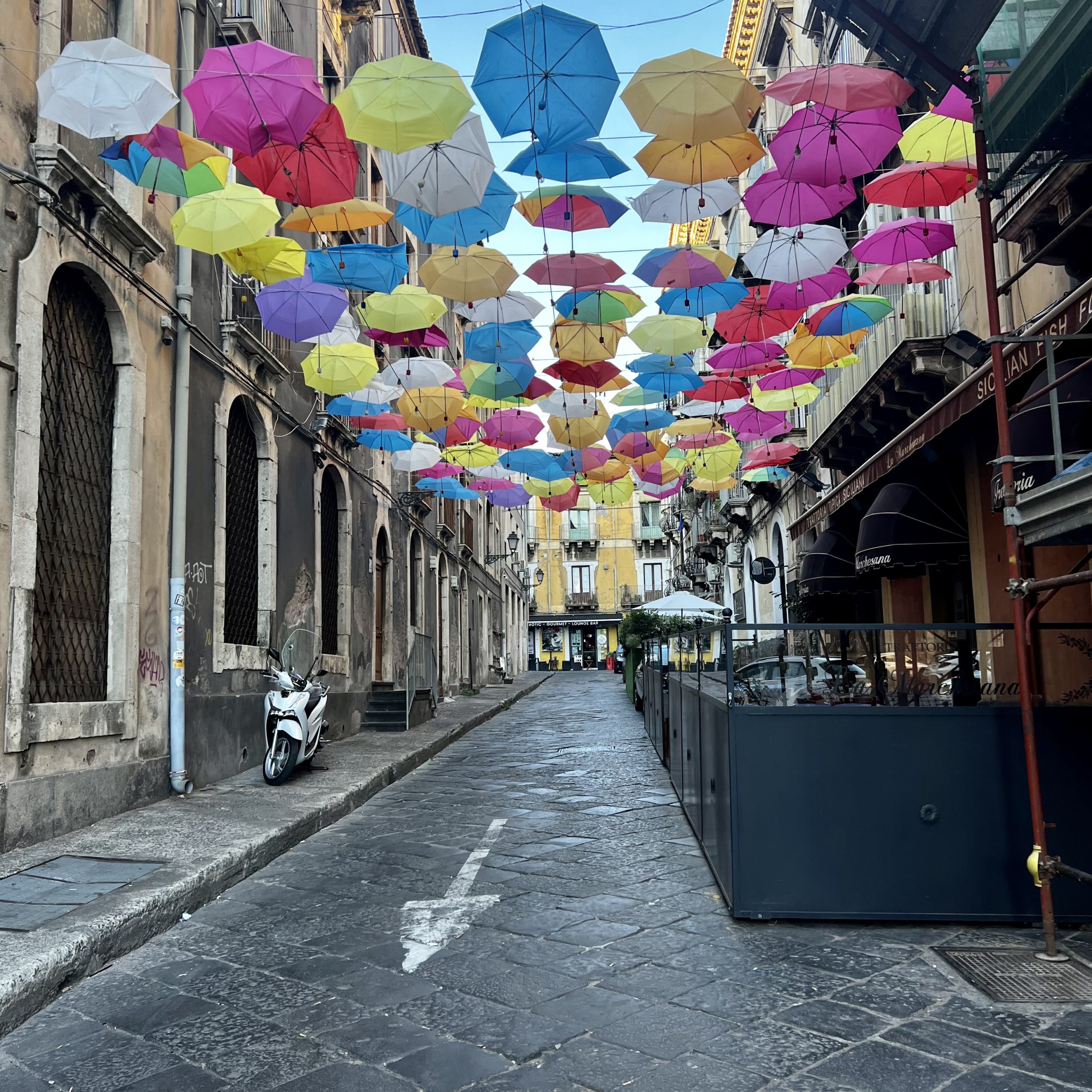
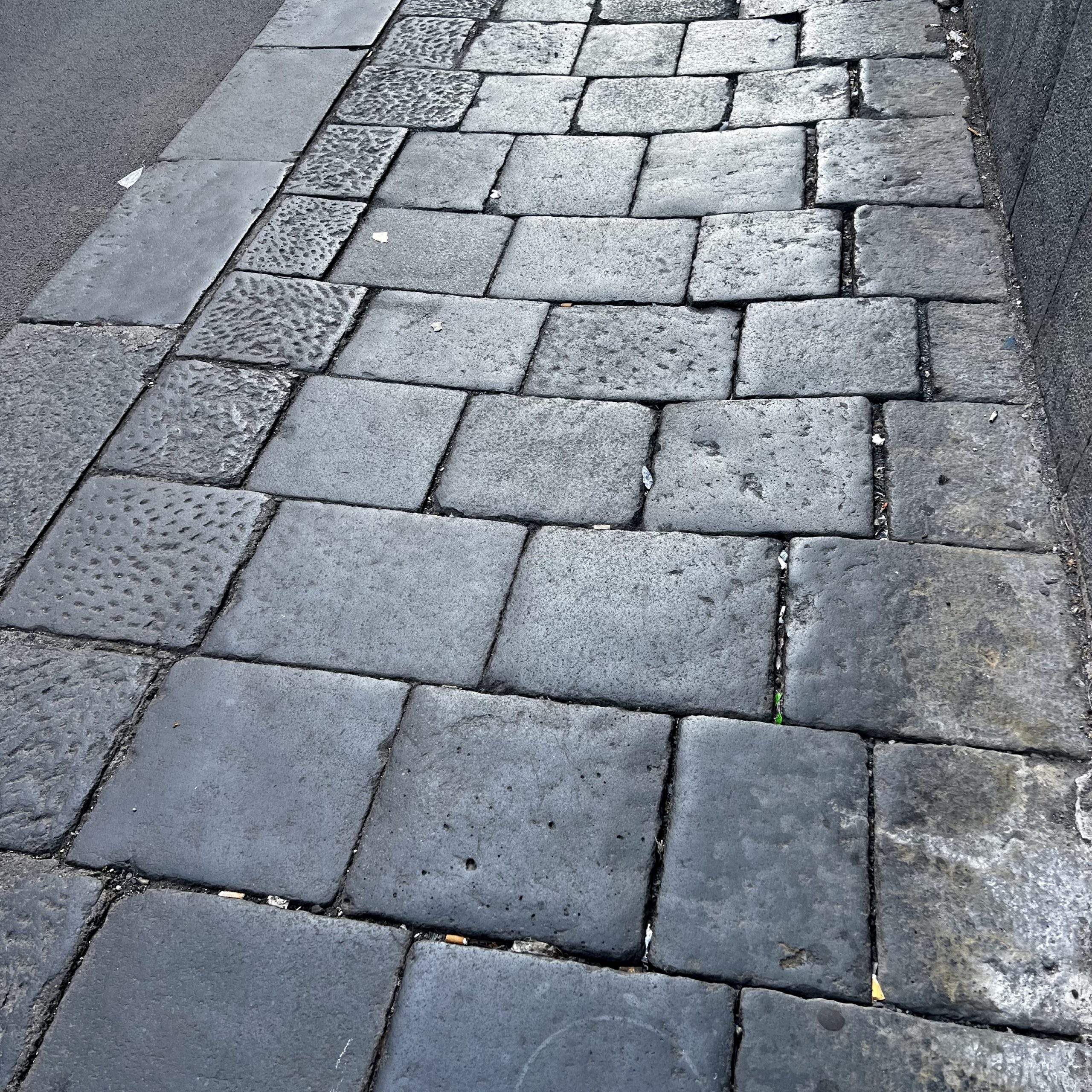
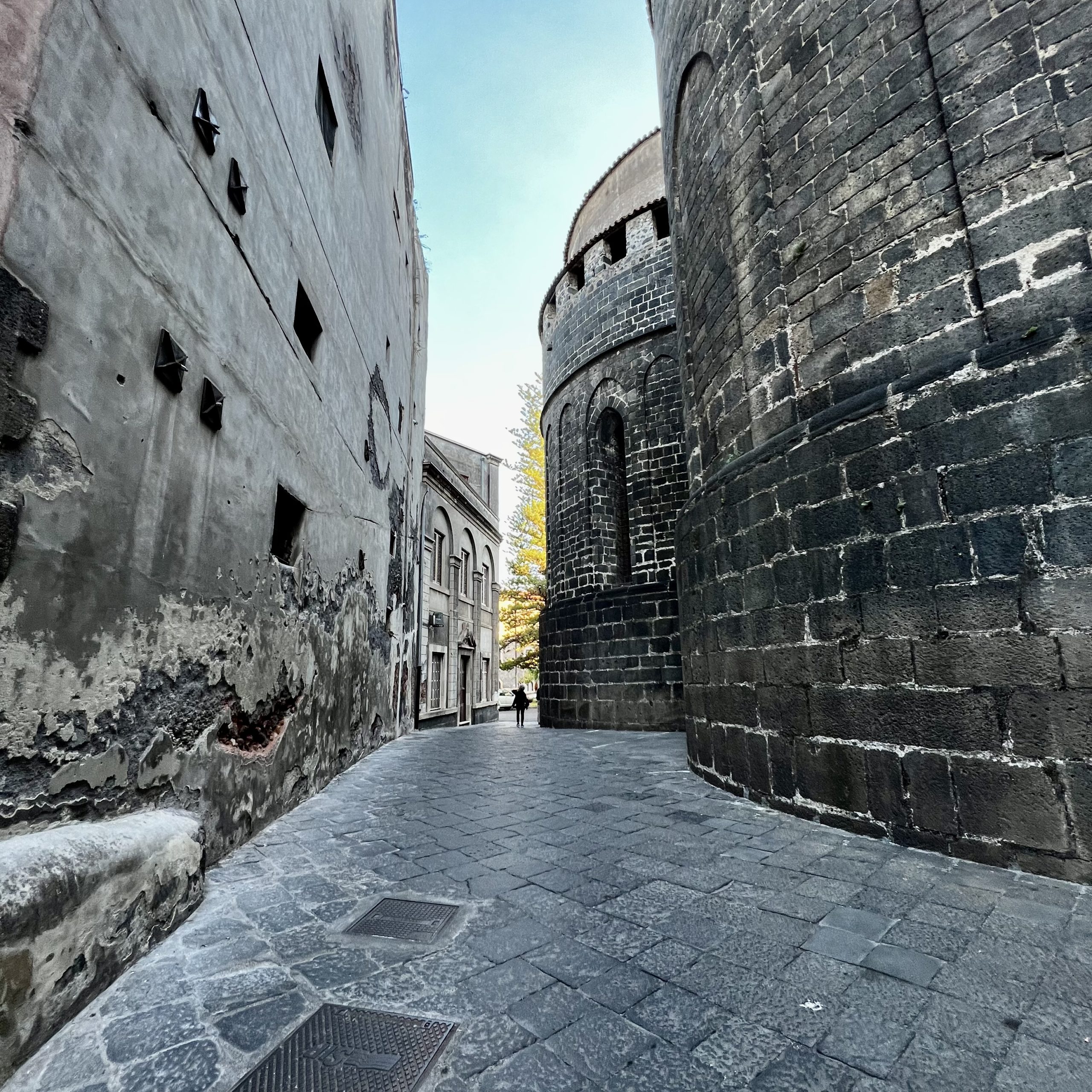
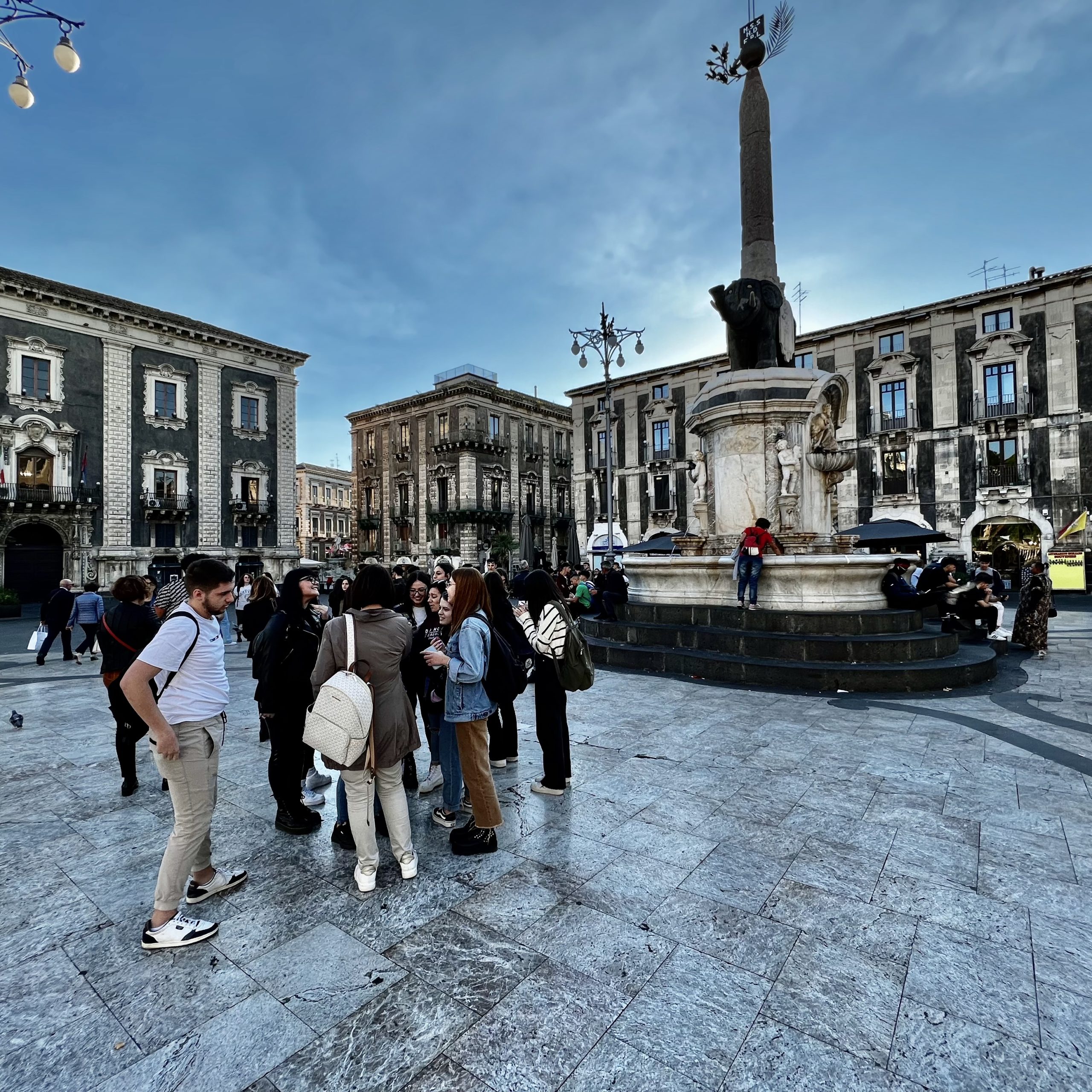
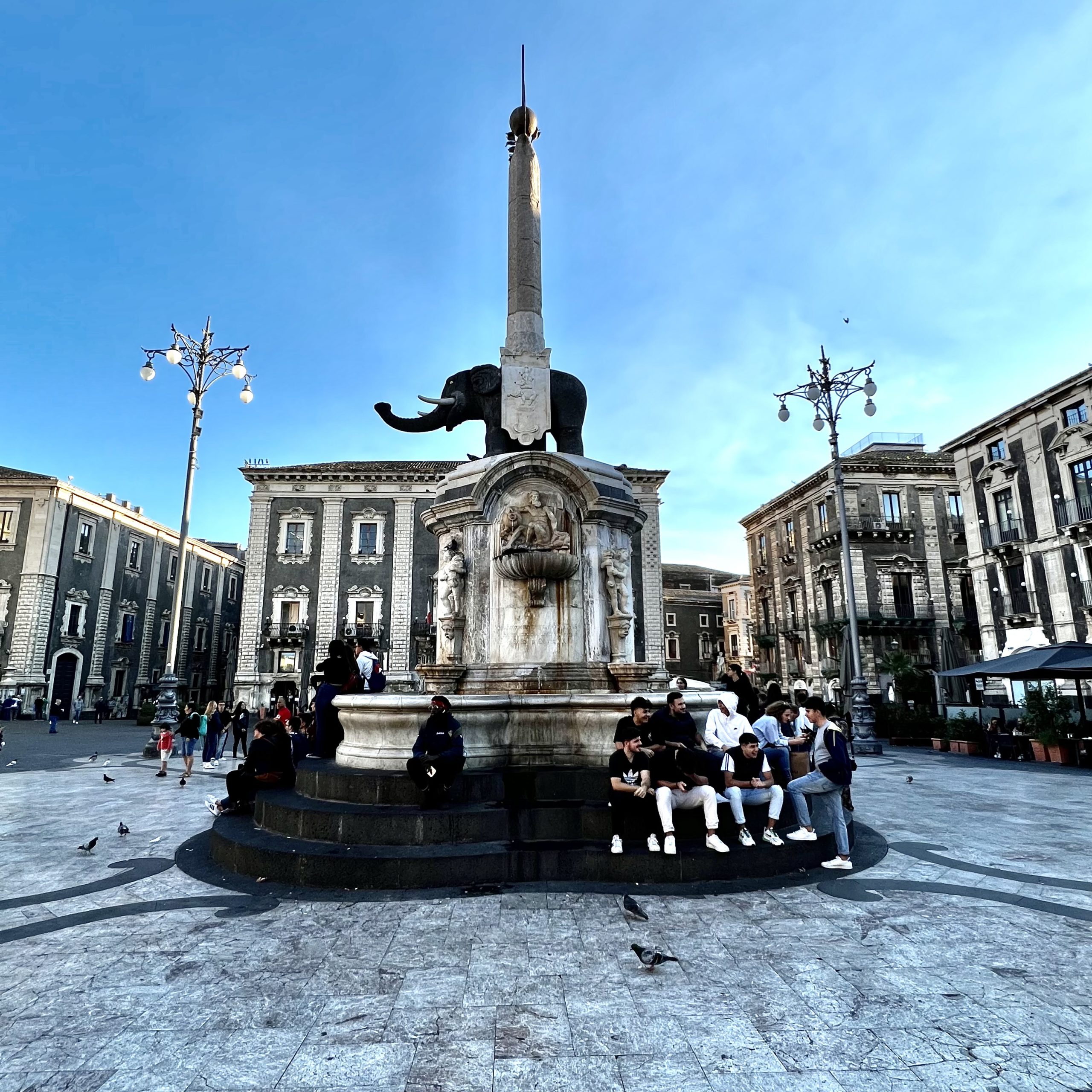
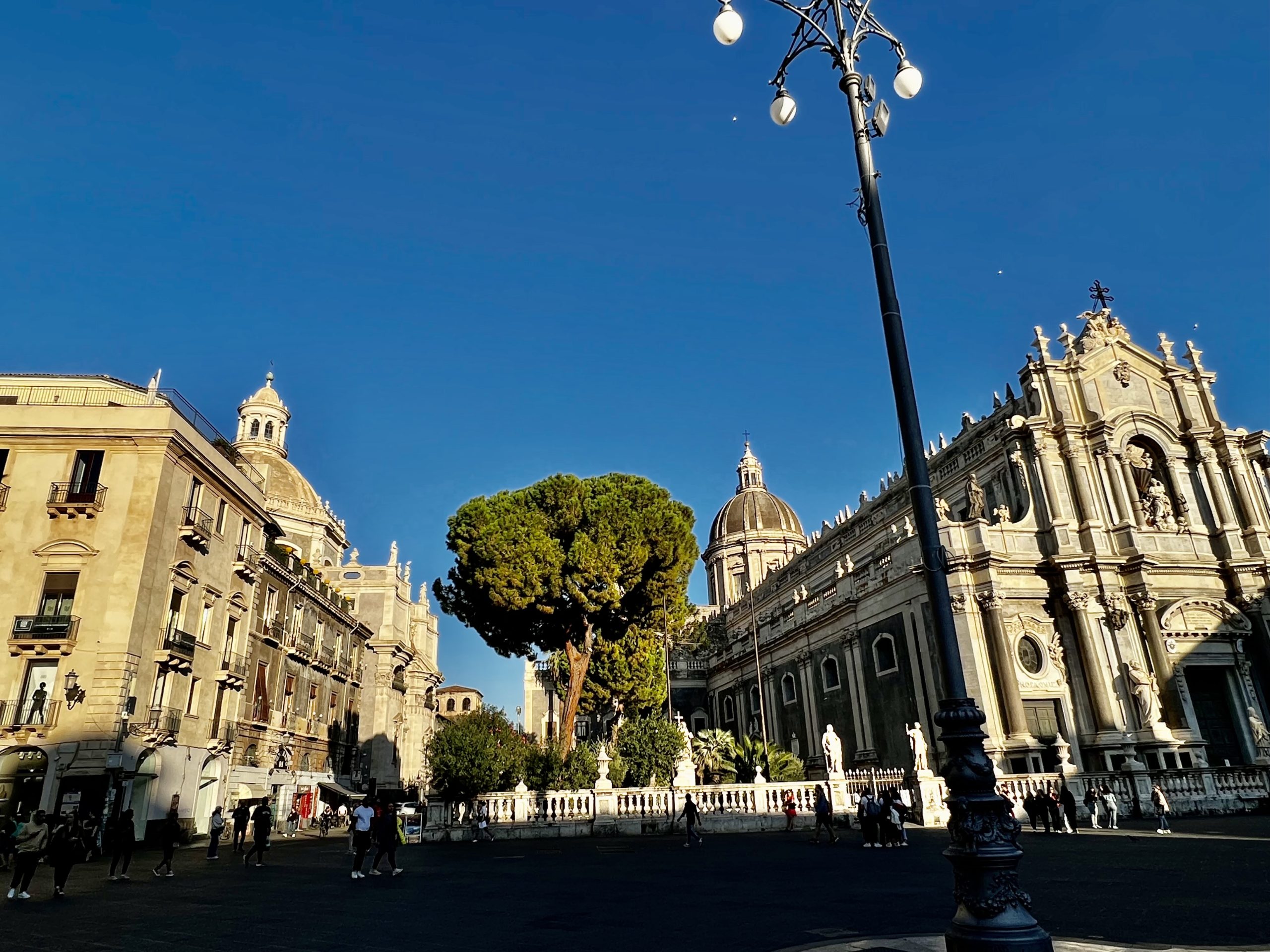
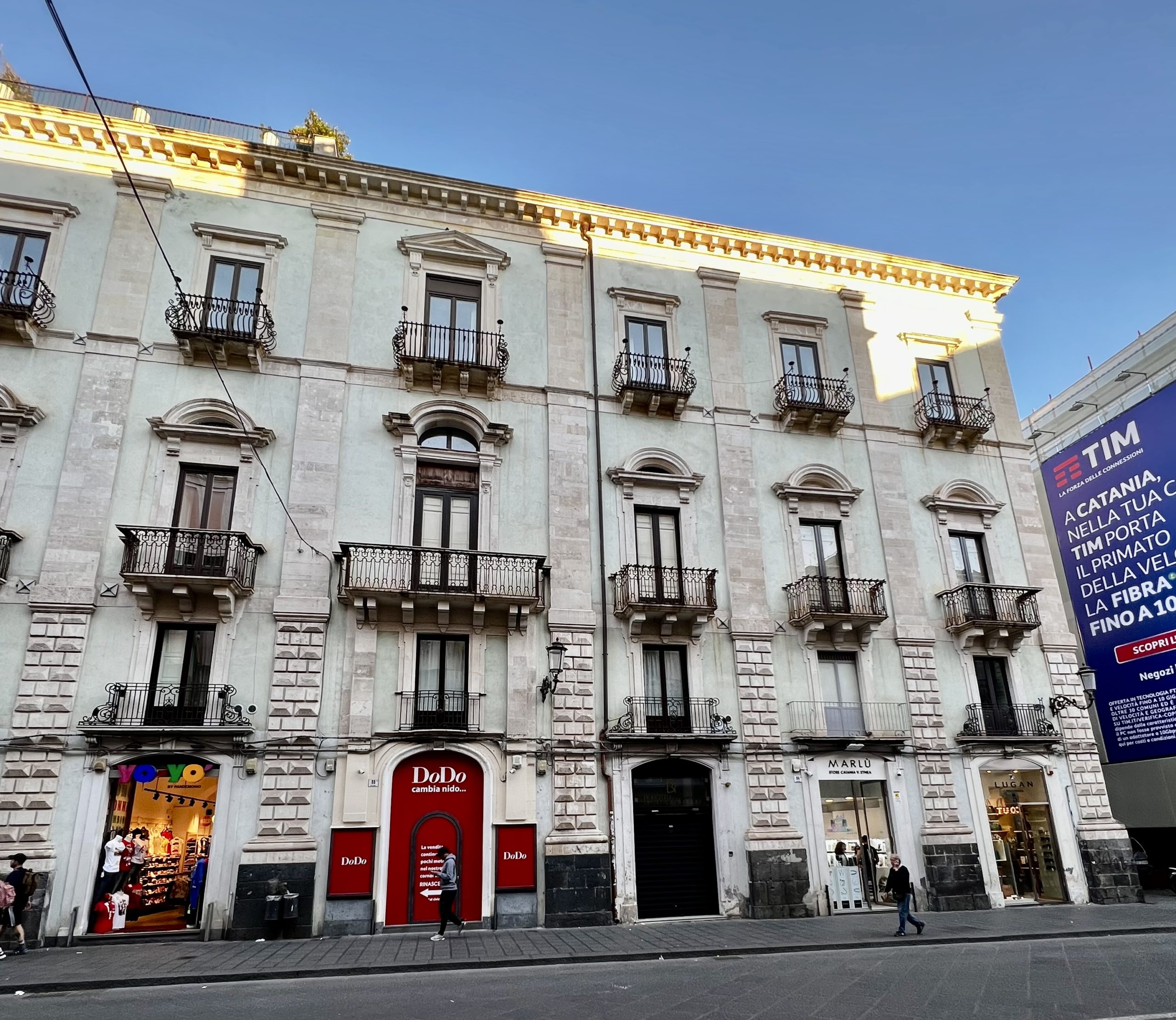
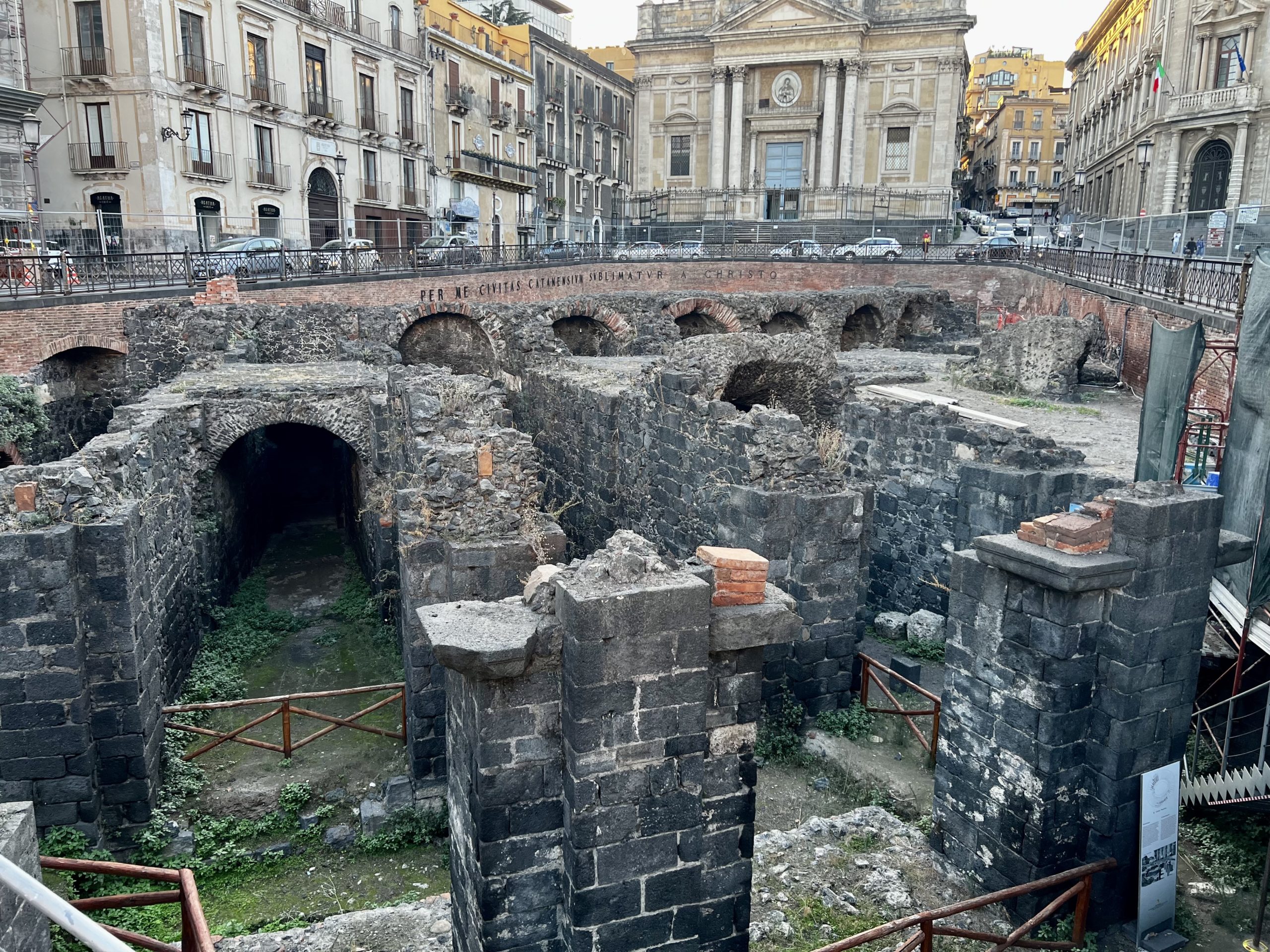
Basilica Cattedrale di Sant’Agata
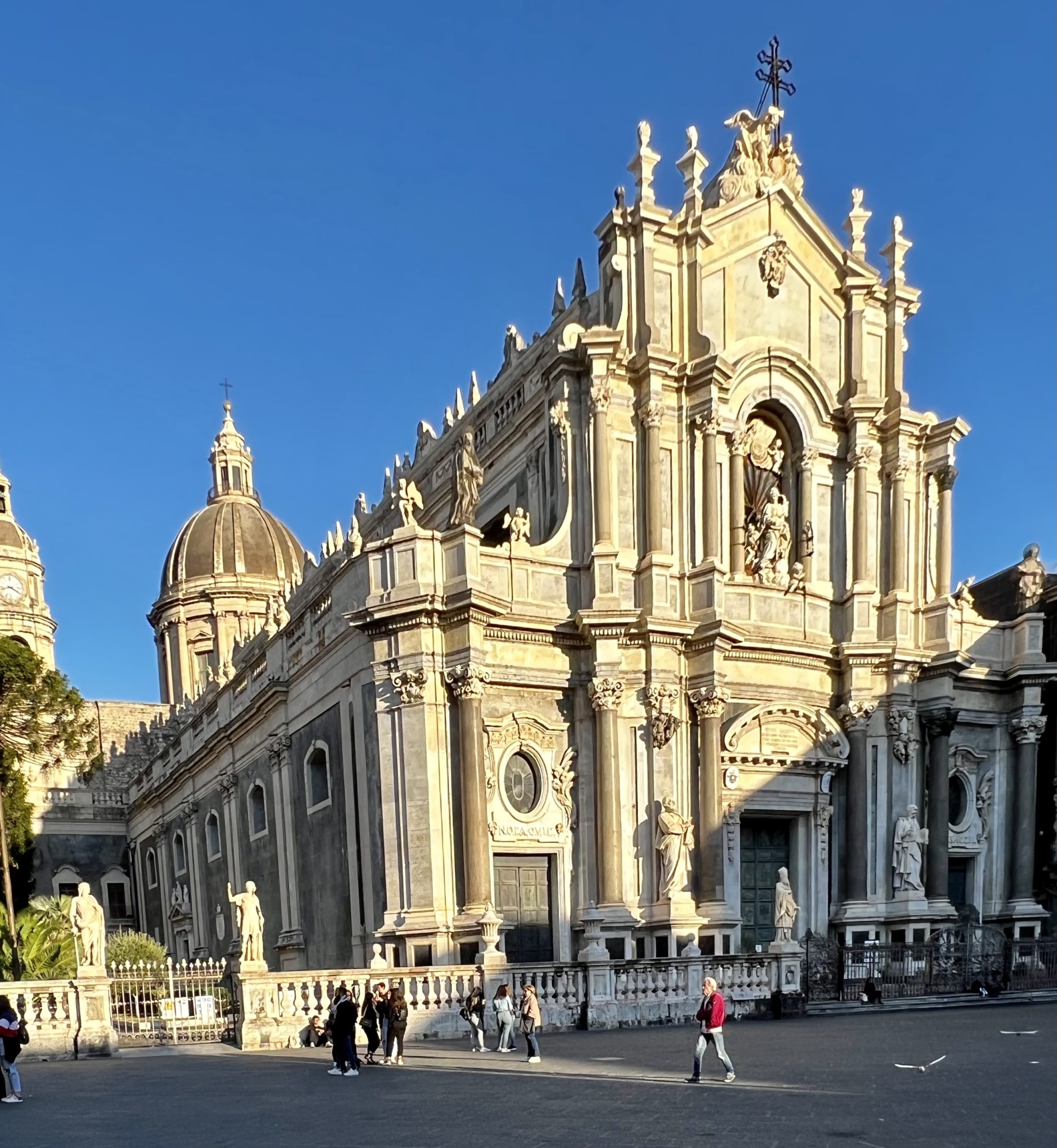
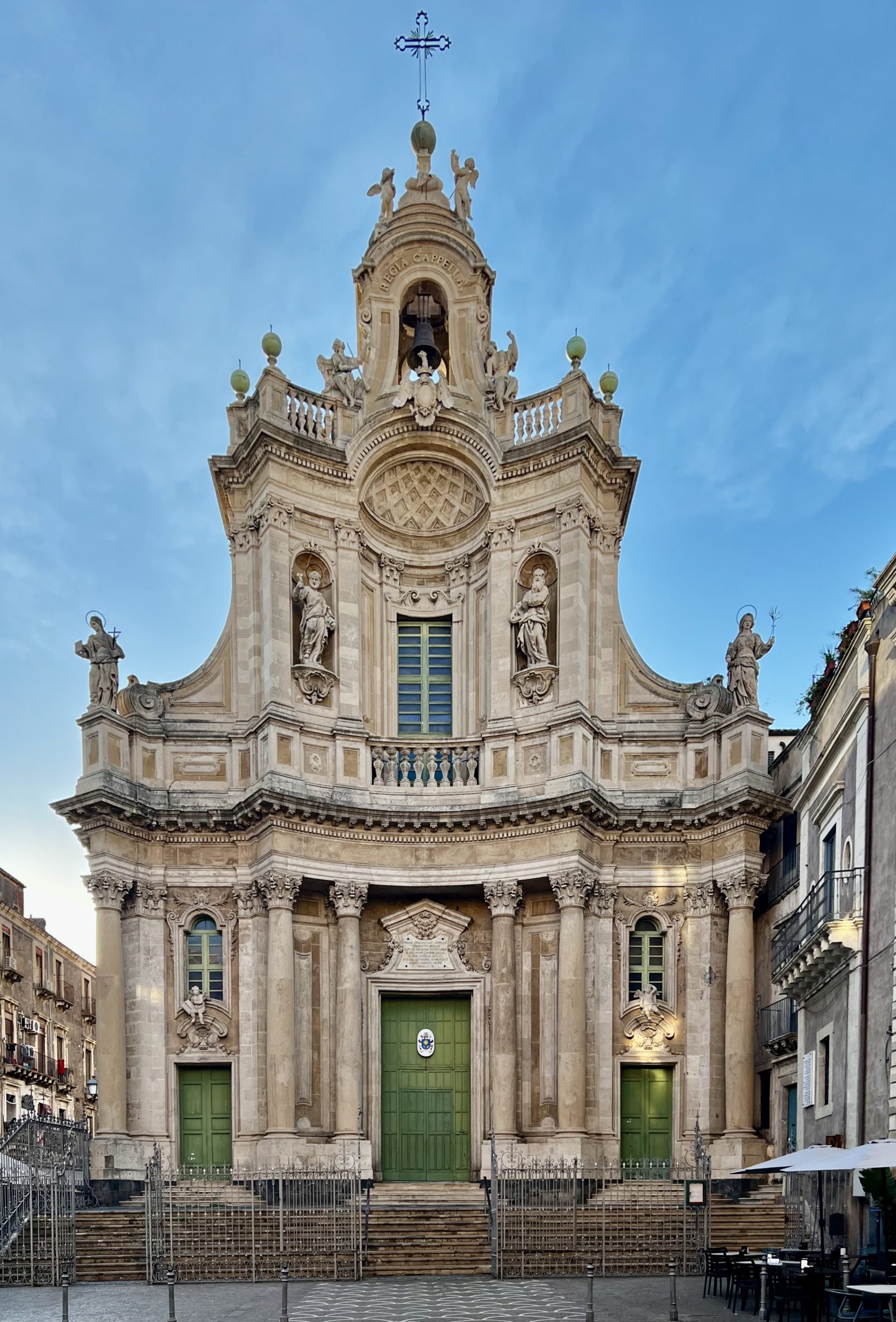
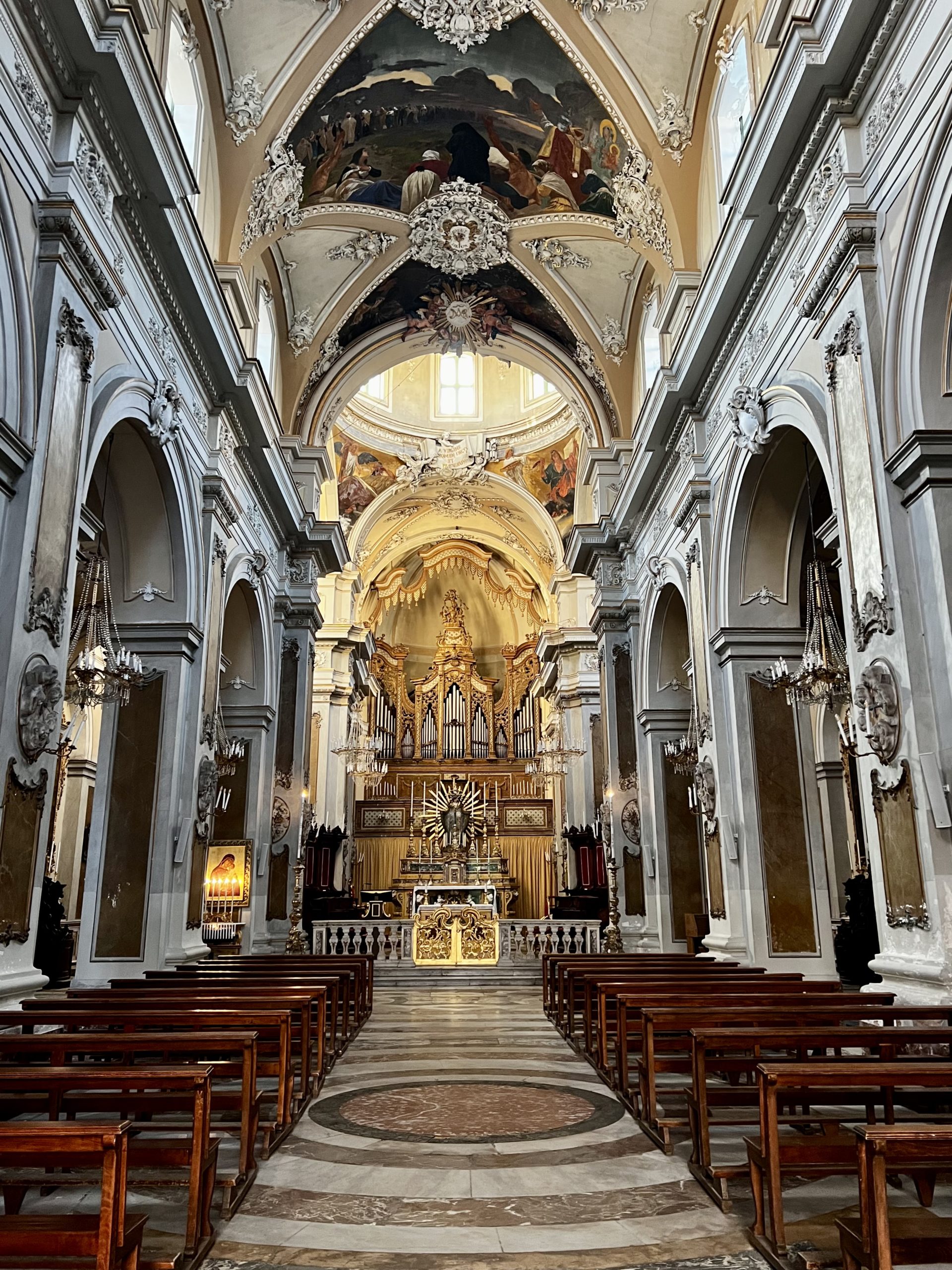
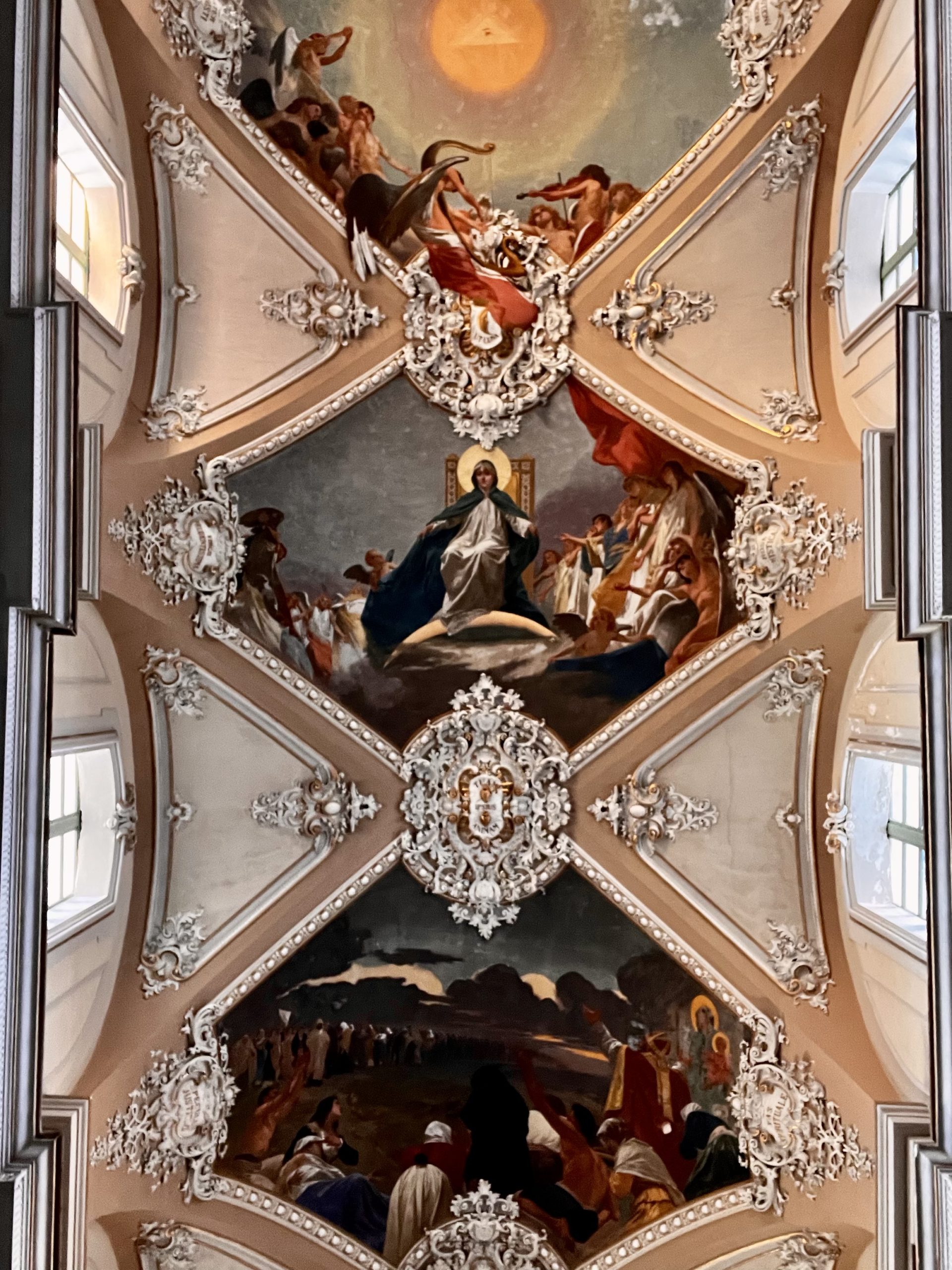
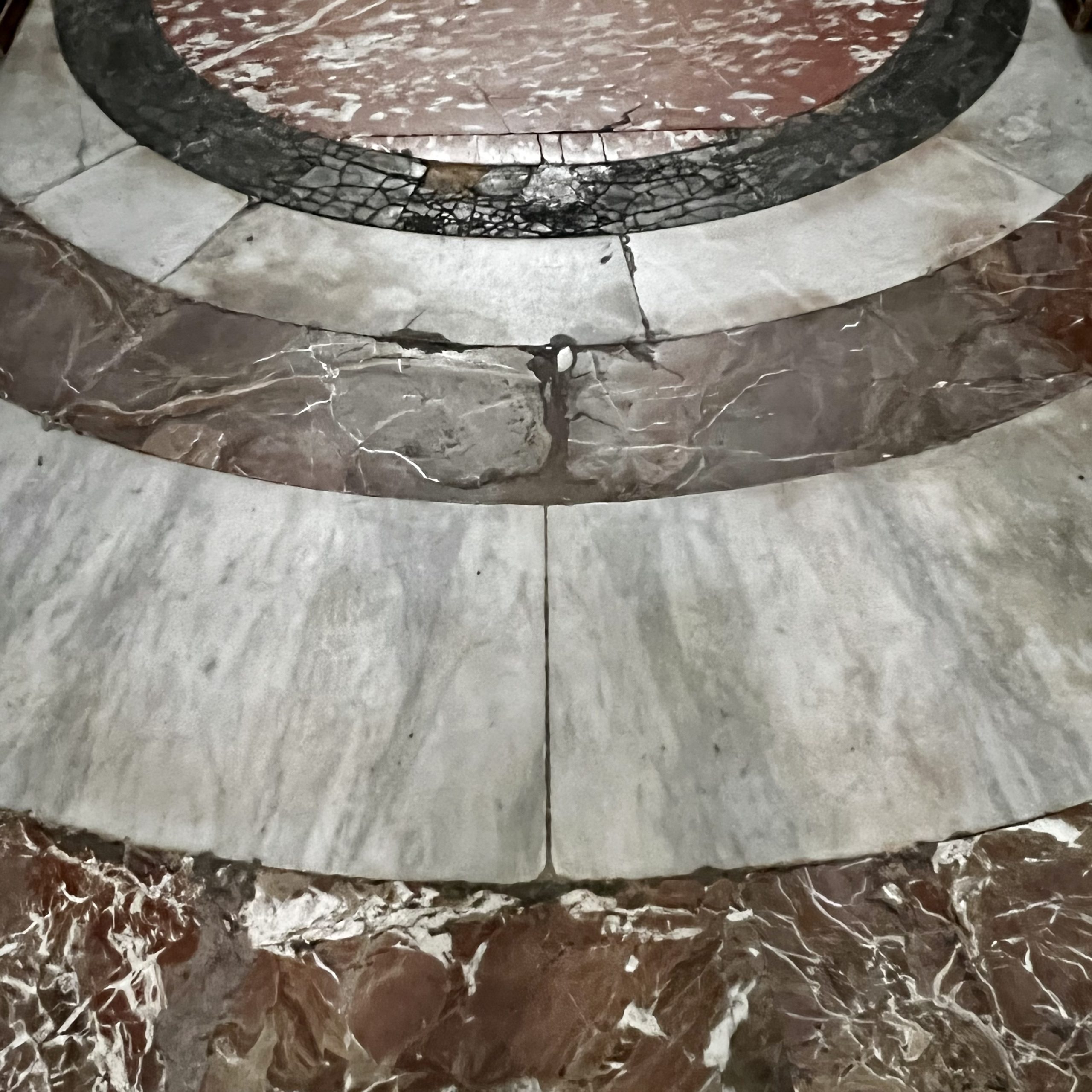
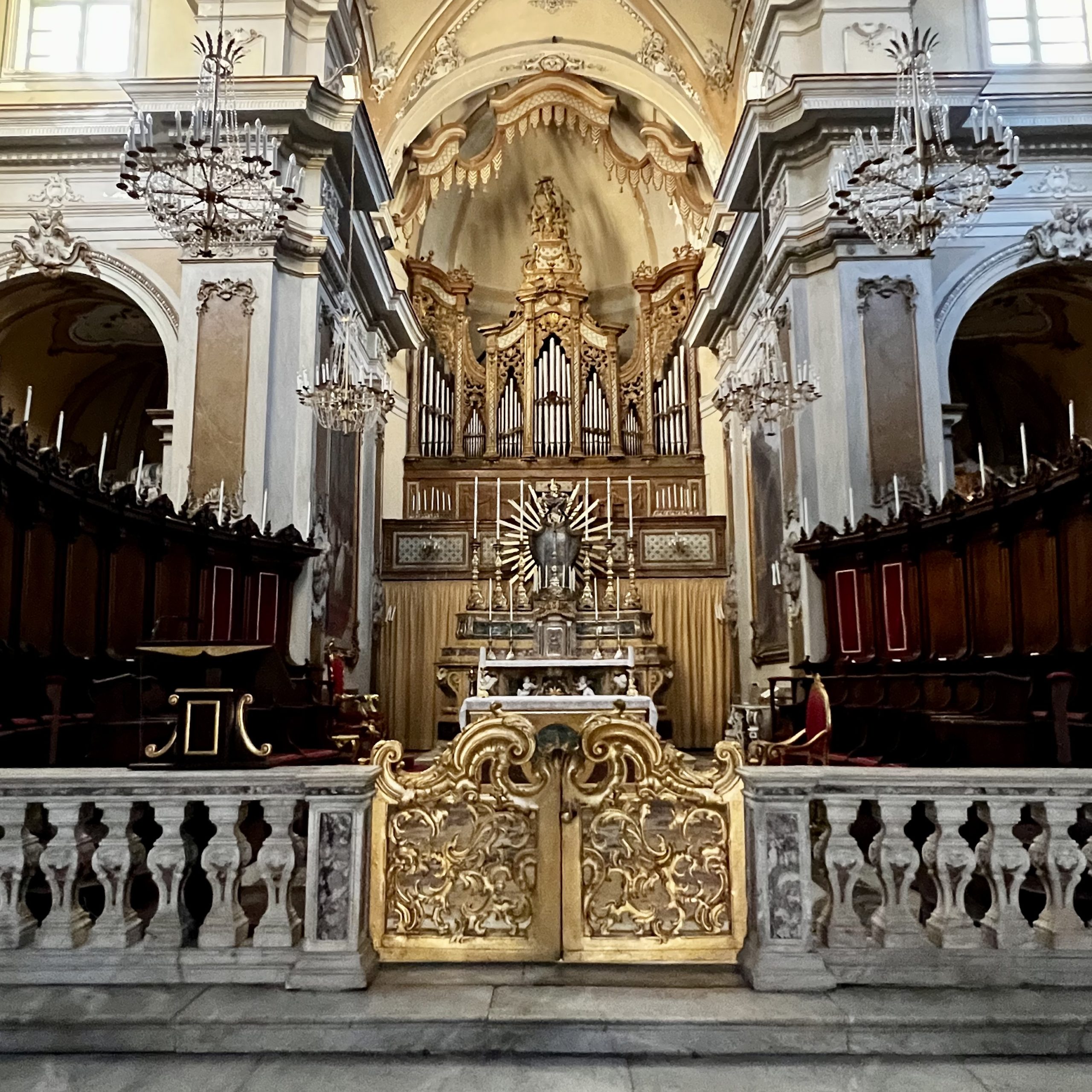
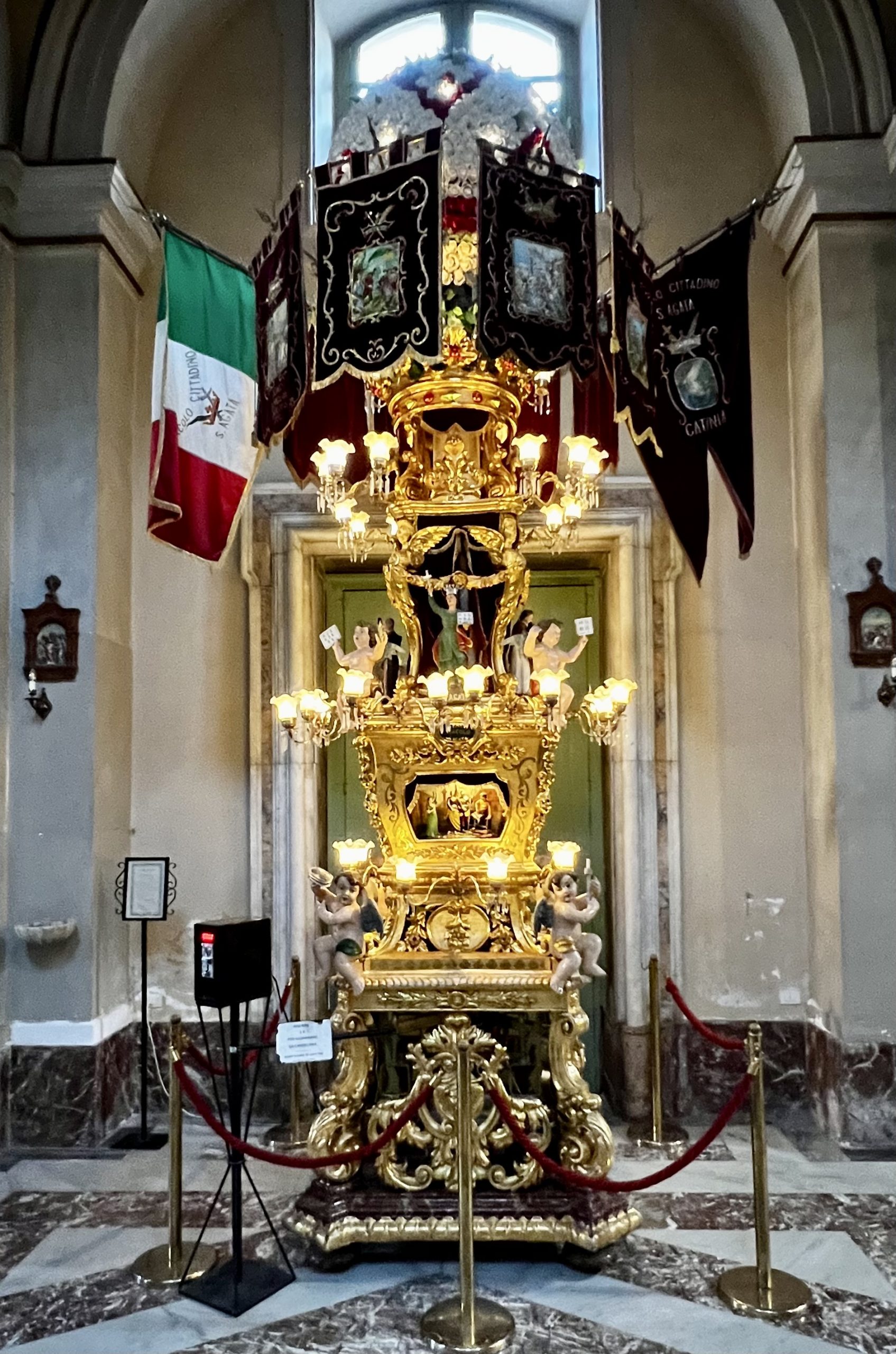
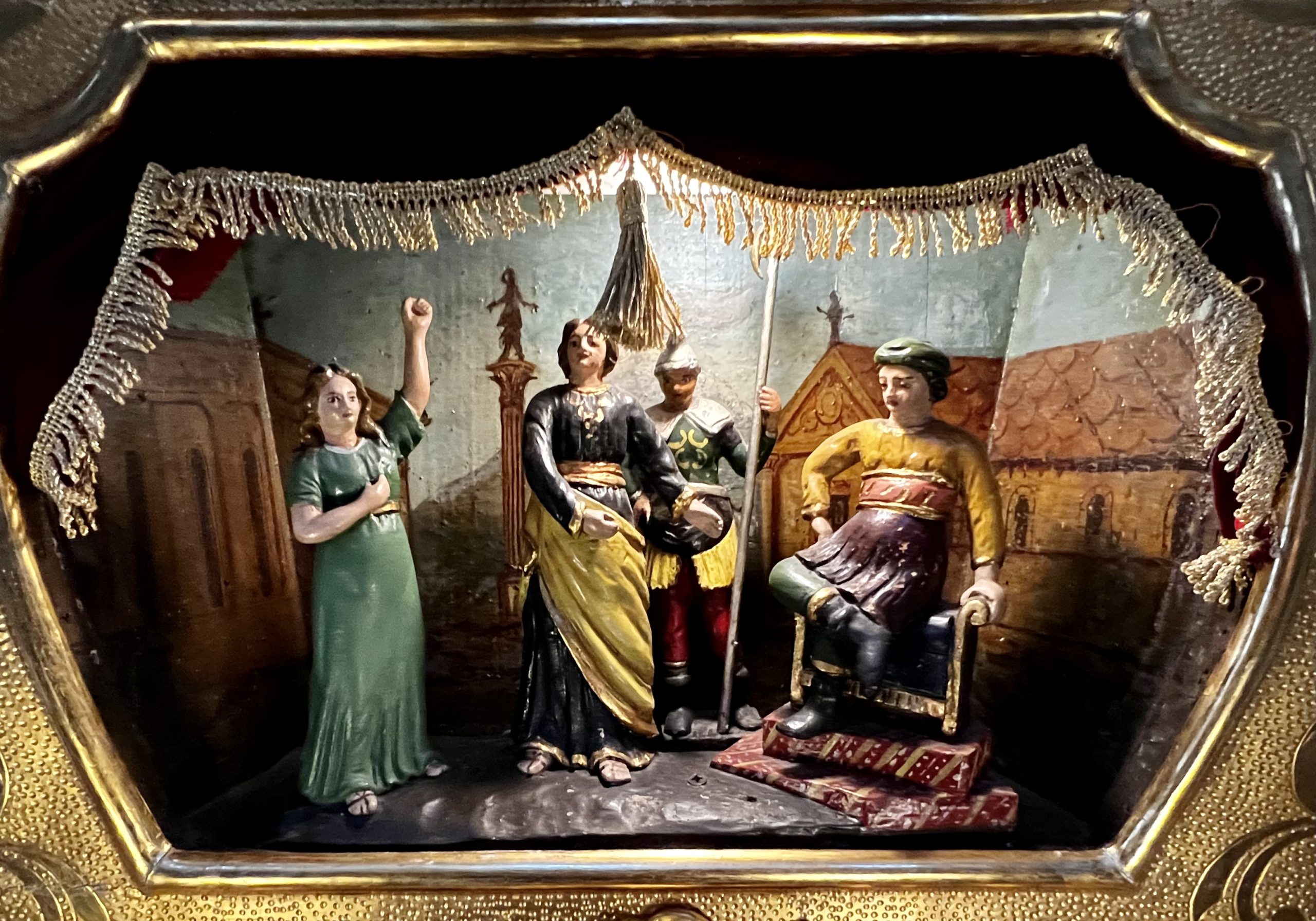
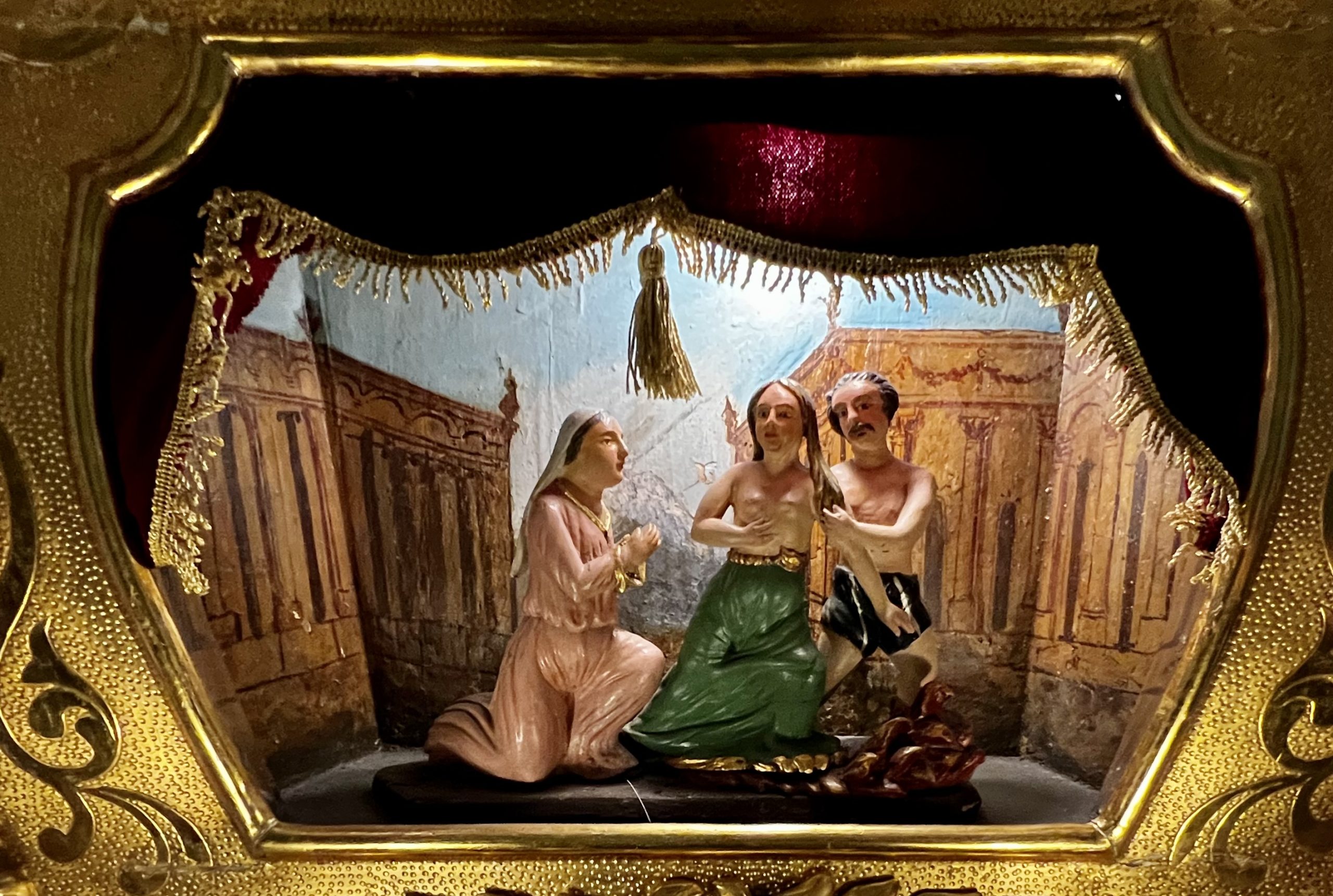
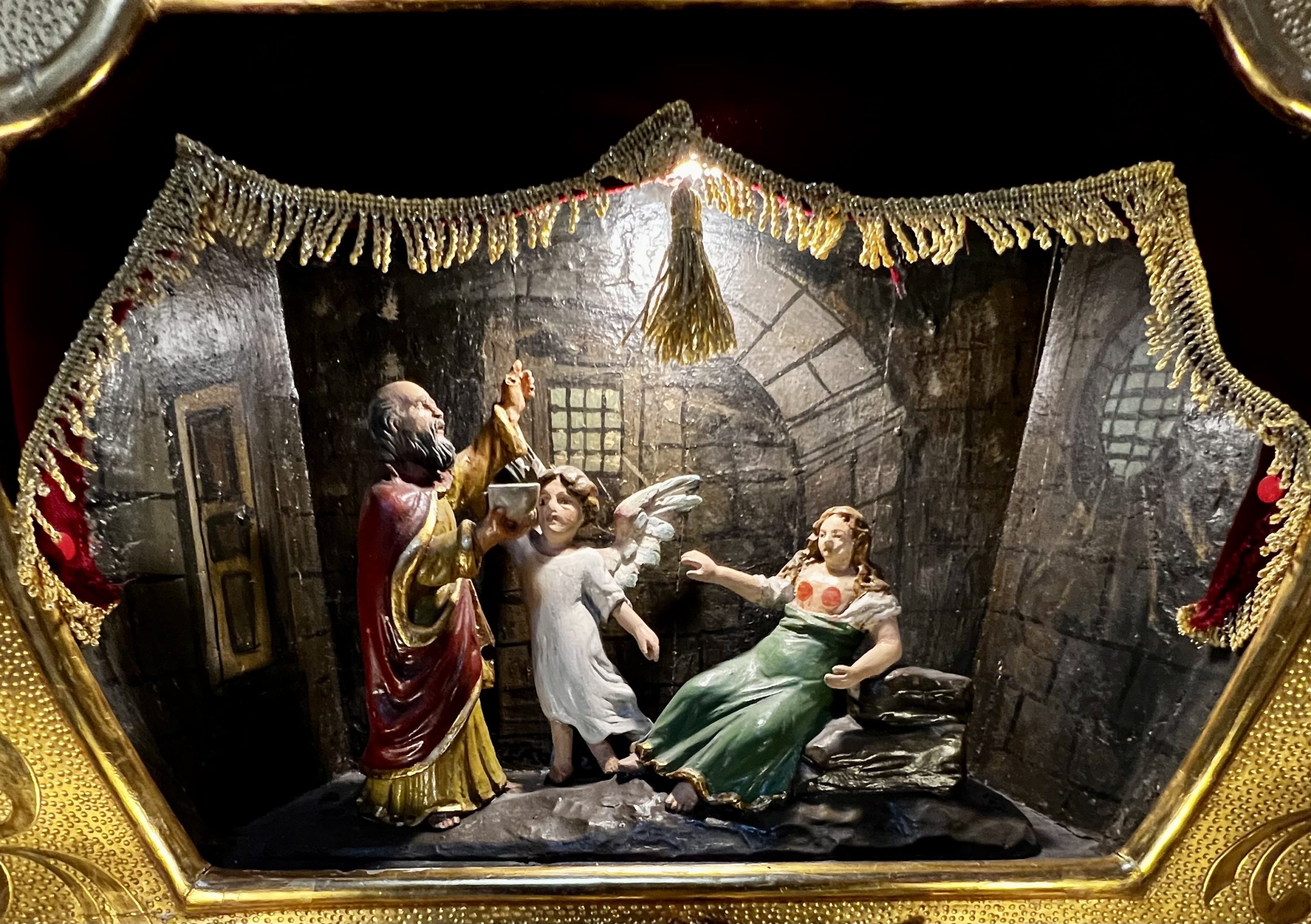
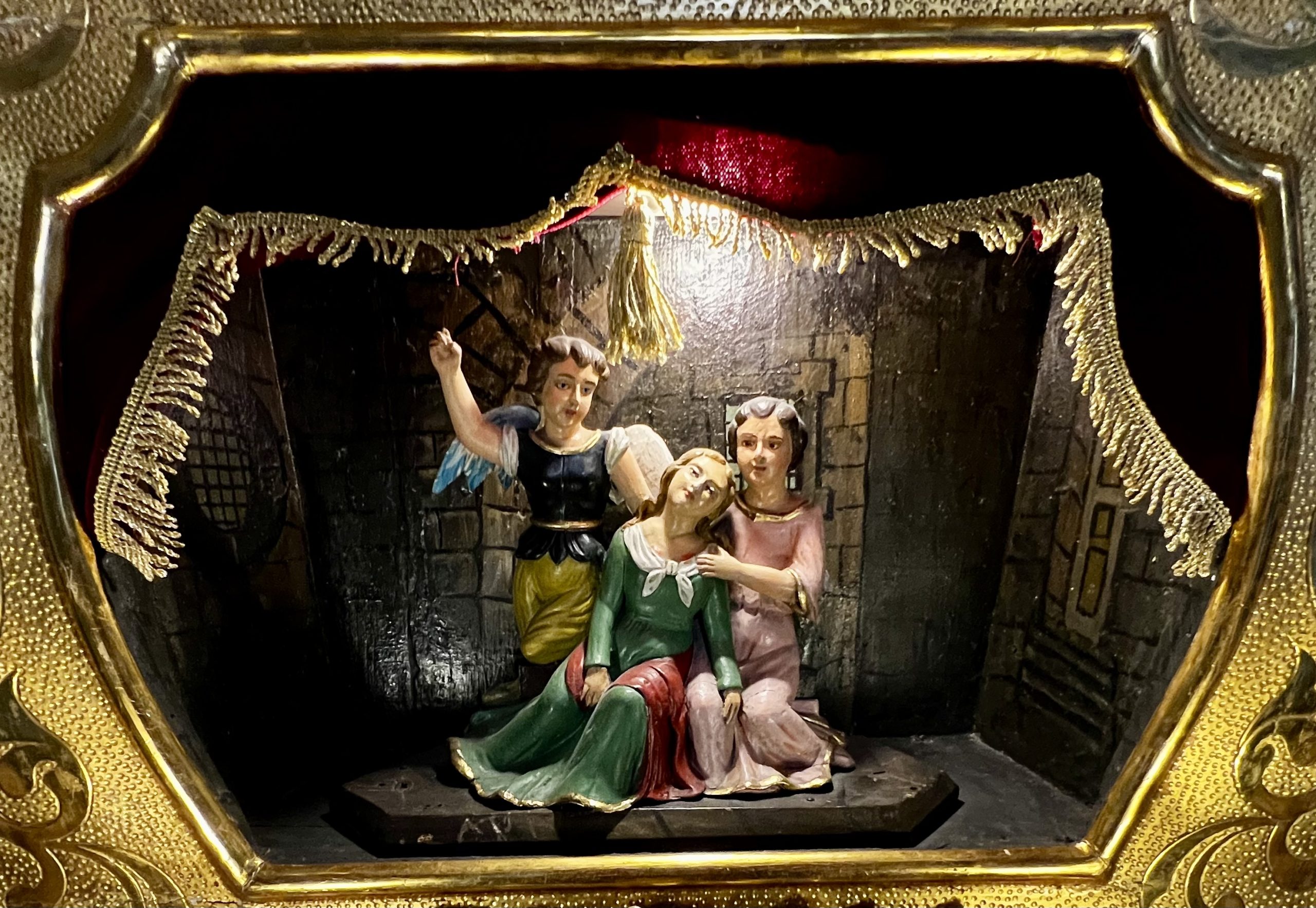
Basilica della Collegiata
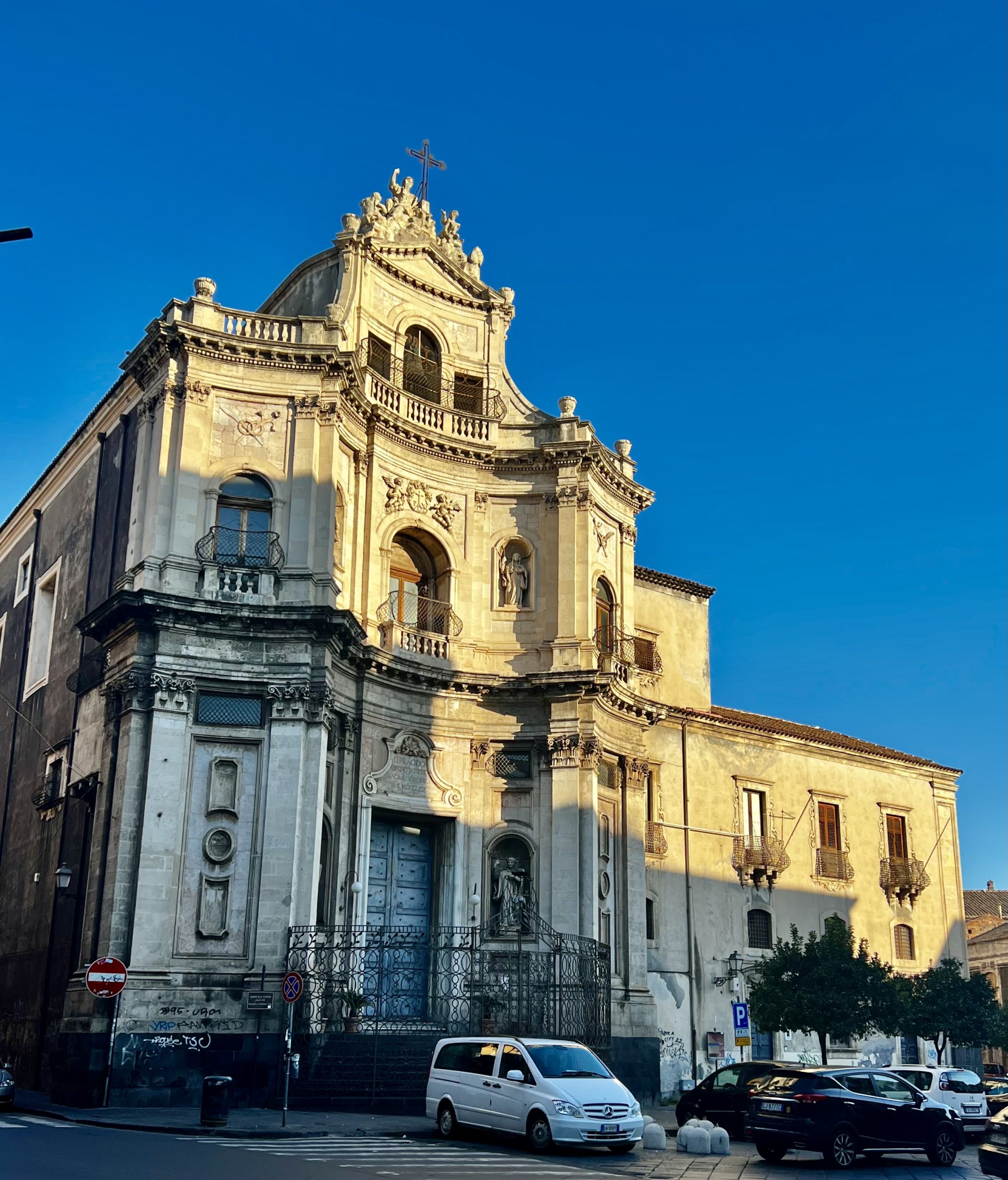
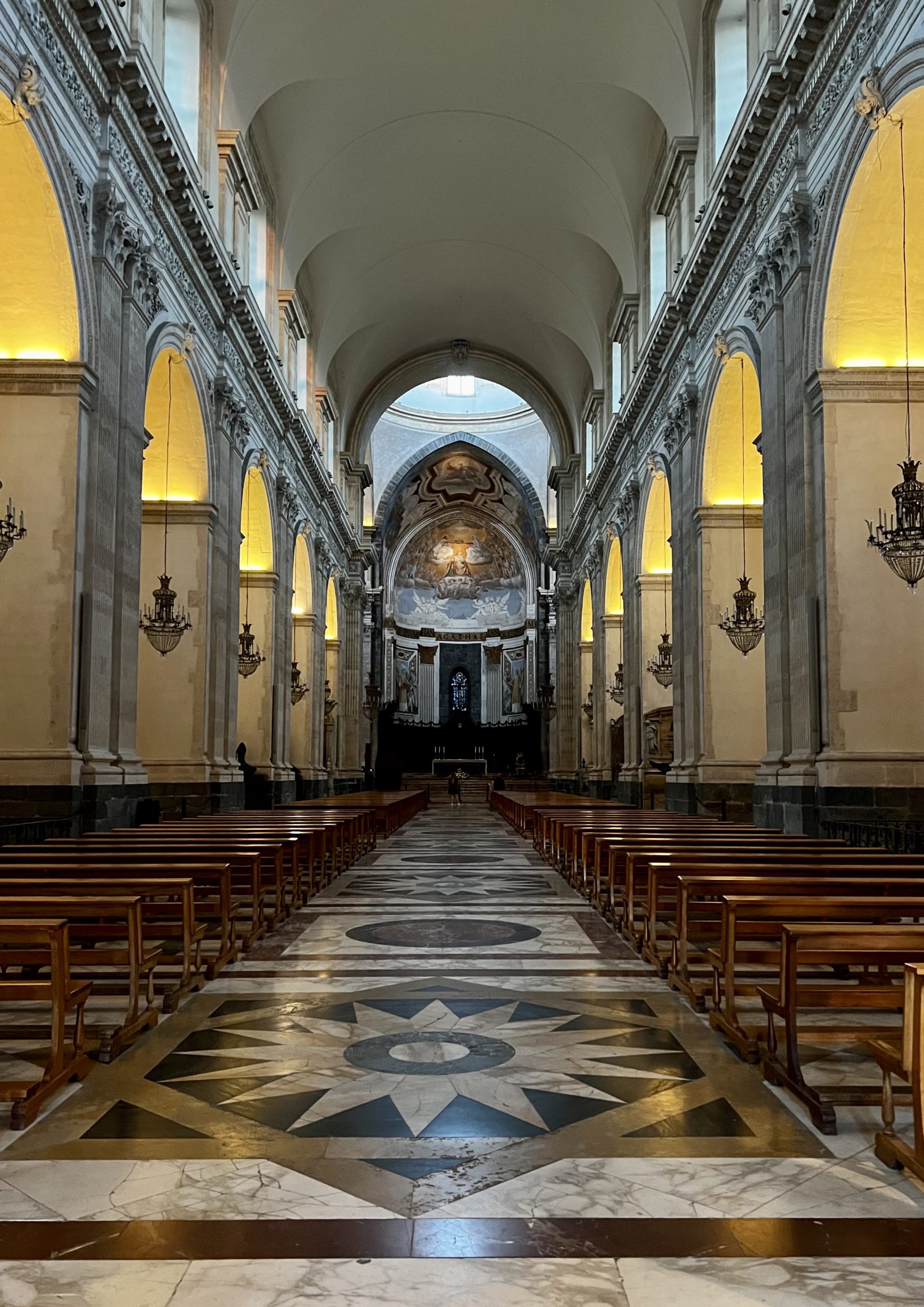
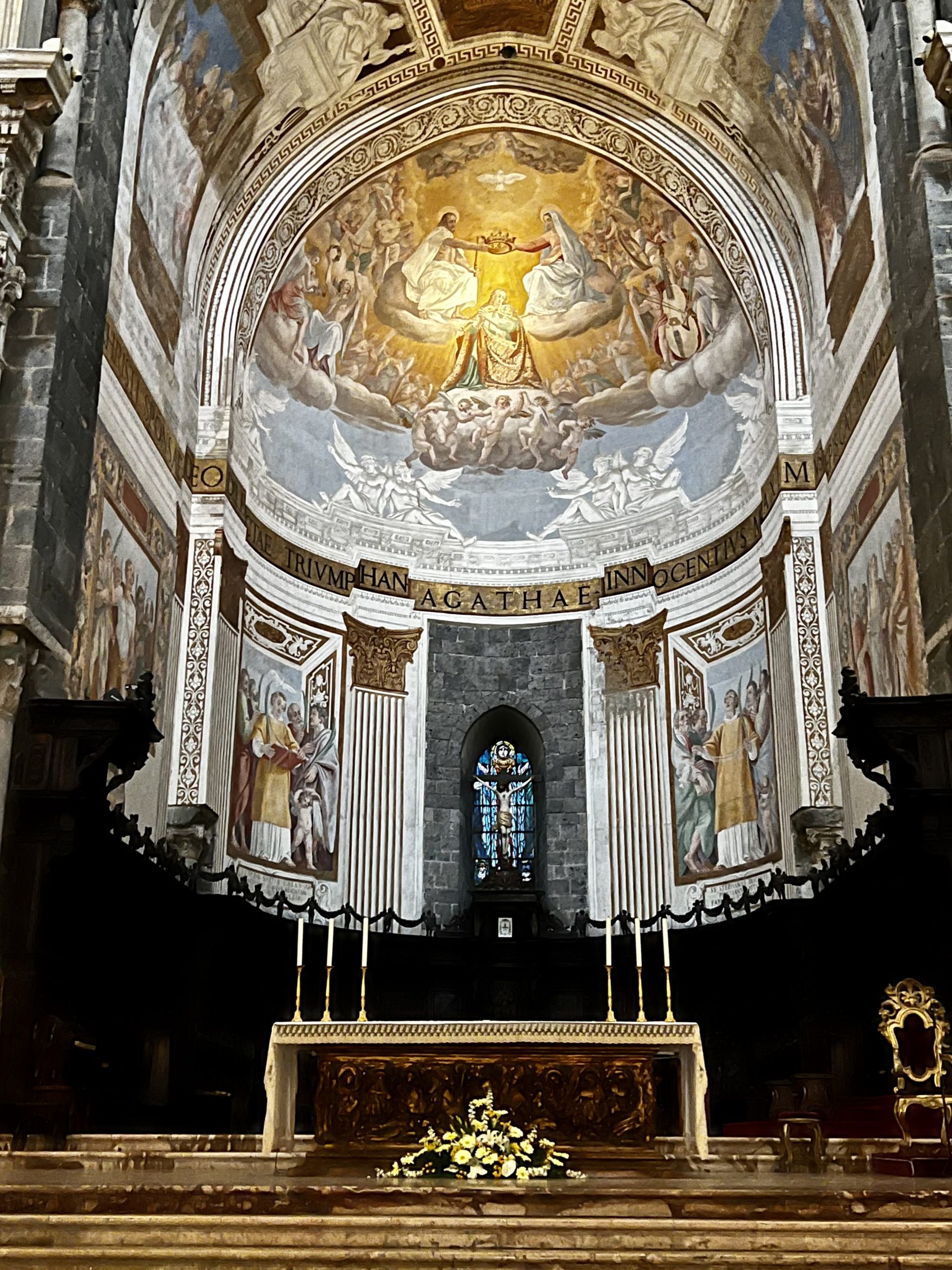
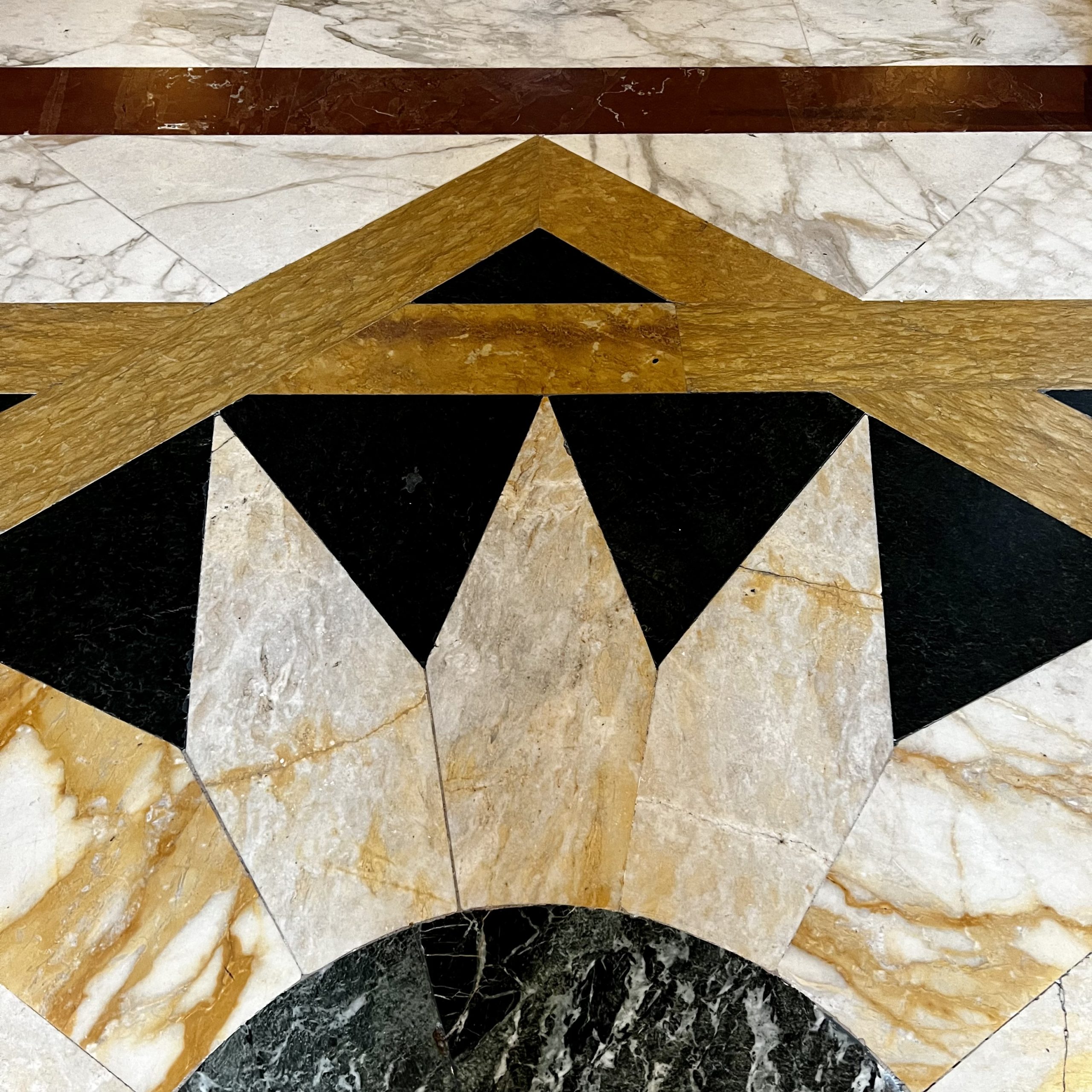
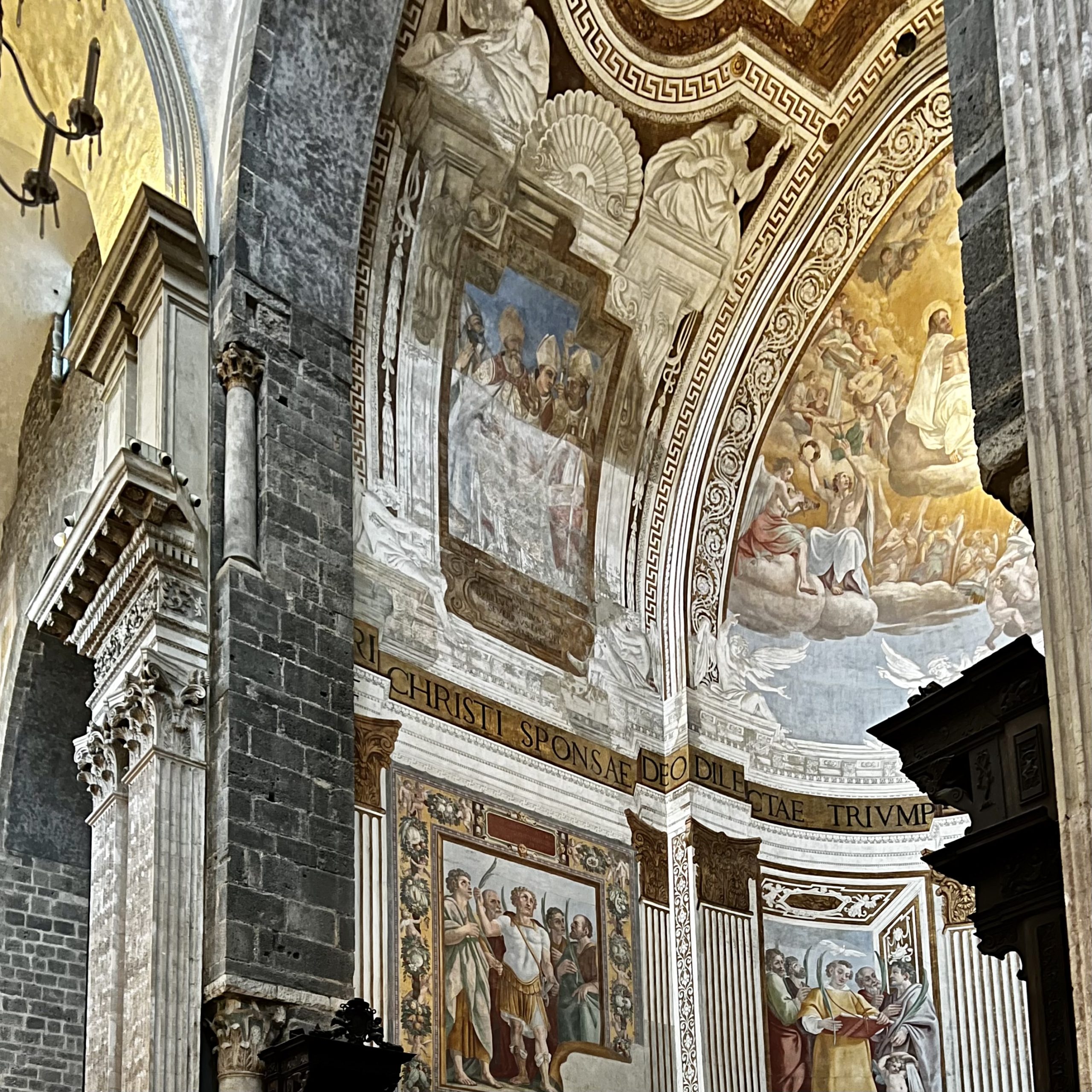
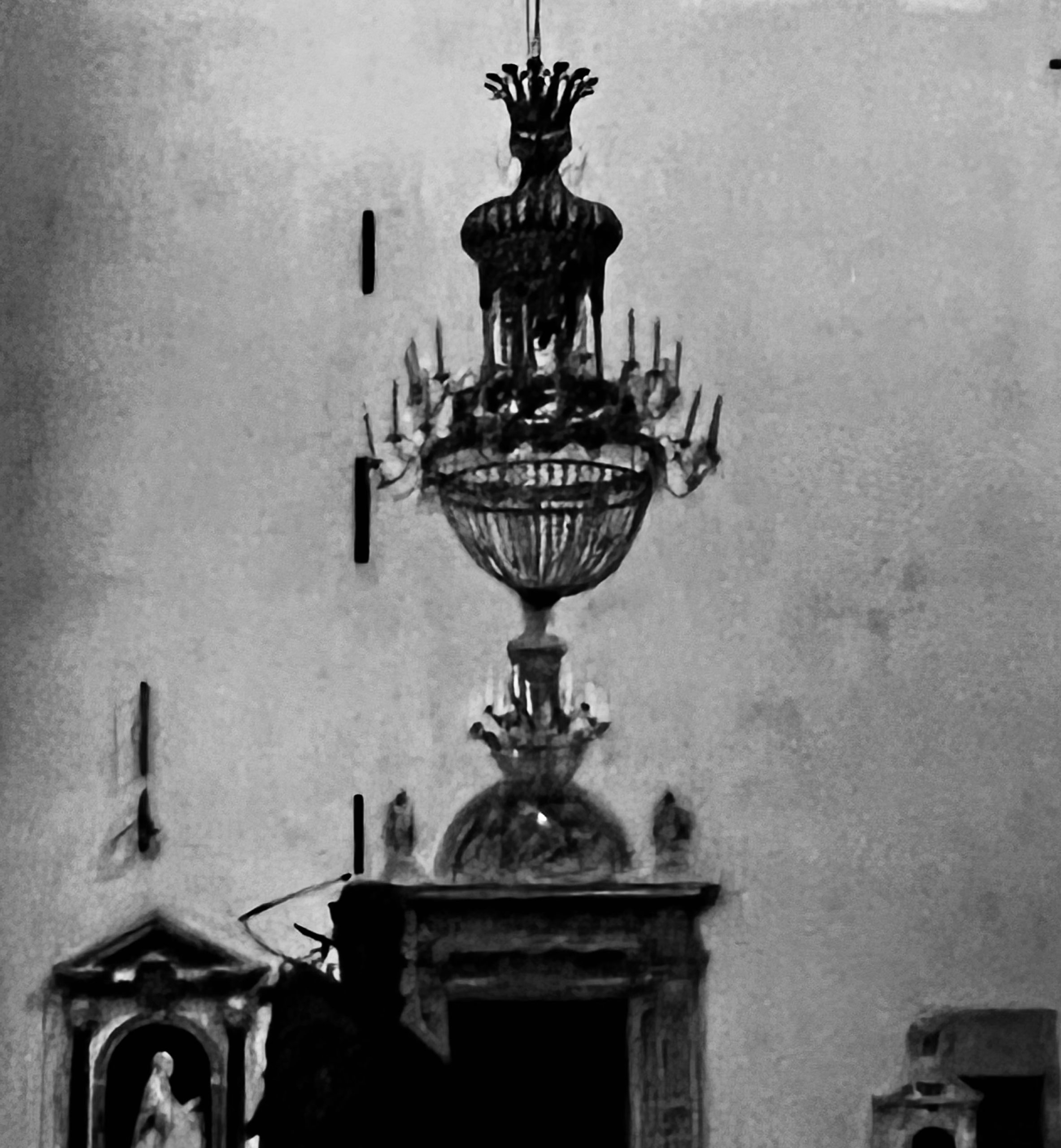
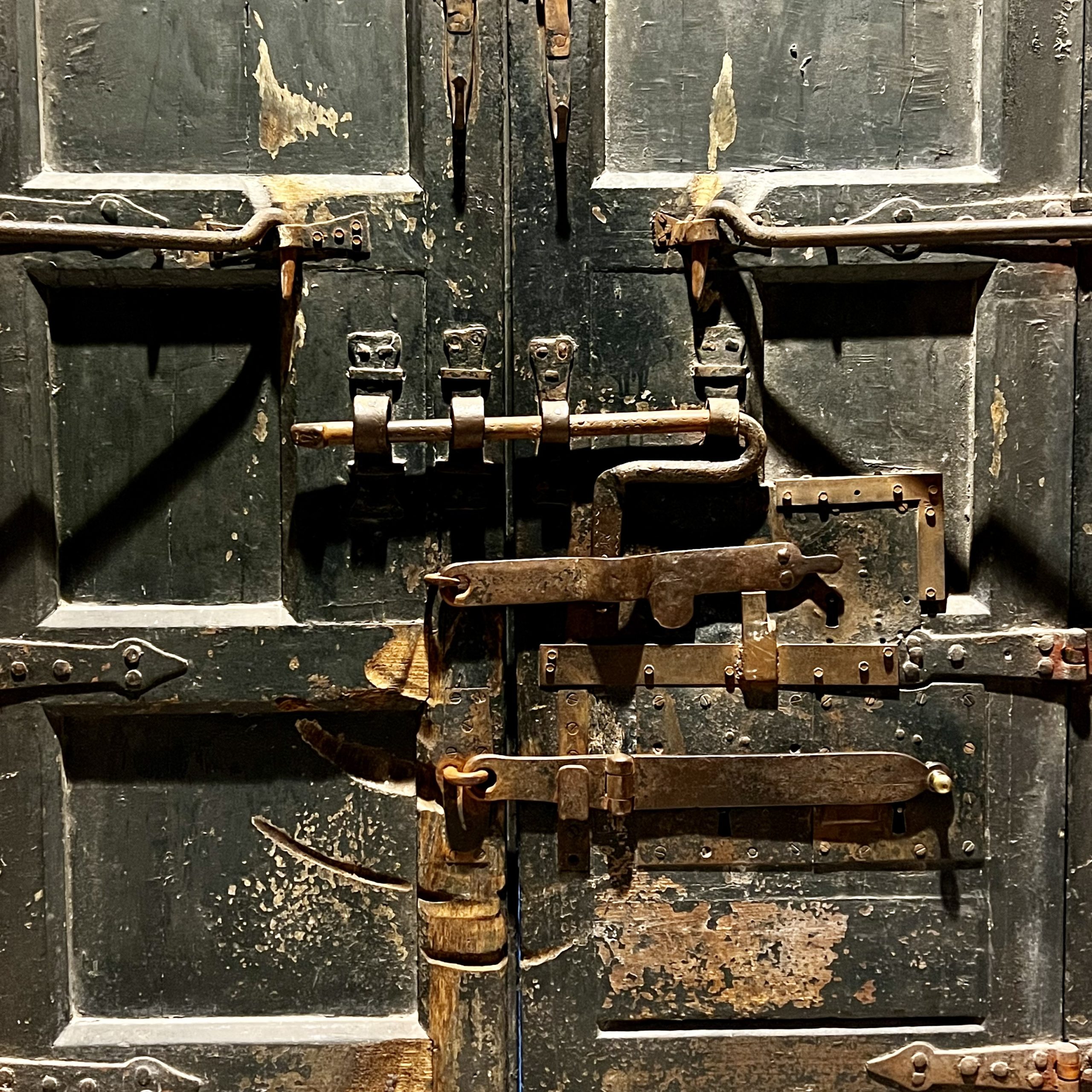
I Cibi e Le Bibete
Catania
